#it being Chinese was kind of central to the story? and it adapt that into a non Chinese history would be difficult to say the least
Text
May Reading Recap
A Memory Called Empire and A Desolation Called Peace by Arkady Martine. Rereading A Memory Called Empire was a treat - an expected treat, but it was good to find out that it lived up to memory. I liked A Desolation Called Peace a little bit less, but only a little bit - it very much followed up directly on the themes from A Memory Called Empire that I appreciated.
The Last Graduate and The Golden Enclaves by Naomi Novik. I devoured these books. I'm very surprised by this fact, since I'm not generally a "magic school" person, but there we are; Naomi Novik apparently managed to make me one temporarily. The last book was a particularly strong one and did some very interesting things with its worldbuilding that'd been set up in previous books and delivered in the last one.
Armageddon: What the Bible Really Says About the End by Bart Ehrman. I've read and enjoyed some Bart Ehrman previously, but I feel like the quality of his books has diminished from his earlier work, and this book confirmed that for me. I'm a bit of an eschatology enthusiast (the main reason I picked this up, as well as the fact that (a) it was available at the library one time and I grabbed it on a whim and (b) author recognition), but I learned very little from this book that I didn't already know.
Strange Beasts of China by Yan Ge. One of the things that made me happiest about reading this book was, unfortunately, the fact that I thought I recognized the ways in which it was referring back to Classic of Mountains and Seas, which I felt (again, unfortunately) sort of smug about. Checking the Wikipedia page for the book, apparently "Additionally, each chapter begins with a brief description of the beast which, in the original writing, was written in Classical Chinese, while the rest of the book was written in standard Chinese," which is so cool and I wish had been conveyed in the translation.
In general though, this was a good one, though I feel like the descriptive copy was a little misleading. It's less a mystery than a series of interconnected stories following a central character investigating the titular strange beasts, and learning how they connect to her life and history.
Dark Heir by C.S. Pacat. I liked this one significantly more than Dark Rise - which I guess makes sense, since a lot of Dark Rise was setting up the concept that most compels me about the series (the main character being the reincarnation of a notorious villain from the past). It still feels YA in the way that YA usually does, which isn't necessarily a bad thing if stylistically less my preference (and something I feel worth mentioning in the context of a possible recommendation). The ending was a gut-punch of a fun kind. I will be looking forward to reading the third one.
"There Would Always Be a Fairy-Tale": Essays on Tolkien's Middle Earth by Verlyn Flieger. I loved Splintered Light and was disappointingly underwhelmed by most of the essays in this collection. There were a couple that were more interesting to me, but on the whole a lukewarm response.
The Doors of Eden by Adrian Tchaikovsky. Adrian Tchaikovsky wins again!!! I don't love this one quite as much as I've enjoyed the Children of Time series, but I actually think that I liked it more than The Final Architecture series. Fascinating concept, as usual fascinating worldbuilding for societies wildly different from our own, and dedicated to themes of cooperation and unity-across-difference without it feeling preachy or didactic.
Aphrodite and the Rabbis: How the Jews Adapted Roman Culture to Create Judaism as We Know It by Burton Visotzky. This was a good one! I already was familiar with some of the information here, but not all of it, and the work around art and architecture was new to me. I felt in some ways like Visotzky overstated his case a little, but on the whole a very interesting read.
Texts of Terror: Literary-Feminist Readings of Biblical Narratives by Phyllis Trible. This one is kind of a classic of feminist Bible scholarship - a short book that does a close reading of the text of the stories of four biblical women who suffer in some way (Hagar, Tamar, the unnamed woman from Judges 19, and Jephthah's daughter). It's a powerful work, though it felt a little basic to me on the whole - probably due to the fact that it's relatively early scholarship on the subject working from a literary angle.
Nevernight by Jay Kristoff. Books with footnotes are very hit-or-miss for me - not meaning books with contextual footnotes, but books with footnotes that are part of the conceit of the text itself. Some authors can pull it off; others really shouldn't try. In this case, the author felt a bit too taken with his own cleverness to pull it off; in general I felt like this book was trying a little too hard to be edgy and voice-y and ended up just feeling kind of shallow. It was a fun read, in some ways, but not a good one, and I'm torn on if I'm going to continue reading the series. If I do, it probably won't be in a hurry.
Tolkien and Alterity ed. by Christopher Vaccaro. I was excited about this particular collection of essays (you can probably guess why) and found them mostly uninspiring in the reading. The exception was a bibliographic essay on the treatment of race in Tolkien scholarship, which proposed more use of reader response theory, a suggestion which seems fruitful to me and more interesting than debates about whether or not Tolkien/his works are or aren't racist.
Knock Knock, Open Wide by Neil Sharpson. I feel like this is going to sound more critical than I really mean it to, but this was a perfectly adequate horror novel. I wouldn't call it exceptional, and it didn't freak me out, but I read it pretty much straight through and enjoyed the experience on the whole.
Thousand Autumns: vol. 4 by Meng Xi Shi. I liked this volume more than I've liked some of the others, and am enjoying the development of the central relationship, though I feel a little like I've been bait-and-switched about the level of fucked up that it's involved. Maybe that's why I'm enjoying this one a little less than I feel like I should: I was expecting more fucked-up between the two main characters based on the initial conceit and don't feel like the novel has really delivered on that. But I am enjoying Yan Wushi getting a little more...outwardly affectionate toward Shen Qiao, and Shen Qiao's concomitant confusion about it.
This Wretched Valley by Jenny Kiefer. More than an adequate horror novel but less than an excellent one, I felt like this book relied more on gross-out horror than I typically prefer. Still, was definitely spooky, and confirmed for me that wilderness horror gets to me in a very specific way.
I'm presently reading Goodbye to Berlin by Christopher Isherwood, which I have mixed feelings about (not negative! just mixed). I'm not sure what I'm going to read after that, save that I'm now trying to alternate genres and might try to read some nonfiction, which I've been sort of off for a while. Otherwise I'll probably just end up reading Translation State by Ann Leckie, and possibly A Fire in the Deep by Vernor Vinge. But I'm really going to try for some more nonfiction next month.
34 notes
·
View notes
Text
New three body problem adaptation??? Westernized? Hm.
#I’m going to watch it because my mom wants to watch it#so we’re gonna watch it together#but let the record show I have some… reservations#I’m not against a reimagining of the story I just think#it being Chinese was kind of central to the story? and it adapt that into a non Chinese history would be difficult to say the least#and to be directed by the game of thrones directors and trust them to do something like that well?? um.#I’m glad they’re not making the characters white tho from what I’ve seen#still it’s pretty sus#but yeah my mom asked me to watch it with her and I thought she was talking about the Chinese drama and I was like !!! yeah bc I’ve been mea#*meaning to watch it forever but I was also like ??? bc it’s 30 episodes long and not dubbed afaik and it’s very ooc for my mom to want to a#*watch something that long and she has dyslexia so she doesn’t really do well with subs#then I remembered about the new one but I didn’t realize it was in production so I forgot about it#but yeah. anyway. I still need to watch the drama tho#three body#.txt
1 note
·
View note
Text
Knowing Shintoism

Shintoism is a traditional religion originated in Japan that has influenced the Japanese people’s view of the world. It is rooted in Japanese culture. Shinto means “the way of the gods” or “the way of the divine”. This is based on a belief system that everything existing in this world, whether living or not, has a spirit or also known as kami that is deserving of worship and respect. Kami can be from anything like mountains or rivers.
ITS ORIGIN
Shintoism is believed to be a religion with no founder. However, it arose with unification of Japanese people back on the 6th century BC. Shinto was created for the native religion to distinguish it from the Chinese religion and philosophy, Confucianism and Budhism. Buddhism overshadowed Shintoism as the gods were considered as manifestations of Buddha. Originally, Shinto shrines were taken care of by Buddhist priests, who mixed Buddhist rituals with Shinto practices.
In the 9th century, a new religion called Ryobu Shinto, which means the Shinto of two kinds), combined elements of Shinto, Buddhism, and Confucianism. This was established by Kukai or Kobo Daishi, with Buddhism denominating Shinto and adapting the elements of Confucianism. This is the time where Shinto became less prominent. Emperors themselves had become Buddhists and Shinto-priests became fortune-tellers and magicians.
In the 18th century, Shinto was revived as a nationalistic religion, emphasizing the emperor's divine right to rule and Japan's superiority. This is through the writings and teachings of a succession of notable scholars, including Mabuchi, Motoori Norinaga, and Hirata Atsutane. This ideology fueled Japanese military expansion before WWII.
Beliefs
The followers of Shintoism mostly believe in spiritual powers. They also believe that there are spirits living inside natural living things or places. One of the concepts they believe in is comparable to yin and yang, where everything has its opposites. These things, as they say, are meant to balance and live in harmony. Examples of these are the sun and moon, fire and water, and the world and netherworld.
Gods
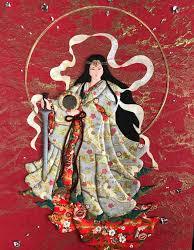
At the heart of Japanese mythology lies the story of the sun goddess Amaterasu Omikami. Amaterasu, the most revered, is considered the ancestor of the Japanese emperors. Amaterasu, also known as Amaterasu Omikami, is a superstar in Japanese mythology. Her name translates to "The Great Divinity Illuminating Heaven" – basically, the sun goddess who rules the heaven she's also known as Ohirume no Muchi no Kami, which means "The Great Sun of the Kami".
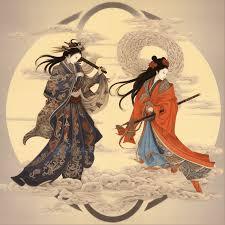
Alongside other divine spirits (kami), creation myths tell of Izanagi and Izanami birthing the Japanese islands and ancestral kami.
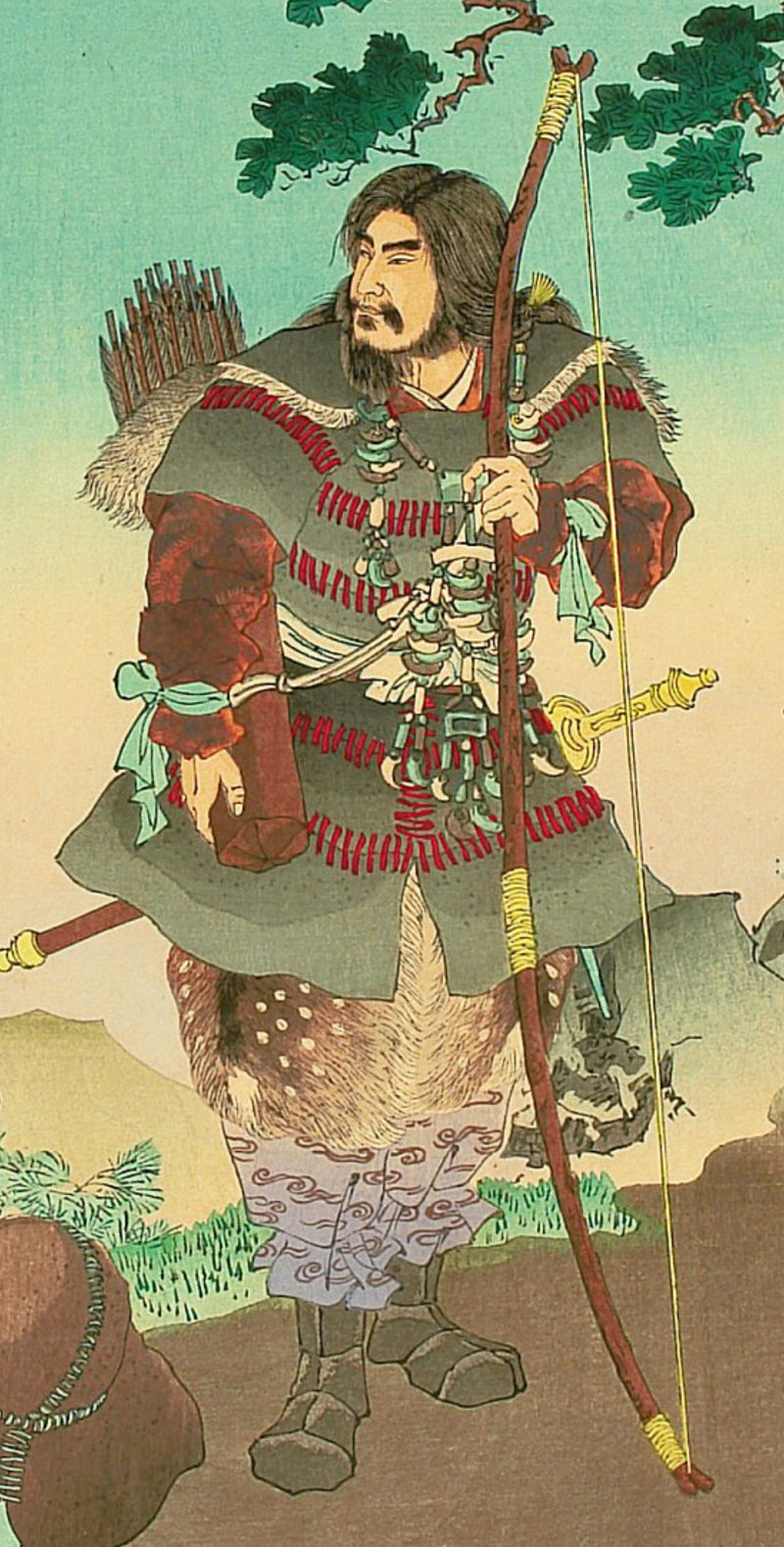
Legends recount her descendants, like Jimmu, the supposed first emperor, unifying the people.
This divine lineage is further emphasized by the Three Sacred Treasures – a mirror, sword, and jewels – passed down from Amaterasu, symbolizing the emperors' divinely ordained rule.Even today, the Inner Shrine of Ise-jingu, dedicated to Amaterasu, stands as a testament to her enduring legacy in Japanese mythology and Shinto religion.
DOCTRINES
At the heart of Shintoism lies a profound reverence for kami, the mysterious and harmonizing spirits believed to inhabit all aspects of existence. Central to Shinto belief are concepts such as musubi, the creative force of kami, and makoto, the truthful will of these divine beings. Though the nature of kami transcends human understanding, devoted followers apprehend them through faith and recognize their polytheistic manifestations. Each shrine's parishioners regard their tutelary kami as the source of life and existence, believing in their divine personalities and the power of truthful prayers to evoke responses from them. In traditional Japanese thought, truth is embodied in empirical existence and is constantly transforming. Makoto, the truthful way of kami, is discerned through every moment and encounter with these divine entities. Shinto teaches that living in accordance with a kami's will not only garners their protection and approval but also fosters a mystical power that gains the cooperation and support of all kami. However, there are some key principles and beliefs that are commonly associated with Shintoism:
Kami: Shintoism revolves around the concept of kami, which are sacred spirits or divine beings that inhabit natural elements, objects, and phenomena. These can include deities, spirits of ancestors, and even spirits of natural features like mountains, rivers, and trees.
Harmony with Nature: Shintoism emphasizes a deep reverence for nature. Nature is seen as inherently sacred, and humans are encouraged to live in harmony with it, respecting and appreciating its beauty and power.
TRADITIONS
Visiting Shrines (Omairi)
Shinto shrines (Jinji) are public places constructed to house kami. Anyone is welcome to visit public shrines, though there are certain practices that should be observed by all visitors, including quiet reverence and purification by water before entering the shrine itself. Worship of kami can also be done at small shrines in private homes (kamidana) or sacred, natural spaces (mori).

Purification (harae or harai)
It is a ritual performed to rid a person or an object of impurity (kegare). Purification rituals can take many forms, including a prayer from a priest, cleansing by water or salt, or even a mass purification of a large group of people
Kagura (Ritual Dances)
Kagura is a type of dance used to pacify and energize kami, particularly those of recently deceased people. It also is directly related to Japan’s origin story, when kami danced for Amaterasu, the kami of the sun, to coax her out of hiding to restore light to the universe. Like much else in Shinto, the types of dances vary from community to community.
FESTIVALS
Matsuri
A matsuri is a traditional festival that honors the Japanese gods with processions, dances, performances, and parades. Usually accompanied by yatai, games, and beverages, this religious celebration takes a very colorful turn. In Japan, matsuri are held throughout the year.
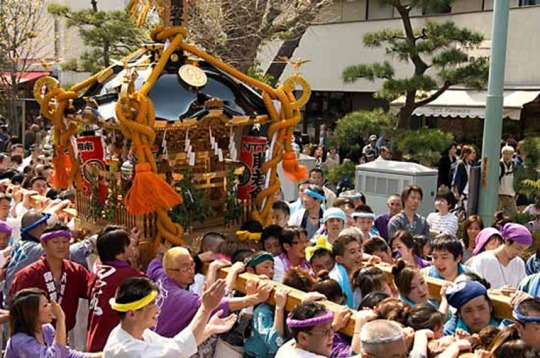
Spring Festival (Haru Matsuri, or Toshigoi-no-Matsuri; Prayer for Good Harvest Festival)
Springtime (January to May) is a period for haru matsuri, or festivals, many of which revolve around the sowing of crops. Around the nation, various shrines celebrate on different days. This springtime ceremony provides an opportunity to thank the gods for a bountiful harvest.
Autumn Festival (Aki Matsuri, or Niiname-sai; Harvest Festival)
During the late summer and early fall, there are several aki matsuri, or autumn celebrations, where people praise the kami for a bountiful crop. Around the nation, various shrines celebrate on different days. The Imperial family performed rites at the festival's initial harvest celebration to express gratitude for a bountiful crop production
Annual Festival (Rei-sai)
This is an annual celebration that falls on a certain day that is significant to the shrine hosting it. During this celebration, the local kami are paraded through the town or village in effigy while riding on an elaborate litter known as a mikoshi, which resembles a sedan chair. There are frequently musicians and dancers accompanying the procession, and the event is joyous overall. Within the shrine, more solemn rites are held.

Divine Procession (Shinkō-sai)
A mikoshi, or "divine palanquin," is frequently seen in the processions carrying a kami or an image of a kami. A common description of the mikoshi is that of a transportable altar or shrine.
The local community that is devoted to the kami of the shrine is visited by them during the mikoshi parade, which is believed to bestow a blessing onto them.
Since Shinto's roots lie in Japan's agricultural antiquity, the majority of its festivals coincide with the agricultural seasons
3 SECTS OF SHINTOISM
Shrine Shinto, is the oldest way of practicing Shinto, is like visiting special buildings called shrines to honor spirits of nature and ancestors (kami) with gifts and ceremonies. It's been around for a very long time and is connected to Japan's royal family. This type of Shinto puts a lot of importance on living in balance with nature. This sect is also called Jinja Shinto.
Sect Shinto, also known as Shuha Shinto, is a bunch of newer Shinto groups that started in the 1800s. Unlike Shrine Shinto, these groups often have a clear leader, specific beliefs, and organized structures. After World War II, even more groups popped up, with some wanting to bring back old practices, some mixing Shinto with other religions, and others focusing on healing through faith.
Folk Shinto, or Minzoku Shinto, is all about honoring kami in your daily life, especially in rural areas. People show respect to small statues on roadsides and perform rituals during different parts of the farming year to bring good harvests and keep their families safe. These traditions are often passed down from parents to children and continue within communities.
1 note
·
View note
Text
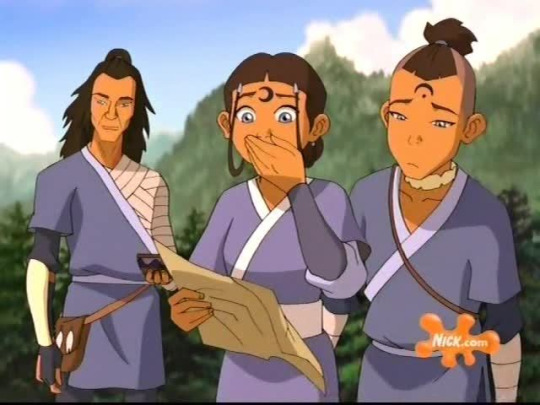
a subtle detail among the cultures in atla: the water tribes have extremely limited depictions of written and visual culture although it’s clear throughout the series the characters, at least from the southern water tribe, are perfectly literate in the lingua franca and use it in messages and on maps to communicate when necessary. As opposed to the secular uses of writing and image prevalent throughout the Earth and Fire Kingdom (used for advertising, government propaganda, and policing of citizens) symbolic depiction seems to have spiritual relevance in the Water Tribes. Even compared to the murti-style statuary representations in the air temples, the water tribe’s visual culture seems particularly ascetic.
Refined symbols are painted over the ajna (third eye) chakras during rites of passage and warrior ceremonies. Pictograms also reside on the gate in the Spirit Oasis, along bridges, and on the protective wall to the NWT, suggesting a mystic significance, even power, to these rare images. This aligns with a number of indigenous belief systems that historically restricted symbolic depiction to impermanent forms during community ceremonies (for a really complicated and interesting example of controversies around this iconoclasm in the face of colonial tides, see Hastiin Tlah, a nadleehi/non-binary spiritual leader and weaver in the Navajo Nation in the first half of the twentieth century). In fact, even much of their architecture has a temporary quality, being made of snow and ice or tents of animal hides. When you observe the significance of visual representation in the Water Tribe culture, it adds to the importance of the Waterbending scroll Katara finds in the first season. It’s not simply a book someone took from a library. Katara likely saw it more as a pillaged sacred relic that wasn’t supposed to be seen by those outside the community.
More prevalent and important to Water Tribe epistemology, especially in the moment of their history the audience finds them, is the oral tradition. Since visual representation is instilled with dangerous power, the passing of culture through stories and relationships takes a central role in their culture. “Earth. Fire. Water. Air. My grandmother used to tell me stories about the old days.” That’s the first line of the series, and those first four words can be understood as an established tradition to opening an oral story (and the written Chinese characters alongside images of benders that accompany it point us to a kind of traditional/spiritual storytelling incantation in this practice rather than simple communication). The Water tribes’ oral traditions and limits on recording knowledge, on one hand, made the water tribe’s knowledge vulnerable to erasure through means of genocide, a fact the Fire Nation takes advantage of in their sieges of the SWT--especially directed at the women who served in that community as the maintainers of spiritual knowledge, not to mention their connection, too, to healing practices. But the intangible qualities of oral epistemologies make them elusive, too. They adapt and persist within the broad community in the face of formal attempts by conquerors to eradicate individuals through acculturation and violence. It’s this quality that opens the series and makes Katara’s faith in the Avatar’s existence and return possible. Her mother gifts her life, a grandmother gifts her the stories, and she holds them, embodies them, and shepherds them out for others into the world as a form of resistance.

#atla meta#water tribe#swt#nwt#katara#also the way the show structures a lot of storytelling into the series too#it's really lovely
463 notes
·
View notes
Note
Hi, I hope you're doing well! I recently read what you shared RE: the risk of being outed for GG/DD & I appreciate your insight. Would you mind sharing your thoughts on the popularity of The Untamed in China, and the production of other BL dramas given the issues of censorship and cultural perceptions of queerness? If dramas with queer subtext are profitable, are those in power willing to "overlook" the queerness as long as it's done in a way that can be plausibly denied? Thanks for your time!
Happy 2021 Anon! I may not be the most qualified to answer the question about popularity, because I feel these answers can only be discerned at the ground level-- ie, I have to live in China, or have to have followed the the developments on China’s social media since the airing of the series. Because of time limitations, I’ve been satisfying my curiosity about the cultural aspects surrounding The Untamed and BJYX mainly by scouring the internet for news, social commentaries and opinion pieces. This weekend is the first time I do more than observe and interact directly with fans of the series and the pairings. :)
Re: censorship, and the government’s response to the onslaught of “adapted” BL dramas (“dangai”). Here’s my admittedly still very limited knowledge so far. First of all, I think it’s important to emphasise that there are three censorship issues surrounding these dramas:
1) the original works from which the dramas are adapted, which are often called IP (Intellectual property). These stories are published online, and therefore bypass the censorship board
2) the queer / BL elements of these works, in word form
3) how the queer / BL elements are handled when they are adapted for TV, which has its own set of censorship rules.
International fans often focus on 2) and 3). 1), however, is the one that I believe has got the most attention from the government — it’s a flaw in the country’s tightly-controlled speech environment. Millennials are avid IP readers; IPs are also very popular among overseas Chinese readers (ie, they can be effective propaganda tools).
I’m not sure if this is common knowledge among its international fandom, but this is something I think all Untamed fans should know:
In 2020 November, the author of MDZS, Mo Xiang Tong Xiu (MXTX) (real name: Yuan Yimei 袁依楣, was sentenced for “illegal business operation (非法經營) ”. The details of the sentence — including if she’s found guilty or not — was not disclosed (Reminder that China isn’t a transparent country). According to insiders, MXTX was sentenced to three years imprisonment, + 400,000 RMB (~61,227 USD) in fines. (Sorry, can’t find a good English link)
(This is yet another example of China’s lack of transparency.)
(For reference: the conviction rate in China’s judicial system is 99.93% in China in 2013, and 99.97% in 2018 and 2019.)
News of her arrest first spread in August 2019 (when The Untamed aired). At the time, Jinjiang, the site where her works were hosted, denied being under any investigations related to her. Still, fans continued to be suspicious as MXTX was known to be very good at advertising her works, creating merchandise etc. She hadn’t updated her site since February 2019 and remained quiet through the airing of the Untamed, when most authors would ‘ve said something, especially considering the series’ popularity.
What does it mean by “Illegal business”? Some says it means publishing their works without going through publishing houses. This has been a common practice among IP writers; all publishing houses in China are licensed through the General Administration of Press and Publication (GAPP) and have the rights to screen / censor / ban and so, to bypass publishing houses is to bypass the censorship apparatus. Some says it is a cover for her selling pornographic material. MXTX isn’t the first BL author to get jail time. Since 2017, there have been, for example, Tian Yi 天一 and Shen Hai Xian Cheng 深海先生. Some are charged for selling pornography, some also for “illegal business operations”. 深海先生 was considered to be the first BL author imprisoned for her work (she got a 4 year sentence). In 天一’s case, the author and the owner of the printing shop both got a 10-year sentence. The cover artists got a 4-year sentence. The internet shop owner who sold the books got ten month sentence. They sold 7000 books total.
Was it the pornography that hits a nerve of the Chinese government? The queerness in the pornography? The bypassing publishing houses? No one really knows for sure. The co-sentencing of the printer and seller seems to suggest the issue is with the illegal publishing, but that, again, is a common practice. So is writing BL. If no one knows what hits a nerve, it means…no one knows how to avoid it for sure.
What people do know is this: The rights to adapt MXTX’s Tian Guan Ci Fu (天官賜福) into Donghua was sold for 40 million RMB (6.1 million USD) in 2018 July. Her arrest and sentencing have not deterred the airing and popularity of the donghua, or the preparation of the live-action drama. Not only has The Untamed been highly profitable, THE China’s state newspaper, People’s Daily 人民日報 (Overseas version), dedicated an article in praise of the series, which is considered a very high honour. The article focused on the series’ artistic direction and brushed over the dangai element, described LWJ as WWX’s best friend.
The messages from the state have therefore been mixed and inconsistent. It seems to approve of the TV series but isn’t happy with the source material, which seems to support the hypothesis that as long as the romance in the original work is modified into “socialist brotherhood” (what fans of these dramas calls the modified relationship), the government is okay with these adapted BL series. However, plausible denial from the production team isn’t the same as perception from the audience, and the temporary ban on The Guardian 鎮魂 (2018), which many would call the predecessor of The Untamed as the first popular adapted BL series, seems to suggest that the censorship board would still move to remove the drama from the shelves if the audience decides that the central relationship is queer. As far as I can tell, The Untamed didn’t generate a lot of noise before its airing, and the production team never tried to sell the drama as a thinly veiled BL — in fact, it did the opposite, intentionally or not; the rumour that Wen Qing would be paired with WWX (which, according to the unofficial BTS, seemed to be a backup plan) enraged the book fans, but also provided an impression that the BL element could be completely eliminated from the product. So, when the article from People’s Daily came out within the first few days of the series’s broadcast, it could describe the relationship between LWJ and WWX a simple friendship without irony.
This isn’t true anymore with the adapted BL dramas currently in the works. They are hotly anticipated, and internet is already filled with articles describing their BL element, and the beautiful men who will/may play the leads and what these leads have done in the original IP (that has mostly bypassed the state’s censorship board). The most likely series to challenge The Untamed in terms of popularity, Immortality 皓衣行, is already building its cp (“couple”), and is doing so for both the characters and the actors. Leaked photos not only show the leads touching each other, arranging each other’s costumes etc etc on set, but them wearing couple necklaces and matching brands of clothes off work.
(The title of an article says: even BJYX didn’t do that.)
This strategy works in that it generates buzz, successfully captures the attention (and ire, in some cases) of The Untamed fans who the marketing teams see as the target audience. I’m not sure how well or long the state can tolerate this kind of “advertisements”, however, because the underlying message is this: the “socialist brotherhood” is a joke to fool the censorship board, which isn’t a message a regime so intent on demonstrating its might wants to hear. Assuming that the economic health of c-ent isn’t in such shambles that these dramas are its only hope of avoiding financial ruin, and if I must put in a guess — there have honestly been too many logic-defying policies by the Xi regime to make educated guesses — I’d imagine, after a series or two, one of the well-respected state media will call out on these publicity stunts. Depending on how harsh the critique is (and how well the already aired dramas fare), it may put an at least temporary hold on those that haven’t been aired.
165 notes
·
View notes
Text
Madam Yu is an Amazing Character, Here's Why
What's up guys it's been 57 years but I finally have another meta lmao. Shoutout to those who helped me decide on this one, and for those who wanted the Yi City analysis? Don't worry that's coming soon lol.
So Madam Yu is a really important character in MDZS, and here’s a whole meta post about why I think she’s (in my opinion) the best-written minor character in the entire story. Quick note though, this meta is going to focus on the animation specifically, because that’s my favourite version of Madam Yu (though design-wise, Audio Drama Madam Yu is best lmao). The novel and CQL versions will be mentioned, but I don’t quite remember all the novel details and I don’t really like CQL-Madam Yu, so yeah. ^^; Also, this is talking about her character writing, not her morality as a person if she were real. Feel free to disagree with the post, but here's my take on her and why I love her despite not liking her as a person.
Anyways let's goooooooo. Warning: This is pretty long cuz I have a lot of feelings about Madam Yu ZiYuan.
Madam Yu is a very well written character, easily the best written female and minor character in my opinion. From her very first appearance, we are shown much of her personality in very little time. In the novel, we are told of her fearsome reputation and why she goes by Madam Yu instead of Madam Jiang, followed by her verbal abuse towards Jiang Cheng in front of the other disciples. In the animation, she is shown talking down to the struggling disciples and scowling as soon as she sees Wei WuXian, despite smiling at Jiang YanLi moments earlier. In CQL, she is shown with a commanding authority over her husband and children, and in all three versions we’re shown how much she hates Wei WuXian. We also see her verbally abusing Jiang Cheng (Wei WuXian in the animation) in her introduction scenes, but also some degree of motherly love showed by how she adjusts Jiang Cheng’s clothes (or showing a kind smile to Jiang YanLi in the animation).
Her introduction scenes alone tell us the core important traits of her character: That she’s a fierce and prideful woman, that she is a powerful cultivator with a frightening reputation (the animation and CQL also make a point to show ZiDian in her hands in her introductions), and that she is an abusive mother despite having love for her children (but not Wei WuXian). We also instantly understand that SHE is the reason why Jiang Cheng is so uptight about saving face for the Jiang Sect when Wei WuXian never seemed to give a fuck about it (he does, but you know, teen Wei Ying lol), berating Jiang Cheng constantly about how he doesn’t seem to be doing well enough despite being the future Sect Leader. She’s kind of the epitome of the “It’s for your own good” brand of abusive parent.
There’s a scene in the animation, Episode 6, that strongly shows the discord between her and Jiang FengMian. This scene, though hard to watch cuz my favourite character is Wei Ying, is one of my absolute favourite character building scenes in the whole adaption, which makes me sad that it’s not in the other mediums (that I’m aware of). If you haven’t seen the animation, PLEASE go watch it because gods that’s my favourite version of Madam Yu.
In this scene, Madam Yu is relaxing alone in one of the pavilions late at night, and Jiang FengMian joins her. She’s civil at first, speaking without any real hostility as she asks what he was doing out so late. He offers her a gift in the form of a jade hairpin, and says he bought it because he thought it was beautiful when she asked why he bought “such a useless thing”. Jiang FengMian then tells her of Jiang YanLi and Jin ZiXuan’s arranged marriage being called off, and while she’s obviously annoyed, she still doesn’t speak with the same fierceness or hostility as she did previously.
That is, until Jiang FengMian makes a comment about how the children should not be forced into a marriage without love between them.
This is clearly a sore spot for Madam Yu, who immediately becomes hostile. Even the gentle music takes a darker turn for the shift in tone. She then makes a comment about how “Wei Ying always causes trouble”, and subtly looks back to gauge Jiang FengMian’s reaction. As soon as her husband defends Wei WuXian, she lashes out. She accuses Jiang FengMian of treating Wei WuXian better than his own son, and goes as far as to say that if Jiang Cheng had started the fight with Jin ZiXuan, Jiang FengMian wouldn’t have been in such a hurry to help him. In Madam Yu’s defense for this accusation, it’s not completely an unfair assumption, as Jiang FengMian does canonically treat Wei WuXian better, and the fact that he didn’t even try to deny Madam Yu’s accusation is very telling. Madam Yu then laughs bitterly about how Sect Leader Jiang will always be there to clean up Wei Ying’s messes before she walks away without a word, and the scene cuts to Wei WuXian watching them forlornly in the distance.
I really really love this scene as character building, because from this scene we are very quickly shown Madam Yu’s personal problems, and how she resents her unhappy marriage and blames it on the child she believes took it from her, but the scene also doesn’t hold back on showing that she’s the one being unreasonable and unwilling to talk things out because she lets anger, pride and resentment control her. We see how she was fine and willing to try and talk at first, trying to reason with Jiang FengMian about why the marriage should be carried out, because their daughter does like Jin ZiXuan, and she also wants the Jiang Sect to have good relations to the Jin Sect like the Meishan Yu Sect does due to her close friendship with Madam Jin. This shows that she does care about her daughter’s feelings and that she’s doing what she can to help the Jiang Sect. But as soon as the sore topic of the loveless marriage is brought up, she blames Wei WuXian for it and starts the argument.
From this scene, we also learn the extent of Jiang FengMian’s favouritism and how it hurt Madam Yu as well as their son, and having Wei WuXian watching their argument creates a nice transition into the next scene where he apologies to Jiang YanLi for ruining the marriage, showing that he feels guilty about the situation and most likely, the discord between his adoptive parents in general.
As the story goes on, we see that Madam Yu’s problem is basically based ENTIRELY around Wei WuXian. She gets mad at Jiang YanLi for peeling lotus seeds for him. She gets mad at Jiang FengMian for giving Wei WuXian a choice to go or not to go to the Wen doctrine. She gets mad at Jiang Cheng for trying to calm her down and berates him for not being as good as Wei WuXian. As the audience, we are more sympathetic to Wei WuXian’s point of view, and so far Madam Yu comes off as an abusive bitch who hates him for no reason.
Then after the whole XuanWu incident, we get the scene where Madam Yu storms in on Wei WuXian’s conversation with Jiang FengMian and Jiang Cheng. And holy fuck does it make her seem even more unredeemable than she already was. She comes in right as Jiang FengMian is scolding Jiang Cheng for not upholding the family values, refusing to recognize Wei WuXian’s accomplishment and saying he was bound to bring ruin to the Jiang Sect sooner or later. When Jiang FengMian asks her why she was there, after all it’s common knowledge that she doesn’t care about Wei WuXian’s injuries, she intentionally aggravates him by literally grabbing and shoving Jiang Cheng into her husband’s face, forcefully reminding him that Jiang Cheng was their “true son”. She accuses him of disliking Jiang Cheng because she was the mother, then accuses him of actually being Wei WuXian’s real father. And with that, we instantly know what he whole fucking problem is.
It’s jealousy. She had been jealous of Jiang FengMian’s feelings for CangSe Sanren this whole time, and took it out on an innocent child who lost his family at a young age. All that unreasonable, misguided resentment, all directed towards a dead woman’s son. A dead woman her husband was most likely in love with, who hadn’t even returned those feelings.
Personally, when this scene showed up, I decided, “Yup, I fucking hate this bitch.” But I will say this, this scene was also such a good character building scene. It amplified the drama, always necessary in ancient Chinese stories, and was a catalyst that led to a very important plot point: Wei WuXian’s promise to Jiang Cheng.
Time to talk about how Madam Yu actually functions as a plot-driving character!
As I just said, this scene drove Wei WuXian to make the promise of becoming Jiang Cheng’s right-hand man in the future, and it was a promise he had fully intended to keep. Madam Yu, and to a lesser extent also Jiang FengMian, were the driving force behind that decision. By now, we as the audience fully understand the core factors of Wei WuXian and Jiang Cheng’s insecurities. Wei WuXian feels like he doesn’t have a proper place in the Jiang Family because of Madam Yu, and Jiang Cheng feels like he’s never doing enough to please either of his parents. The abuse from Madam Yu and the neglect from Jiang FengMian weighs down on Jiang Cheng’s shoulders constantly as he feels unloved by both parents, meanwhile Wei WuXian believes he is what ruined the love for the family just by being alive.
To me, Madam Yu is the strongest catalyst character in the story because she drives the story’s two central characters, Wei WuXian and Jiang Cheng, in a way that both explains and exploits their insecurities and the decisions they make because of those problems. She is legitimately the primary reason why both boys are so messed up (though Jiang FengMian played no small part in that too), and we feel the effects of her actions on the two of them long after she's dead. Which brings us to the big topic of her death.
Now, let's be real, Madam Yu was still kind of a fridged woman like Wen Qing and Jiang YanLi. However, in my opinion she was at the very least a fridged woman done right. The reason for this is that both Wen Qing and Jiang YanLi were overall much weaker characters (especially in the novel) and essentially both died for no real reason except to cause more tragedy and pain for Wei WuXian to push him to his death. They both only died to set up Wei Ying's death, which is why I'm furious about that, but that's for another post (let me know if y'all want it lol). But Madam Yu's death? Her death was far, far more significant and there's a huge reason why a lot of fans, regardless of which adaptation they follow, agree that Madam Yu's last scenes were her best ones.
Now, onto the analysis of the massacre of Lotus Pier. It started with Wang LingJiao’s pompous ass waltzing in and demanding that they chop off Wei WuXian’s hand and submit to the Wen Sect, even after Madam Yu violently lashed out at Wei WuXian with ZiDian to the point where he shouldn’t have been able to move for days (the animation doesn't agree though cuz they wanted a cool fight scene lmao). This scene is very interesting for Madam Yu’s character, because you can interpret it in two ways; one that makes Madam Yu seem to hold SOME sympathy for Wei WuXian as a member of the Jiang Sect, or another that shows her tactical insight as well as her pride for her Sect and status, or even both. Later in the story, Wen Qing reveals that Madam Yu hadn’t actually hurt Wei WuXian as badly as she claimed, and we can interpret this as either her not truly wanting to cause lasting damage to Wei WuXian, or that she knew there would be a fight regardless and made sure Wei WuXian would be able to fight the Wens off along with her and Jiang Cheng. Madam Yu has previously made it clear that she believes in Wei WuXian’s skills in combat and cultivation, shown in her berating comparison of him and Jiang Cheng, so it would make sense for her to keep one of the Jiang Sect’s strongest fighters on his feet while putting on a show for Wang LingJiao in case it was enough to satisfy the Wens into leaving them alone for the time being (while probably finally having an excuse to act violently against the poor kid she hates maybe). Personally, I do think it is more of the latter, but I also don’t think Madam Yu is one to turn to physical abuse too much. Yes, she slapped Jiang Cheng in the shoulder in the novel introduction and shoves him around when she’s angry, but aside from that we have no reason to believe she actively and frequently engages in physical abuse against them as they never seem to be scared of her in that way, and Jiang Cheng was particularly horrified and scared when she did hit Wei WuXian in that scene with Wang LingJiao, so I lean towards believing it was a rare occurrence (not that emotional abuse really any better, but you know.)
Quick bonus point, I love how in CQL she just nods at JinZhu and YinZhu and they immediately know what to do, and also when she trusted them to hold Wen ZhuLiu off while she escaped with the boys. It really shows how close the three of them are despite being mistress and servants, having grown up and trained together. JinZhu and YinZhu are criminally under-utilised and I will be forever bitter about it.
In the scene that follows, the animation has my whole heart once again. Mostly because it was the best fight scene don’t @ me, but also because it showed her fighting side by side with Jiang Cheng and Wei WuXian. Madam Yu took the frontline first, taking out the large group headed towards them before letting the boys rush forward ahead of her to fight, only taking over the main fight when Wen ZhuLiu entered the fray. During their battle, Wen ZhuLiu used the body of a dead Wen to block her attack, blinding her with blood as she paused in shock at the unexpected action. Realizing she could not win the unfair fight, Madam Yu quickly switched tactics and escaped, aiming to make sure that the Jiang heir survived. I really liked seeing her fight alongside them, even though it doesn’t totally make sense with Wei WuXian’s injury, because it does give a better look into them being able to function as combat partners. It is implied that Madam Yu trained them more than Jiang FengMian did and that'sthe headcanon I go for myself, so I enjoyed that scene a lot. Then comes her biggest defining moment, her final scene with Jiang Cheng and Wei WuXian. Please note: This is 100% the animation and why anime-Madam Yu is best Madam Yu.
Madam Yu shoves Wei WuXian into a boat, screaming that this was all his fault. She knows it’s over, that there’s no chance of winning this fight, so she gives ZiDian to Jiang Cheng, and tells him, in the softest voice we’ve ever heard from her, to leave. When Jiang Cheng starts begging her to escape with them, she gives into her emotions and pulls her son in for a hug, telling him he’s a good child. Jiang Cheng is shocked, likely never having received her affection like this before. Here, Madam Yu has no reason to hide her feelings anymore, because she knows she's going to die, and she knows she cannot bear to flee Lotus Pier as she is the Jiang Matriarch and has her pride. She spares Wei WuXian, but I don't think it's because she wants him to live. I think she spared him to ensure her hot-headed son will have someone to protect him, because she knows that Jiang Cheng will absolutely try to save her, and because she fully believes that Wei WuXian absolutely will fulfill that promise. She knows Wei WuXian is loyal to the Sect, and more importantly, to Jiang Cheng. She knows that while Wei WuXian is more reckless and impulsive, Jiang Cheng is the one who reacts more emotionally. Just like herself. When demanding that Wei WuXian give his life to protect Jiang Cheng, she’s not simply giving him an order as a master to a servant. She was telling him, in her own way, that she cannot protect Jiang Cheng as she believed she was doing any longer, and entrusts that task to Wei WuXian, because he’s the only person who can do so. In this very moment, she knows she’s walking to her death, and she knows she would never see her children again, and doesn’t know if her husband would even return for her, because she genuinely believes she’s unloved by him. So, she gives her family to Wei WuXian in the worst way possible, and we see her biggest flaw of her unyielding pride also being her greatest strength as she fights to protect her family and home one last time.
This scene, this GODDAMN scene, is Madam Yu’s most defining moment as a catalyst character, because now her character has served its full purpose. It’s the moment both we as the audience, AND Wei WuXian and Jiang Cheng, see that she is more than an abusive, jealous mother. She is more than just prideful and fierce. She’s also a “real” person with emotions and problems she never managed to work out, but did truly love her son, her family, her sect. But she was also never going to be redeemed, because she refused to face her own demons even to the very end. She was such a prideful and stubborn person, that she died upright, holding on to her sword in a refusal to kneel to the Wens. And for Jiang Cheng, to see the proudest, most powerful person he knew, dead and disrespected by Wen Chao and Wang LingJiao, well, can you blame him for snapping?
Madam Yu’s presence in the story was primarily to set up the conflict between Jiang Cheng and Wei WuXian. Her problems, her abuse, caused them to develop insecurities that became their worst flaws, with Jiang Cheng always feeling inferior because she always told him he was inferior, and with Wei WuXian’s guilt and tendency to blame himself for anything that goes wrong around him. Jiang FengMian’s lousy parenting and neglect (y'all want an analysis on him too cuz he's honestly a really interesting take on a bad parent imo), which is also a form of emotional abuse by the way, shouldn’t be ignored, but Madam Yu is simply the better and more impactful character. We see how her starting arguments with Jiang FengMian push the boys into heartfelt talks, leading to the promise between them before Lotus Pier fell. We see how she set up Wei WuXian’s feeling of owing an unpayable debt to the Jiang Sect, and to her for sparing his life to protect her son. But she also wasn’t simply a plot-device-abusive character type. She is fully shown to have her own motivations, her own problems unique to her, and her own strengths and flaws in ways that a lot of other minor characters don’t get, especially in the animation. Hell, not even Jiang YanLi, a character supposedly being more significant than her, got such an in-depth character. Madam Yu isn’t a developed character by any means, but she has a lot of depth, and the impact she left on both the audience and the canon characters is felt long after she’s dead. When Jiang Cheng and Wei WuXian break things off, Jiang Cheng talks about how Wei WuXian is the perfect disciple of the Jiang Sect, and that leads to Wei WuXian leaving so he “doesn’t cause them any more trouble”. Wei WuXian cannot abandon the ideals of the man who took him in all those years ago, but he also felt that he had given his all to Jiang Cheng already in his golden core, and thus he felt that he should respect Madam Yu’s presumed wishes and stop causing more problems for them. Even far, far later on, Wei WuXian still feels guilt towards her and Jiang FengMian’s death and wishes to pay respects, but doesn’t argue with Jiang Cheng when he’s told that he doesn’t deserve even that. And honestly, we also just know who’s fault that unreasonable guilt really is.
I say Madam Yu is the best minor character, and a fridged character done right, because she genuinely felt like an actual person, an actual abusive mother but also a human being with her own complex feelings while also being an overall bad person who (arguably) needed to be out of the protagonist's life. To get a little personal for a moment, Madam Yu strongly reminds me of my own mother, who is quite emotionally abusive, though not as extreme, which might have made me feel more realism from her than most other minor characters and definitely made me think that MXTX has some personal experiences herself. The animation is the best at this, because her tones and expressions change drastically here and there when it’s needed, plus her voice actress does such an outstanding job conveying her emotions instead of just shouting everything like the novel and CQL presents it, but she maintains her pride, the most defining trait, both her greatest strength and greatest flaw, until she was no longer needed in the story. A lot of stories with such a character tend to give them an emotional breakdown before they end their arc, but Madam Yu had none of that (...except...in CQL...I guess...yeah that’s why I don’t like that one). Her death was to push the story and the motivations of two male characters forward, and I agree that it’s not fantastic given that most other women died within the same story for male plot progress, but her death actually felt, to me at least, like it also had a genuine purpose to her own character as well as the plot. Wen Qing’s death was heartbreaking to me because I love her and she is my QUEEN, but narratively pointless especially since Wen Ning came back and in the end she was only really there to perform the golden core transfer. Jiang YanLi’s death was just...utterly unnecessary man pain. I have made no secret of hating how her death was handled.
With Madam Yu, I personally really liked that she essentially was an irredeemable person that would never change herself out of pride so she almost needed to die, but was still human nonetheless. And going by MDZS’s heavy theme of grey morality, she fits the theme perfectly. And that’s why, while Madam Yu may be an abusive and terrible person, she’s easily one of the strongest characters in the whole story, right up there with Wei WuXian, Jiang Cheng, and Jin GuangYao in my opinion.
I hope y’all enjoyed this monster of a post of me rambling about the angry purple lady.
#yu ziyuan#madam yu#mdzs#mo dao zu shi#cql#chen qing ling#the untamed#mdzs meta#my meta#mdzs donghua#my posts#my ramblings#there are a bunch of things i had to leave out im mad lol#but it would've been too long#so uh#feel free to send me asks lmaooooo
146 notes
·
View notes
Text
“The World’s Literature”

Literature refers to a book to a written works or books that has an extremely lasting artistic merit. It usually means works of poetry and prose that are especially well written. It is also defined as writings proposed by people with various language. It is very important not only in today’s society but also in past generations. It helps us in critical thinking, writing, reading, and understanding. It also help to share ideas or information about our history and different cultures or languages. It is also important since it will enlighten and acknowledge about the world we are living in. Etymologically, the term derives from Latin litaritura or litteratura that means “writing formed with letters,” even though some definitions include spoken or sung texts. Some examples of literature are prose, poetry, novels, drama, short stories, and more.
It is said that literature’s definition depends on varid of time. In Western Europe prior to the 18th century, literature denoted all books and writing. Then, during the Romantic Period, a more restricted sense of the term emerged that emphasize the idea that "literature" was "imaginative" writing.
https://simple.wikipedia.org/

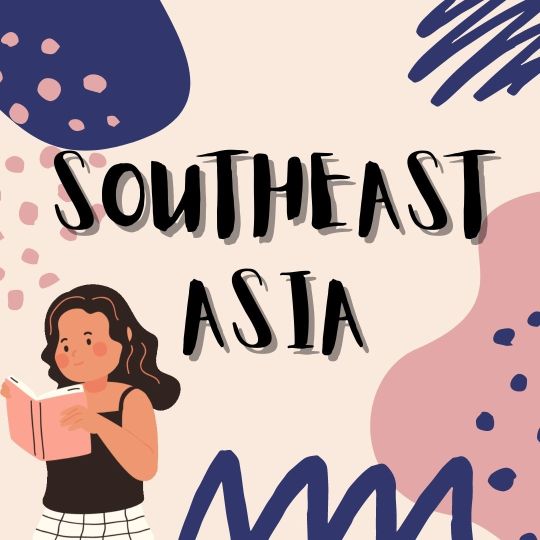
Southeast Asia is composed of eleven countries of impressive diversity in religion, culture and history: Brunei, Burma (Myanmar), Cambodia, Timor-Leste, Indonesia, Laos, Malaysia, the Philippines, Singapore, Thailand and Vietnam. Southeast Asia was known as mainland of buddhism. Its influence was a major source of traditional literature in the Buddhist countries of Southeast Asia. Vietnam, under Chinese rule, was influenced by Chinese and Indian literature. Indonesia and Malaysia were influenced by Islam and its literature. All of the countries, except for Thailand, underwent a colonial experience and each of the countries reflects in its literature and in other aspects of its culture the influence of the colonizing power, including the language of that power. On the other hand, until now poetry was the most famous form of traditional literature in Southeast Asia for centuries. However, through increased acquaintance with Western poetry, the poets of Southeast Asia broke the bonds of tradition and began to imitate various poetic types. From the point of view of its “classical” literatures, Southeast Asia can be divided into three major regions: (1) the Sanskrit region of Cambodia and Indonesia; (2) the region of Burma where Pali, a dialect related to Sanskrit, was used as a literary and religious language; and (3) the Chinese region of Vietnam.


“MYANMAR”
The literature of Myanmar spans over a millennium. Burmese literature was historically influenced by Indian and Thai cultures, as seen in many works, such as the Ramayana wgich we all knew that it is very popular. Burmese literature has historically been an extremely important aspect of Burmese life steeped in the Pali Canon of Buddhism. In addition, Burmese children were educated by monks in monasteries in towns and villages. The earliest forms of Burmese literature were on stone engravings which is also called “kyauksa” for memorials or for special occasions such as the building of a temple or a monastery. Later, palm leaves were used as paper (peisa), which resulted in the rounded forms of the Burmese alphabet.
Monks is said to be influencial in improving Burmese literature. During this time, Shin Maha Thila Wuntha wrote a chronicle on the history of Buddhism. A contemporary of his, Shin Ottama Gyaw, was famous for his epic verses called Tawla that revelled in the natural beauty of the seasons, forests and travel. Monks remained powerful in Burmese literature, compiling histories of Burma. Kyigan Shingyi (1757-1807) wrote the Jataka Tales incorporating Burmese elements, including the myittaza. When Burma became a colony of British India, Burmese literature continued to flourish. English literature was still relatively inaccessible although both English and Burmese were now taught in schools.
https://en.wikipedia.org/wiki/Burmese https://www.theatlantic.com/magazine

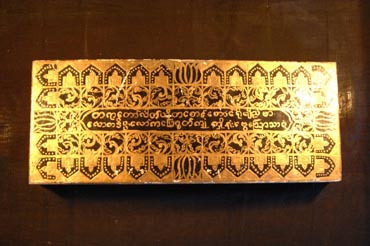
“INDONESIA”
Indonesia is centrally-located along ancient trading routes between the Far East, South Asia and the Middle East, resulting in many cultural practices being strongly influenced by a multitude of religions, including Buddhism, Christianity, Confucianism, Hinduism, and Islam, all strong in the major trading cities. Prose and poetry wrote in Javanese, Sundanese, Malay, and more, refers to a literature in Indonesia. Indonesian literature can refer to literature produced in the Indonesian archipelago. It is also used to refer more broadly to literature produced in areas with common language roots based on the Malay language (of which Indonesian is one scion). This would extend the reach to the Maritime Southeast Asia, including Indonesia, but also other nations with a common language such as Malaysia and Brunei, as well as population within other nations such as the Malay people living in Singapore. Indonesian literature is not widely known compared to works from other countries. Writings of Indonesian authors do not get translated as much as works by other authors of “Third World” countries. Literary production remained consistently high even during the repressive era of Suharto. The styles and characteristics of Indonesian literature change from time to time. They sometimes follow the political dynamics of the country and the region. In the colonial era, local authors were heavily inspired by Western novels and poetry. Many writers produced adaptations of Western fiction in their local setting or even “plagiarised” works produced by their Western counterparts. However, realism remains to be the dominant style, although sometimes it also blends with some kind of romanticism – a nostalgia for the lost past – and a sense of disillusionment that replaces it.
https://en.wikipedia.org/

“CAMBODIA”
Cambodian or Khmer literature has a very ancient origin. Like most Southeast Asian national literatures its traditional corpus has two distinct aspects or levels: The written literature, mostly restricted to the royal courts or the Buddhist monasteries. The oral literature, which is based on local folklore. On the past centuries, their literature was proposed or transmitted orally. The earliest written works took the form of Sanskrit verses inscribed on palm leaf manuscripts during the Angkorian era (9th-13th centuries). By the 11th century Buddhist treatises and jataka were being produced on a regular basis. From the 17th century onwards poems known as chbap (‘codes of conduct’) were written by Buddhist monks to teach novices about morality. These poems, written in the precise metre demanded of Khmer poetry with colourful compounds and complex rhyme patterns, subsequently became set texts in wat schools. Cambodian literature based on the contemporary world, though still inspired by classical themes, began to emerge in the mid-19th century. However, not until 1908 – with the publication of Pantan Ta Mas (‘The Recommendations of Grandfather Mas’) – did the Khmer script appear in print. On the other hand, between 1938 and 1972 over 1,000 novels were printed, ranging from detective and adventure tales to mysteries, historical novels and love stories. After independence, Cambodian literature was added to the national educational curriculum. With the establishment of the Khmer Writers’ Association in 1956, writers were recognised as making a cultural contribution in their own right and the institutionalisation of Khmer literature appeared complete. In today’s modern era, most Cambodian writers cannot live on the proceeds of their writing. In recent years, well-known writers have turned their hand to writing for television and video, where the rewards are more certain. However some formal encouragement for novels and other creative writing does exist.
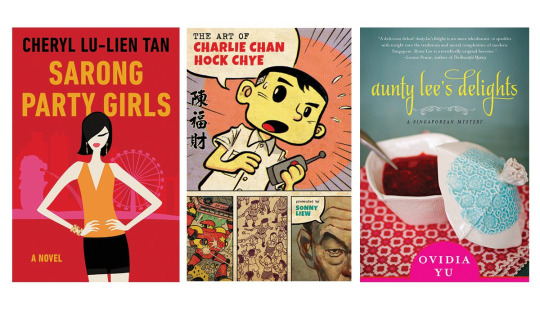
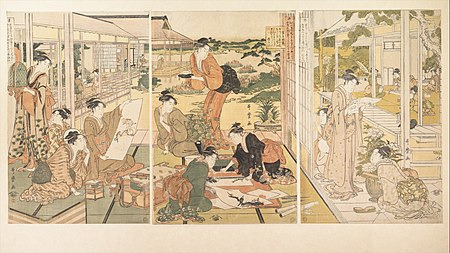

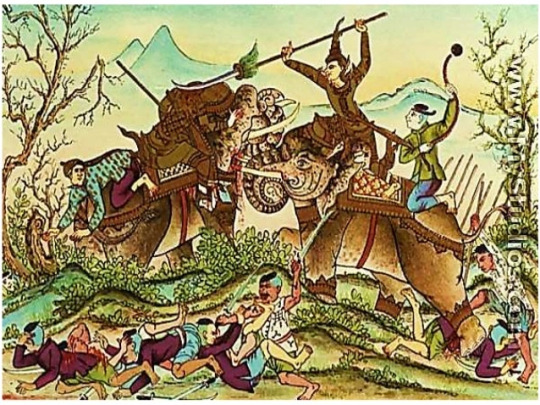
https://vietlongtravel.com/news
“VIETNAM”
Vietnamese literature has been fed by two great tributaries: the indigenous oral literature and the written literature of Chinese influence. The oral poetry tradition is purely native. Vietnamese literature is literature, both oral and written, created largely by Vietnamese-speaking people, although Francophone Vietnamese and English-speaking Vietnamese authors in Australia and the United States are counted by many critics as part of the national tradition. The Vietnamese literary tradition has evolved through multiple events that have marked the country’s history. New literary movements can usually be observed every ten years but in the last century, Vietnamese literature underwent several literary transitions. The Vietnamese literature has been rich in folklore and proverbs; tales that have been handed down from generation to generation, gradually becoming valuable treasures. The folk literature grows during the processes of activity, labour, construction and struggle of the people. It is the soul and vital power of the nation. The bond between fighting men is a theme in all the literature about Vietnam. That devotion, the key to survival, becomes the reason for fighting.

https://dnqtravel.com/vietnam https://www.britannica.com/
“THAILAND”
Thai literature was heavily influenced by the Indian culture and Buddhist-Hindu ideology since the time it first appeared in the 13th century. Thailand's national epic is a version of the Ramayana called the Ramakien, translated from Sanskrit and rearranged into Siamese verses. Another major Thai literary figure was Sunthon Phu (1786-1855), a poetic genius and well-beloved commoner. Sunthon Phu’s enduring achievement (apart from his legendary personal adventures) was to write superbly well in common language about common feelings and the common folk. Easily understood by all classes, his work became widely accepted. His major works were Phra Aphai Mani, a romantic adventure, and nine Nirats mostly written during a pilgrimage, associating romantic memories with the places he visited in central and eastern Thailand. Moving into the modern age about 1900 onward, most of the Thai readers are well acquainted with the work of Dokmaisod whose real name is M.L. Boobpha Nimmanhaemindha. She was a novelist in the pioneering age. Her best-known works were for example, Phu Di, Nung Nai Roi, Nit, Chaichana Khong Luang Naruban, etc. Many of her works have been assigned as books for external reading for students at the secondary and tertiary levels of education today.
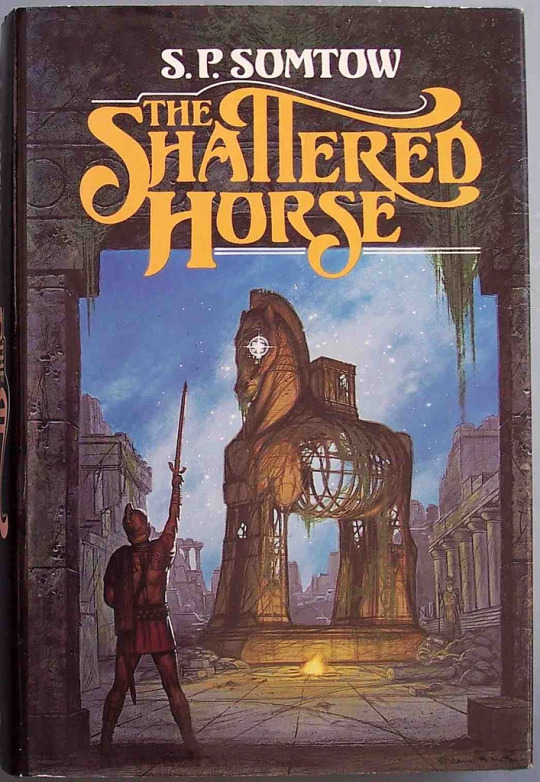

https://vietlongtravel.com/news/thailand-fact
“PHILIPPINES”
As demonstrated by The Child of Sorrow (1921) written by Zoilo Galang – the first Filipino novel in English – the literary output began with the articulation of the Philippine experience. The early writings in English were characterized by melodrama, unreal language, and unsubtle emphasis on local color. The Philippines is unique for having important works in many languages. The most politically important body of Philippine literature is that which was written in Spanish. The Propaganda movement, which included Jose Rizal agitated for independence in the 1880's and 1890's, writing exclusively in Spanish. Literatures in the Philippines has a lot of lessons that you can learn and apply to, for your daily livings. There are various Filipino writers and interpreters who define literature in their views as citizens of the Philippines. These included Jose Arrogante, Zeus Salazar, and Patrocinio V. Villafuerte, among others. Literacy is for all Filipinos. It is a kind of valuable remedy that helps people plan their own lives, to meet their problems, and to understand the spirit of human nature. A person’s riches may be lost or depleted, and even his patriotism, but not literature. One example is the advancement of other Filipinos. Although they left their homeland, literature was their bridge to their left country. The main themes of Philippine literature focus on the country's pre-colonial cultural traditions and the socio-political histories of its colonial and contemporary traditions. Some of the famous Philippine literatures are: Noli Me Tángere by Dr. José Rizal, Florante at Laura by Francisco Balagtas, Mga Ibong Mandaragit by Amado V. Hernandez, The Woman Who Had Two Navels by Nick Joaquin, Po-on A Novel by F. Sionil Jose, Banaag at Sikat by Lope K. Santos, Ilustrado by Miguel Syjuco, Dekada '70 by Lualhati Bautista.


https://en.wikipedia.org/wiki/Philippine https://www.hisour.com/philippine
“LAOS”
Lao literature spans a wide range of genres including religious, philosophy, prose, epic or lyric poetry, histories, traditional law and customs, folklore, astrology, rituals, grammar and lexicography, dramas, romances, comedies, and non-fiction. Most works of Lao literature have been handed down through continuous copying and have survived in the form of palm-leaf manuscripts, which were traditionally stored in wooden caskets and kept in the libraries of Buddhist monasteries. The act of copying a book or text held deep religious significance as a meritorious act. The emphasis in writing was to convey Theravada Buddhist thought, although syncretism with animist beliefs is also common, religious and philosophical teachings. Individual authorship is not important; works were simply attributed with a perceived religious origin raising its status in the eyes of the audience. The Lao period of classical literature began during the Lan Xang era, and flourished during the early sixteenth century. The primary cultural influence on Lan Xang during this period was the closely related Tai Yuan Kingdom of Lanna.
The epic of Sin Xay was composed by the Lao poet Pangkham during the reign of King Sourigna Vongsa and is regarded as the seminal work of Lao epic poetry. The central message is one that unchecked desires will inevitably lead to suffering. The Thao Hung Thao Cheuang epic is regarded by literary critics and historians as one of the most important indigenous epic poems in Southeast Asia and a Lao language literary masterpiece for artistic, historical, and cultural reasons. The established authors such as Outhine Bounyavong, Dara Viravongs, Pakian Viravongs, Douangdeuane Viravongs and Seree Nilamay resumed their literary activities alongside revolutionary writers such as Phoumi Vongvichit, Souvanthone Bouphanouvong, Chanthy Deuansavanh, Khamlieng Phonsena and Theap Vongpakay. They have since been joined by a younger generation of writers. In the decade following the communists' victory in 1975, the major themes treated in literature were the virtues of the communist revolution and the great strides Lao society was taking under communist party leadership.
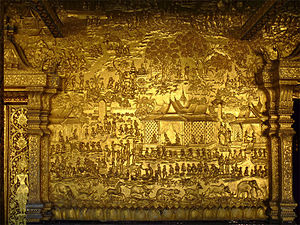

https://www.britannica.com/art/Lao-literature https://en.wikipedia.org/wiki/Literature_of_Laos
“SINGAPORE”
The literature of Singapore comprises a collection of literary works by Singaporeans. It is written chiefly in the country's four official languages: English, Malay, Standard Mandarin and Tamil. While Singaporean literary works may be considered as also belonging to the literature of their specific languages, the literature of Singapore is viewed as a distinct body of literature portraying various aspects of Singapore society and forms a significant part of the culture of Singapore. Literature in all four official languages has been translated and showcased in publications such as the literary journal Singa, that was published in the 1980s and 1990s with editors including Edwin Thumboo and Koh Buck Song, as well as in multilingual anthologies such as Rhythms: A Singaporean Millennial Anthology Of Poetry (2000), in which the poems were all translated three times each into the three languages. Since the nation-state sprang into being in 1965, Singapore literature in English has blossomed energetically, and yet there have been few books focusing on contextualizing and analyzing Singapore literature despite the increasing international attention garnered by Singaporean writers. This volume brings Anglophone Singapore literature to a wider global audience for the first time, embedding it more closely within literary developments worldwide. Singaporean writers are producing work informed by debates and trends in queer studies, feminism, multiculturalism and social justice work which urgently calls for scholarly engagement. The endeavour to establish this identity is echoed in the literature through the themes they raise.
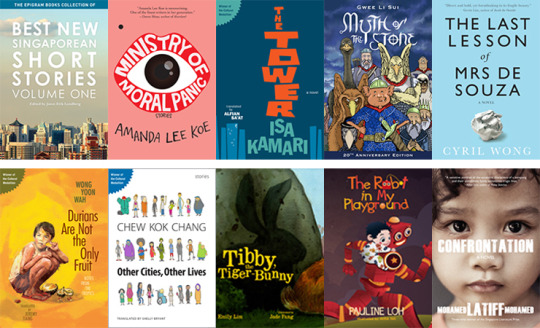
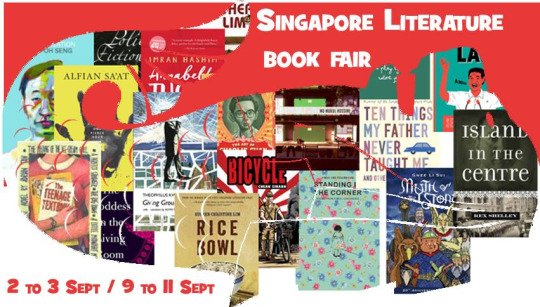
https://en.wikipedia.org/wiki/Singaporean https://www.lifestyleasia.com/sg/culture/art-design
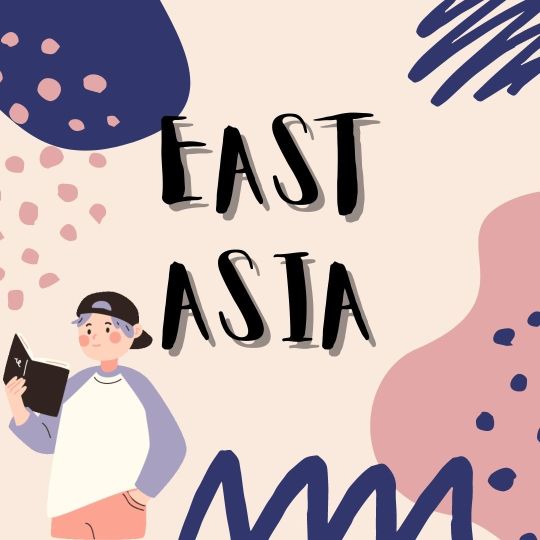
The modern states of East Asia include China, Hong Kong, Japan, Macau, Mongolia, North Korea, South Korea, and Taiwan. The East Asian states of China, North Korea, South Korea and Taiwan are all unrecognized by at least one other East Asian state due to severe ongoing political tensions in the region, specifically the division of Korea and the political status of Taiwan. Hong Kong and Macau, two small coastal quasi-dependent territories located in the south of China, are officially highly autonomous but are under de jure Chinese sovereignty. China, Korea, and Japan, however, have been uniquely linked for several millennia by a common written language and by broad cultural and political connections that have ranged in spirit from the uncritically adorational to the contentious.
https://en.wikipedia.org/wiki


“CHINA”
Chinese literary works include fiction, philosophical and religious works, poetry, and scientific writings. The dynastic eras frame the history of Chinese literature and are examined one by one. The grammar of the written Classical Language is different than the spoken languages of the past two thousand years. The most important of these philosophical writings, as far as Chinese culture are concerned, are the texts known as The Five Classics and The Four Books. Chinese poetry, besides depending on end rhyme and tonal metre for its cadence, is characterized by its compactness and brevity. There are no epics of either folk or literary variety and hardly any narrative or descriptive poems that are long by the standards of world literature. Chinese poetry, besides depending on end rhyme and tonal metre for its cadence, is characterized by its compactness and brevity. Not only was the Chinese script adopted for the written language in these countries, but some writers adopted the Chinese language as their chief literary medium, at least before the 20th century. On the other hand, the line of demarcation between prose and poetry is much less distinctly drawn in Chinese literature than in other national literatures. Chinese literary works include fiction, philosophical and religious works, poetry, and scientific writings. The dynastic eras frame the history of Chinese literature and are examined one by one. The grammar of the written Classical Language is different than the spoken languages of the past two thousand years. Water Margin, Journey to the West, Romance of the Three Kingdoms and Dream of the Red Chamber; these four novels form the core of Chinese classical literature and still inform modern culture.

https://www.britannica.com/
“JAPAN”
Japanese literature Earliest extant works are the Kojiki (712) and the Nihongi (720), which are histories written in Chinese characters used phonetically. The earliest recorded Japanese poetry is in the Manyoshu (760), which contains poems dating to the 4th century. Japanese literature has a long and illustrious history, with its most famous classic, The Tale of Genji, dating back to the 11th century. Often dark but full of humor, Japanese literature showcases the idiosyncrasies of such a culturally driven nation. Japanese literature expresses multiple components of Japanese people. It expresses their gratitude towards traditions and their sympathy towards nature. However, Japanese literature was not known outside of Japan until the 1900's.
Early works of Japanese literature were heavily influenced by cultural contact with China and Chinese literature, and were often written in Classical Chinese. Indian literature also had an influence through the spread of Buddhism in Japan. Eventually, Japanese literature developed into a separate style, although the influence of Chinese literature and Classical Chinese remained. Following Japan's reopening of its ports to Western trading and diplomacy in the 19th century, Western literature has influenced the development of modern Japanese writers, while they have in turn been more recognized outside Japan, with two Nobel Prizes so far, as of 2020. In translation many of the biggest and best names in Japanese literature are women, and these women are breaking boundaries and smashing literary traditions by tackling themes like societal structures and patriarchy, loss and isolation, and non-romantic love.

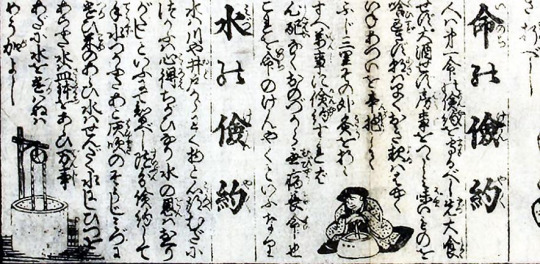
https://www.encyclopedia.com/literature https://en.wikipedia.org/wiki/Japanese
“KOREA”
Korean literature is the body of literature produced by Koreans, mostly in the Korean language and sometimes in Classical Chinese. For much of Korea's 1,500 years of literary history, it was written in Hanja. It is commonly divided into classical and modern periods, although this distinction is sometimes unclear. The stories are generally didactic, emphasizing correct moral conduct, and almost always have happy endings. Another general characteristic is that the narratives written by yangban authors are set in China, whereas those written by commoners are set in Korea. The Department of Korean Language and Literature aims at the creative inheritance and development of Korean culture through the study of Korean language and literature. There are four major traditional poetic forms: hyangga (“native songs”); pyŏlgok (“special songs”), or changga (“long poems”); sijo (“current melodies”); and kasa (“verses”). Other poetic forms that flourished briefly include the kyŏnggi style in the 14th and 15th centuries and the akchang (“words for songs”) in the 15th century. Korean poetry originally was meant to be sung, and its forms and styles reflect its melodic origins. The basis of its prosody is a line of alternating groups of three or four syllables, probably the most natural rhythm to the language. Korean prose literature can be divided into narratives, fiction, and literary miscellany. Narratives include myths, legends, and folktales found in the written records. The principal sources of these narratives are the two great historical records compiled during the Koryŏ dynasty: Samguk sagi (1146; “Historical Record of the Three Kingdoms”) and Samguk yusa (1285; “Memorabilia of the Three Kingdoms”). On the other hand, oral literature includes all texts that were orally transmitted from generation to generation until the invention of Hangul—ballads, legends, mask plays, puppet-show texts, and p’ansori (“story-singing”) texts. The origins of Korean literature can be traced back to an Old Stone Age art form that combined dance, music, and literature. Most Korean literature has the theme: Loyalty, Order, Relationships, Fear of alienation, and Fear of separation.

https://www.britannica.com/ https://en.wikipedia.org/wiki/Korean http://www.asianinfo.org/
“MONGOLIA”
Mongol literature has been greatly influenced by its nomadic oral traditions. The "three peaks" of Mongol literature, The Secret History of the Mongols, Epic of King Gesar and Epic of Jangar, all reflect the age-long tradition of heroic epics on the Eurasian Steppe. Mongolian literature, the written works produced in any of the Mongolian languages of present-day Mongolia; the Inner Mongolia Autonomous Region of China; the Uygur Autonomous Region of Xinjiang, China; and the Russian republics of Buryatiya and Kalmykiya. Written Mongolian literature emerged in the 13th century from oral traditions, and it developed under Indo-Tibetan, Turkic, and Chinese influence. The 20th century saw the publication of many new literary works in Mongolia as well as in Buryatiya and Kalmykia in Russia and in China’s Inner Mongolia and Dzungaria (in Xinjiang) regions. Until the middle of the 20th century, the Mongols and Buryats used Mongol script to write a language known as Classical, or Literary, Mongolian. The most significant work of pre-Buddhist Mongolian literature is the anonymous Mongqolun niuča tobča'an (Secret History of the Mongols), a chronicle of the deeds of the Mongol ruler Chinggis Khan (Genghis Khan) and of Ögödei, his son and successor.


https://www.britannica.com/art/Mongolian-literature https://en.wikipedia.org/wiki/Mongolian_literature
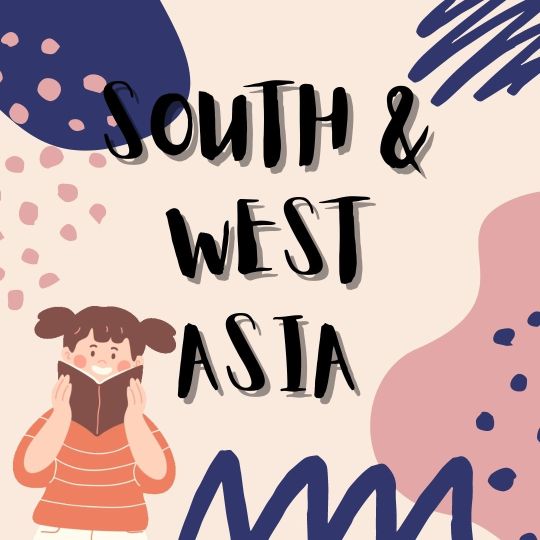
Twenty-first-century Middle Eastern (primarily Arabic, Persian, and Turkish) literature encompasses a rich variety of genres, whose maturation has profited from internal and external influences upon this literature over the past fourteen centuries. Middle Eastern Literatures, was launched in 1998 by former editorial board members of Journal of Arabic Literature. After considering the current state of research in the field, the Editors have decided a new forum for publication and discussion is required. Middle Eastern Literatures vigorously promotes the academic study of all Middle Eastern literatures. Work on literature composed in, for example, Persian, Turkish, post-Biblical and Modern Hebrew, Berber, Kurdish or Urdu language is welcomed.

“IRAN”
Iranian literature, body of writings in the Iranian languages produced in an area encompassing eastern Anatolia, Iran, and parts of western Central Asia as well as Afghanistan and the western areas of Pakistan. Literature in Iran encompasses a variety of literary traditions in the various languages used in Iran. Modern literatures of Iran include Persian literature (in Persian, the country's primary language), Azerbaijani literature (in Azerbaijani, the country's second largely spoken language), and Kurdish literature (in Kurdish, the country's third largely spoken language), among others. Iran's earliest surviving literary traditions are that of Avestan, the Iranic sacred language of the Avesta whose earliest literature is attested from the 6th century BC and is still preserved by the country's Zoroastrian communities in the observation of their religious rituals, and that of Persian. Persian literature differs from the common definition of “literature” in that it is not confined to lyrical compositions, to poetry or imaginative prose, because the central elements of these appear, to greater or lesser degrees, in all the written works of the Persians.
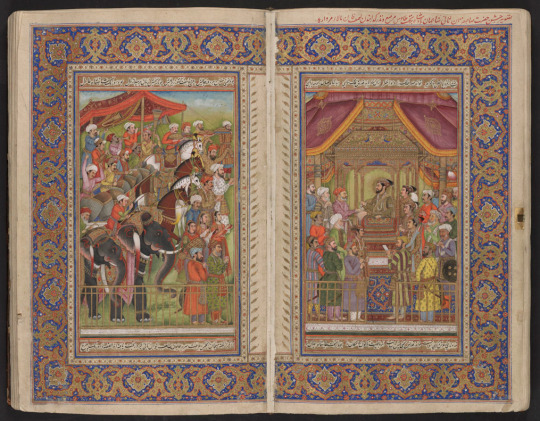
https://www.ancient.eu/Persian_Literature/ https://en.wikipedia.org/wiki/Literature_in_Iran
“SAUDI ARABIA”
Arabian Literature A written Arabic literature began to be known with the collect of Koran, the sacred book of Islam , in Arabia in 17th century A.D. with the spread of the Islamic faith into Asia, Africa and Europe, the Arabian language soon became a major world language. Arabic literature, the body of written works produced in the Arabic language. The tradition of Arabic literature stretches back some 16 centuries to unrecorded beginnings in the Arabian Peninsula. In Arabic the term for “literature” in the narrow English sense is adab, best translated by the French term belles-lettres (“beautiful letters”), which conveys the combination of the aesthetic and didactic elements found in adab more effectively than does the English term literature. The Arabic literary tradition began within the context of a tribal, nomadic culture. With the advent and spread of Islam, that tradition was carried far and wide during the course of the 7th to the 10th century. The recording of the earliest-known Arabic poetry provided future generations with examples of recitations by bards of 7th- or 8th-century versions of poems whose original composition and performance date back perhaps centuries. One of the earliest methods by which poems were categorized was that of rhyming syllable. A common theme in much of the new poetry was the use of the ghazal or love poem in praise of the poet's homeland. This was manifested either as a nationalism for the newly emerging nation states of the region or in a wider sense as an Arab nationalism emphasising the unity of all Arab people.
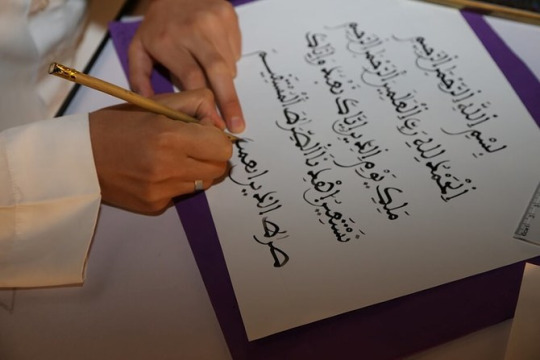
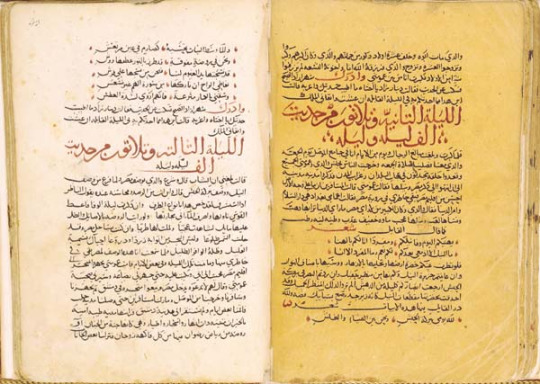
https://www.britannica.com/art/Arabic-literature https://www.slideshare.net/
“EGYPT”
Ancient Egyptian literature comprises a wide array of narrative and poetic forms including inscriptions on tombs, stele, obelisks, and temples; myths, stories, and legends; religious writings; philosophical works; autobiographies; biographies; histories; poetry; hymns; personal essays; letters and court records. Although many of these forms are not usually defined as "literature" they are given that designation in Egyptian studies because so many of them, especially from the Middle Kingdom (2040-1782 BCE), are of such high literary merit. Most of Egyptian literature was written in hieroglyphics or hieratic script; hieroglyphics were used on monuments such as tombs, obelisks, stele, and temples while hieratic script was used in writing on papyrus scrolls and ceramic pots. The Middle Kingdom is considered the classical age of Egyptian literature. During this time the script known as Middle Egyptian was created, considered the highest form of hieroglyphics and the one most often seen on monuments and other artifacts in museums in the present day. Egyptian literature traces its beginnings to ancient Egypt and is some of the earliest known literature. Indeed, the Egyptians were the first culture to develop literature as we know it today, that is, the book. The ancient Egyptians wrote works on papyrus as well as walls, tombs, pyramids, obelisks and more. Perhaps the best known example of ancient Jehiel literature is the Story of Sinuhe; other well-known works include the Westcar Papyrus and the Ebers papyrus, as well as the famous Book of the Dead. The ancient Egyptians viewed literature as a source of spiritual nourishment and a unique way to elevate style of expression.


https://www.ancient.eu/Egyptian_Literature/
http://www.touregypt.net/featurestories/liter.htm
“TURKEY”
Turkish literature (Turkish: Türk edebiyatı) comprises oral compositions and written texts in Turkic languages. The Ottoman and Azeri forms of Turkish, which forms the basis of much of the written corpus, were highly influenced by Persian and Arabic literature. The Orhon inscriptions represent some of the earliest extant writing in Turkish. These inscriptions appear on two monuments built in the early 8th century CE in northern Mongolia. Other early Turkish writing includes poetry in an 11th-century Turkish-Arabic dictionary by Mahmud Kashgari and Kutudgu bilig (“Knowledge Which Leads to Happiness”) by Yusuf Khass Hajib, which uses poetic forms from the Arabic and Persian literary traditions. During the later 13th century, what came to be known as Turkish literature was produced primarily in Mongol-controlled Anatolia. The oldest genre of Turkish literature is the heroic epic, of which the prime example is the Kitab-i Dede Korkut (“The Book of My Grandfather Korkut”; Eng. trans. The Book of Dede Korkut), which has survived in two 16th-century manuscripts. The actual date of the work is unknown. During the 17th century the popular urban song (şarkı) was taken up by court poets and musicians, and it became fashionable for courtiers to entertain themselves by performing these songs with the folkloric bağlama. In the 20th century major studies of the text were undertaken in Turkey, Russia, and Azerbaijan as well as in Europe. On the other hand, the two best-known novelists in Turkey at the turn of the 21st century were Orhan Pamuk and Latife Tekin. In very distinct ways, both expanded the scope of the novel in Turkish and opened up modern Turkish literature to readers in Europe and North America.
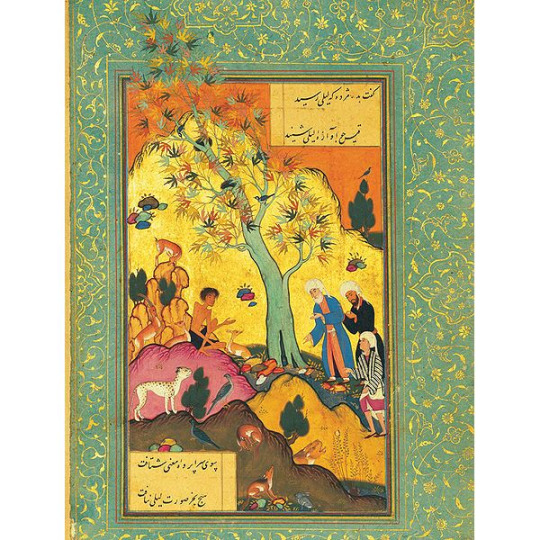
https://en.wikipedia.org/wiki/Turkish_literature
“AFGHANISTAN”
Afghan literature or Literature of Afghanistan refers to the literature produced on the Central and South Asia until Anglo-Afghan Treaty of 1919, Second Anglo-Afghan War, Emirate of Afghanistan and in the Islamic Republic of Afghanistan thereafter. The literature of Aghanistan was widely influenced by the Persians writings when it first started. Many books were, and are still during present day, written in Persian, with poetry and prose (ordinary story telling language) being the style with which they write. In the 17th century a Mughal emperor, the "Warrior Poet", wrote poetry about the Afghans struggles, and a poet Rahman Baba wrote Sufi (religious or mystical) poetry, founding what led to the modern Pashtun literature. This lead to many great books such as Shahnamah (the Book of Kings) by Fardawsi. Russian literary figures have also had a deep influence on Afghanistan's novelists, particularly 19th century Russian literature. The history of the broader Afghan literature spans between ancient as well as modern Afghanistan. The earliest works of literature were orally transmitted. It's writing system is historically associated with Arabic script. The oldest extant records of the literature are believed derivative of the Nabataean variation of the Aramaic alphabet, dating to the 5th and 6th centuries BCE, century. However, it primarily originated in the early Islamic centuries.


https://sites.google.com/site/kiterunner2nd/
https://en.wikipedia.org/wiki/Afghan_
“LIBYA”
Libyan literature has its roots in Antiquity, but contemporary Libyan writing draws on a variety of influences. However, Libya at this time developed its own literary tradition, centred on oral poetry, much of which expressed the suffering brought about by the Italian colonial period. Libya is a North African country along the Mediterranean Sea. It is bordered by Egypt to the east, Sudan to the southeast, Chad and Niger to the south, and Algeria and Tunisia to the west. The Libyan culture is a blend of many influences, due to its exposure to many historical eras. Its culture involves roots in Berber, African, Turkish and Arab cultures. Libyan literature has historically been very politicized. The Libyan literary movement can be traced to the Italian occupation of the early 20th century. Sulaiman al-Barouni, an important figure of the Libyan resistance to the Italian occupation, wrote the first book of Libyan poetry as well as publishing a newspaper called The Muslim Lion .

https://en.wikipedia.org/wiki https://bravenewlibya.wordpress.com/

Anglo - American literature, the body of written works produced in the English language in the United States. American literature was shaped by the history of the country that produced it. This history of American literature begins with the arrival of English-speaking Europeans in what would become the United States. At first American literature was naturally a colonial literature, by authors who were Englishmen and who thought and wrote as such. Most of the major authors of the period, such as Walt Whitman, Henry James, Edith Wharton, Faulkner, Eliot, Pound, Dos Passos, Hemingway, and Fitzgerald, are well represented. The core values of Anglo-Saxon literature can be seen such as values of loyalty, bravery, and generosity. The overall idea is that the characters are all going on a path pre-made by the wryd, and they must learn to accept it.


All 17th-century American writings were in the manner of British writings of the same period. John Smith wrote in the tradition of geographic literature, Bradford echoed the cadences of the King James Bible, while the Mathers and Roger Williams wrote bejeweled prose typical of the day. In America in the early years of the 18th century, some writers, such as Cotton Mather, carried on the older traditions. Some of the major theme in Anglo American Literature are: The American Dream, Loss of Innocence, and coming of age.

European literature includes literature in many languages; among the most important of the modern written works are those in English, Spanish, French, Dutch, Polish, Ukrainian, German, Italian, Modern Greek, Czech, Russian, Bosnian, Swedish, Danish, Norwegian, Finnish and Irish. Key characteristics of this period include an interest in the common man and childhood, emotions and feelings, the awe of nature, emphasis on the individual, myths, and the importance of the imagination. Western literature, also known as European literature, is the literature written in the context of Western culture in the languages of Europe, including the ones belonging to the Indo-European language family as well as several geographically or historically related languages such as Basque and Hungarian. The common literary heritage is essentially that originating in ancient Greece and Rome. It was preserved, transformed, and spread by Christianity and thus transmitted to the vernacular languages of the European Continent, the Western Hemisphere, and other regions that were settled by Europeans. The 17th century was a period of unceasing disturbance and violent storms, no less in literature than in politics and society. The great question of the century, which confronted serious writers from John Donne to John Dryden, was Michel de Montaigne’s What do I know? The 18th century was marked by two main impulses: reason and passion. The respect paid to reason was shown in pursuit of order, symmetry, decorum, and scientific knowledge. The cultivation of the feelings stimulated philanthropy, exaltation of personal relationships, religious fervor, and the cult of sentiment, or sensibility. The 19th century was one of the most vital and interesting periods of all. This period has special interest as the formative era from which many modern literary conditions and tendencies derived. Influences that had their origins or were in development in this period – Romanticism, Symbolism, Realism. The 20th century features an interest in the unconscious and the irrational was reflected in their work and that of others of about this time. This period marked an increasing sense of crisis and urgency, doubts as to the 19th century’s faith in the psychological stability of the individual personality, and a deep questioning of all philosophical or religious solutions to human problems.

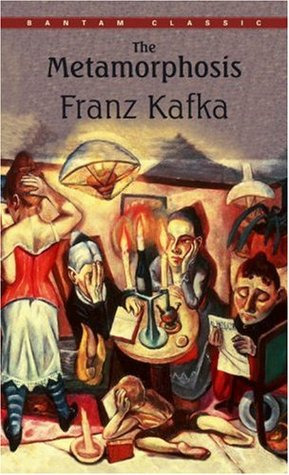
https://www.goodreads.com/genres/european
https://oxford.universitypressscholarship.com/
https://rare.library.cornell.edu/anglo-american
https://prezi.com/rtkgk7jzx59b/anglo-american-

African literature, the body of traditional oral and written literatures in Afro-Asiatic and African languages together with works written by Africans in European languages. Traditional written literature, which is limited to a smaller geographic area than is oral literature, is most characteristic of those sub-Saharan cultures that have participated in the cultures of the Mediterranean. The storyteller speaks, time collapses, and the members of the audience are in the presence of history. It is a time of masks. Reality, the present, is here, but with explosive emotional images giving it a context. This is the storyteller’s art: to mask the past, making it mysterious, seemingly inaccessible. In the riddle, two unlike, and sometimes unlikely, things are compared. Things Fall Apart (The African Trilogy, #1) Chinua Achebe, Half of a Yellow Sun (Hardcover) Chimamanda Ngozi Adichie, Americanah (Hardcover) Chimamanda Ngozi Adichie, Purple Hibiscus (Paperback), are some of the most famous literary works in Africa. The obvious thing that happens during this comparison is that a problem is set, then solved. But there is something more important here, involving the riddle as a figurative form: the riddle is composed of two sets, and, during the process of riddling, the aspects of each of the sets are transferred to the other.

The African proverb seems initially to be a hackneyed expression, a trite leftover repeated until it loses all force. But proverb is also performance, it is also metaphor, and it is in its performance and metaphorical aspects that it achieves its power. The riddle, lyric, and proverb are the materials that are at the dynamic centre of the tale. The riddle contains within it the possibilities of metaphor; and the proverb elaborates the metaphorical possibilities when the images of the tale are made lyrical—that is, when they are rhythmically organized. On the other hand, i t is in heroic poetry, or panegyric, that lyric and image come into their most obvious union. As in the tale and as in the lyric, riddle, and proverb, the essence of panegyric is metaphor, although the metaphorical connections are sometimes somewhat obscure. History is more clearly evident in panegyric, but it remains fragmented history, rejoined according to the poetic intentions of the bard. In the epic can be found the merging of various frequently unrelated tales, the metaphorical apparatus, the controlling mechanism found in the riddle and lyric, the proverb, and heroic poetry to form a larger narrative. A functional art, African poetry in its oral and written forms has addressed a variety of themes, including worldview, mysticism, values, religion, nature, negritude, personal relationships, anticolonialism, pan-Africanism, neocolonialism, urbanism, migration, exile, the African diaspora, and patriarchy. Characteristics of African literature include slave narratives, protests against colonization, calls for independence, African pride, hope for the future, and dissent.

https://www.jstor.org/stable/20024208?seq=1
https://www.britannica.com/art/African-literature

Latin American literature consists of the oral and written literature of Latin America in several languages, particularly in Spanish, Portuguese, and the indigenous languages of the Americas as well as literature of the United States written in the Spanish language. It rose to particular prominence globally during the second half of the 20th century, largely due to the international success of the style known as magical realism. As such, the region's literature is often associated solely with this style, with the 20th Century literary movement known as Latin American Boom, and with its most famous exponent, Gabriel García Márquez. Latin American literature has a rich and complex tradition of literary production that dates back many centuries. Since 1940, when Latin American literature has become an important reference in universal literature. Nowadays it continues to grow thanks to its various movements such as realism, antinovel and magical realism. Literature is an important part of Hispanic culture. Latin America encompasses a vast and very diverse area of the world. The main natural features of the region include the pampa grasslands of the southern cone, the Andean mountain range, the Amazonian rainforest, the forests and volcanoes of Central America and some of the tropical islands of the Caribbean. Romanticism, Realism, Naturalism, and Emerging Literary Trends. The Latin American wars of Independence that occurred in the early nineteenth century in Latin America led to literary themes of identity, resistance, and human rights.
The Pre-Colombian period of Latin American literature was marked by the oral traditions of Mesoamerican civilizations, such as the Olmecs, Mayans, and Aztecs. The oral literature usually had something to do with agriculture, mythology, astronomy, political history, and religion. While most of the literature was oral, the Mayans and the Aztecs created codices, folded books with a type of code and pictures that recorded many facets of their societies. On the other hand, starting in the middle of the nineteenth century, a rise in literature that fought against the colonizing force and cherished the national culture took place. Resistance literature was important because it aimed to define what the identity of a Latin American person looked like, both on an individual and national level. The Resistance literature movement is closely correlated to the Modernismo period, which we will discuss next.

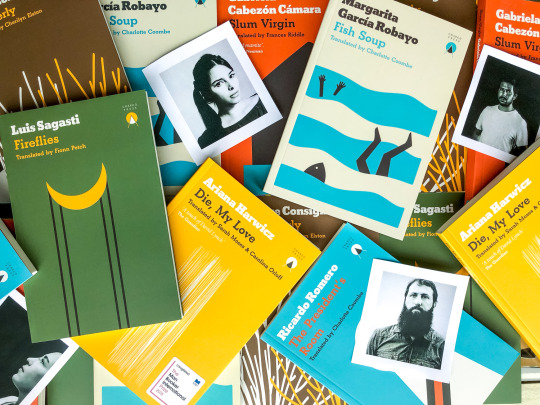
https://en.wikipedia.org/wiki/Latin https://www.britannica.com/art/Latin-American
https://study.com/academy/lesson/latin
MANZO, LOUISE GAIL S.
STEM - ST. ALYPIUS
BLOG POST_ CENLIT
2 notes
·
View notes
Text
Okay so now I’m on a Shaman King kick and I got more stuff I wanna gush about that I just think is super rad. As a young weebling one of the things that really struck me about Shaman King was how it was a rare case of Japanese faiths and mysticisms being made fairly distinct from one another in a relevant way, as much of Japanese media either picks one to focus on, or kind of melds two or more together with the implicit assumption that of course a Japanese primary audience will understand the implications of the various different terms and iconography. This is a cultural gap not generally accounted for in exporting and translating these kinds of stories for a secondary non-Japanese audience.
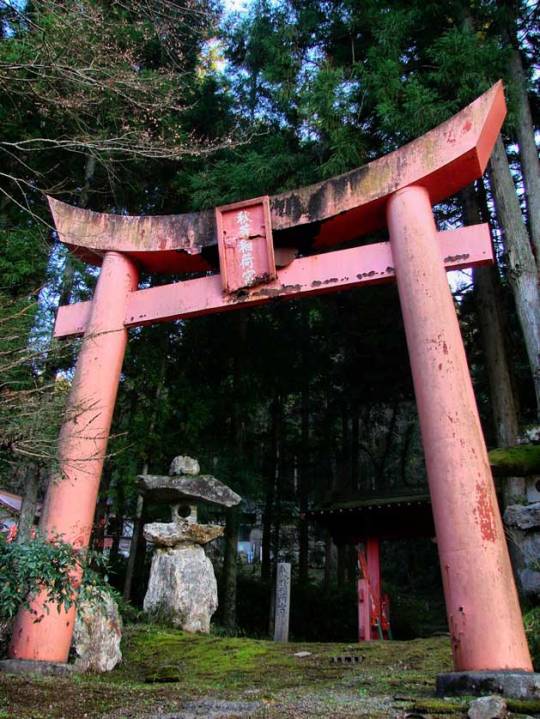

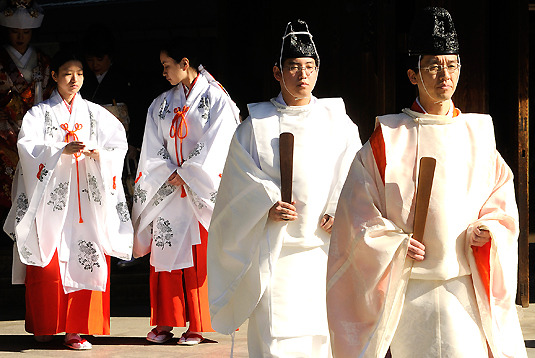
So, a little primer: Japan’s national religion is Shinto, which is in fact a long standing religion of the Japanese islands dating back to the 8th century. It is also one of the few surviving animist & shamanist religions in the world: Shamanism describes any religion in which a distinct ritual of spiritual communion is central to the practice and faith, and Animism refers to the belief that all things in the world possess their own innate spirit or essence. (as opposed to just people.) The Shinto faith is where the iconic red Tori gates come from, where the massive wound ropes belted around massive ancient trees, and zigzag Shido paper wards come from. As well as the iconic, if a little awkwardly fetishized Miko shrine maid attire is from as well.

Anna is an Itako, an eclectic form of spirit medium within the Shinto faith. Notably, the practice is in steep decline, with all of its very few remaining Itako being over the age of 40.
(As a small aside here, a minor character toward the end of the manga also practices Ushi-no-toki-mairi, which is a kind of ritual curse rooted in Shinto, but not itself core to the faith.)

However, Shinto is not the only religion prominent in or native to Japan! Second to and indeed hand in hand with Shinto is Buddhism, taken from China, which of course took it from India. Japanese Buddhism underwent various revisions and adaptations to find its home in the Japanese culture, as well as its own uniquely Japanese iterations like the now iconic Zen Buddhism which was once the subject of one (of many) waves of Japanophilia that pulled Western interests. However it's of a little less interest in Shaman King...
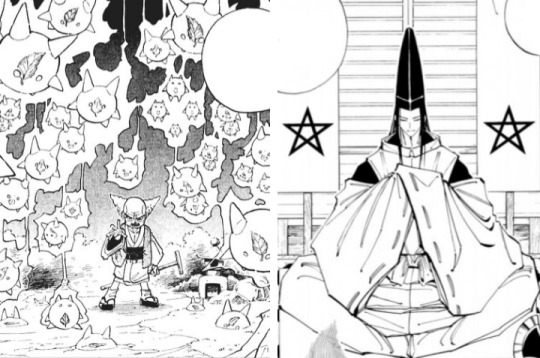
But Buddhism isn’t the only faith that Japan adopted from China. Chinese Daoism came to Japan in the form of Onmyodo. Less of a religion, Onmyo practices at the hands of Onmyoji involved various forms of geomancy, meteorology, divination and theories of the flow of energies according to the balance of yin and yang. In fact the name Onmyodo effectively translates as “The Way of Yin and Yang.”
It’s from the influence of Onmyodo that the Japanese came about the concept of the bodily energy known as Ki/Chi. At the height of their cultural influence, Onmyoji actually occupied a very powerful position in Japanese aristocracy as advisors to figures of power, and in turn many wielded almost as much if not more power and respect as the minds behind those ruling figures.
Of these mystic and proto-scientific advisors Abe-no-Seimei has endured as perhaps the most famous name among them, although largely in myth. Exaggerations of his power of prophecy and wonderworking grew so out of control that some mytho-historical accounts have tried to attribute his knowledge to magical powers inherited from alternatively either half Oni or fox-spirit parentage. His name is often dropped with little explanation in anime and manga and video games, but more often the distinct image of the onmyoji based on his character are also widespread even without mention of him in particular. The clean white robes, and tall courtly hat are most recognizable.
In Shaman King, the Asakura family that the hero Yoh and his twin brother (and series villain) Hao are born into are a family of Onmyo mystics. Yoh's engagement to Anna the Itako is a kind of political marriage to merge two powerful lineages if shamans. Bringing together two of Japan's biggest faiths. But that's not all!


Shugendo is another indigenous religion of Japan that is arguably even older than Shinto. It’s a little less seen in pop culture these days but it’s most notably represented by Tengu, the somewhat erroneously translated “goblins” of the Japanese mountains. The Tengu have two general depictions, as either a long nosed and red faced monster of a man, or a humanoid crow, both winged and adorned in traditional Shugenja attire. The small geometric hat worn forward on the head, short coat with tassels or pommels down the chest, and the ringed staff are all distinct aspects of the a traditional shugenja. In addition, pop culture depictions often reflect the faith’s worship of the mountains and forest through wild unkempt hair and beards, and the disciplinary practice of sitting beneath a cold and crashing waterfall for meditation.
Yoh's father Miki is a shugenja, a rough sround the edges aescetic without a strict background and without a dynasty of shamans behind him, reflecting the kind of onscure and neglected faith of shugendo in modern Japan. Having married into the Asakura family, he lends the twins a third powerful Japanese faith, making them both a kind of perfect merging point of Japanese religions and mysticisms!
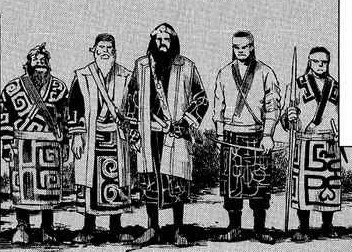
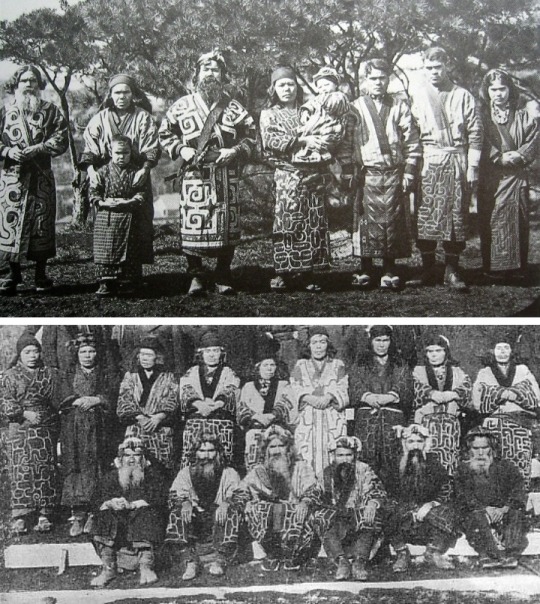
And finally, Shaman King also makes heavy reference to the Ainu peoples indigenous to Japan's northern island of Hokkaido, but not directly thru Yoh as a character. Instead they are represented in the rival and supporting hero, Horohoro. There is however A LOT to the history of the Ainu and their faith and relation with the rest of Japan and the genocide commited against them by the central Japanese. I'm not about to get into all of that here and now. It is its own monster of a post, and honestly i dont know that i even feel qualified to summarize it, let alot get into the nitty gritty. But i super encourage anyone to look up the history of the Ainu themselves and learn what you can!
#Shaman king#daoism#taoism#onymodo#onmyoji#shinto#miko#kannushi#ushi no koku mairi#itako#shugendo#shugenja
450 notes
·
View notes
Text
Mulan 2020 vs. Mulan 1998: The Differences & Similarities
https://ift.tt/eA8V8J
This article contains spoilers for Disney’s MULAN. You can read our spoiler-free review of the film here.
When Disney’s Mulan came out in 1998, American viewers had not yet seen Crouching Tiger, Hidden Dragon (2000), which was the first big wuxia hit film for American audiences. The animated feature takes its inspiration from a Chinese legend, but the film fits more into the traditional animated Disney Princess mold—and, with Eddie Murphy playing Mulan’s sidekick Mushu, the resulting film felt very American, despite its Chinese setting. Disney’s 2020 live-action film continues in the tradition of its other live-action remakes, but also leans into the legend behind the original animated feature—and draws on Chinese filmmaking to create something that honors the cartoon while standing solidly on its own. Here are all of the differences and similarities between the 1998 animated Disney Mulan and the 2020 live-action adaptation.
Swapping Genres
In the previous Disney live-action remakes I have seen (Beauty and the Beast and Aladdin), the film stuck closely to the original animated feature. While both added complexities to the characters and subplots, which helped to justify their slightly-long runtimes (and got rid of some of the handwavium that viewers accept in animated features), the resulting features felt very much like the classic animated film.
Disney’s Mulan 2020 heads in the opposite direction. Rather than keeping the film as close to the original as possible, the creative team seems to have asked what would happen if the original Mulan had come to theaters after audiences were already familiar with the conceits of the wuxia film genre. While none of the writers or director are of Chinese descent, they lean heavily on martial arts epics, especially those in the wire-fu tradition, which allows their actors to fly (or something close to it). The fight choreography (credited to Nuo Sun, Shane Yan, and Heidi Moneymaker) uses martial arts acrobatics that nod to House of Flying Daggers and Hero more than any Western film. That the cast includes martial arts film luminaries Jet Li (the Emperor), Donnie Yen (Commander Tung), and Yifei Liu, who stars as Mulan, shows a clear consciousness of the creative team that they were investing in making their film as much a martial arts epic as a remake of an animated classic. (It’s also notable that while the animated Mulan is based on a story by Robert D. San Souci, which was released as a picture book the same year the film came out, the live-action Mulan credits its source material as “The Ballad of Mulan,” the legend originally recorded in the sixth century.)
The commitment to martial arts epic is also clear in the rating. Like most of the animated features of the 1990s, Mulan had a G rating, which means the violence, while implied, is off camera. The burned village the soldiers encounter has no survivors—but it also has no bodies. The most graphic moment in the animated film is when one of the soldiers presents Captain Shang with the helmet of his father, showing that General Shang has been killed in action. In the live action Mulan, there’s no shying away from combat. People are pierced by arrows. In a beautifully well-shot combat scene, boulders smeared with burning pitch are hurled into the shield walls of the imperial soldiers, devastating them. Battlefields are strewn with bodies, and while there’s not a ton of gore, it’s these combat sequences that earn the live-action film its PG-13 rating. (One tense moment at the end of the film shows a soldier with several arrows sticking out of his hip; a moment later, it’s revealed that these arrows are in his quiver, and he’s safe. It’s the kind of humor that might not play well with a younger audience, but the bait-and-switch works beautifully inside the context of a martial arts film.)
While there are scenes in the live-action version that quote the original film verbatim (Mulan’s father’s scolding when she protests that he’ll die if he goes to fight in the army, for example), tthers are familiar, but changed: For example, the scene in which Mulan takes a bath in the lake near the camp and runs into a fellow soldier and works to hide her body beneath the water’s surface, is adjusted to be less humorous and more tense. Here, when Liu’s Mulan encounters Honghui (played by Yoson An), she stays faced away from him, and it’s clear to adult audience members that she can’t turn around, because just the slope of her shoulders would give her away.
There’s also a nice nod to the animated film when a beautifully garmented Ming Na Wen, who voiced Mulan in the animated film, presents Liu’s Mulan to the Emperor.
Mulan the Strategist vs. Mulan the Warrior
In the animated feature, Mulan is no warrior. She’s as horrible in combat, at the beginning of the film, as the majority of her peer recruits. The training montage they receive (to the tune of Donnie Osmond’s performance of “I’ll Make a Man out of You”) shows them moving from complete disasters as soldiers to a competent fighting force. Mulan, one of the weakest and smallest among them, is nearly sent home in the middle of the song, until she makes a realization about one of the training exercises. In one of the defining moments for her character, she successfully retrieves an arrow from the top of a pole, using weights representing strength and discipline as a tool to help her achieve the goal (rather than allowing the weights to drag her down). A similar moment in Captain America: The First Avenger takes place when the physically weak military recruit Steve Rogers realizes that, instead of climbing a pole, he can take out the pin at the bottom, sending the pole falling to the ground. While Mulan’s strategy still requires actual strength, it’s her intelligence that allows her to defeat the obstacle.
Live-action Mulan, on the other hand, is warned from the beginning of the film that she has too much chi for a girl. While there are deeper definitions of chi/qi/ki as described in philosophy and martial arts, in the context of the film, chi seems to represent a warrior’s energy, one that society decides that the greatest male warriors should have and that women should not. Though Mulan’s father indulges her by teaching her martial arts, and though she is clearly gifted at stunts both dramatic and small (once catching falling teacups in a stunt reminiscent of a scene in Crouching Tiger, Hidden Dragon), ultimately, her wellspring of chi will bring dishonor to her family. As a soldier, she nearly forgets that she can reveal her chi: she’s posing as a man, where her chi will be praised and valued rather than derided. When Mulan faces the challenge to make it to the top of a mountain (rather than a pole) with two buckets of water (rather than two weights), she draws on her inner chi to get through the challenge. It is this chi, this formidable skill as a warrior, that makes the live-action film’s Mulan stand apart from her animated counterpart.
She does retain her intelligence in the live-action film; the scene where she defeats the opposing army by causing an avalanche is more realistic (and possibly even cleverer) in the live-action version. But it’s ultimately her reputation as the best warrior in her unit that enables her to lead, and earns their respect, despite her gender.
But Where’s Mushu in Mulan?
The relationship between Mushu, and the parallel between Mulan’s quest to earn respect for her true self and Mushu’s desire to regain his place among the honored guardians of the Fa family, is a central part of the animated film’s story. But Mushu also exists primarily for comic relief (and possibly to sell stuffed animals and lunch boxes). Nominally there to help Mulan succeed, Mushu is frequently the reason Mulan gets into trouble. He and a lucky cricket are the ones to set off cannons, alerting the enemy army to the location of the imperial soldiers. It’s Mushu’s fault that Mulan gets off on the wrong foot with many of her fellow soldiers. And while Mushu ultimately helps save the day, Mulan often rises to heroism despite, not because of, her companion.
That comic relief isn’t really needed in the more mature tone of the live action film. Mulan’s failures are her own; humor comes from her interactions with her fellow soldiers (who share names and similarities with some of the animated cast, but are ultimately less caricatured—which makes them more realistic, yet less distinct). Humor and tension both come from the audience and Mulan knowing her secret while the others don’t; at times, this is played for laughs, and at times, it heightens the drama, because the stakes are high: if Mulan’s secret is revealed, she will die.
Instead of using Mushu as a foil, the live-action Mulan converts an animal character from the animated film, Shan Yu’s hawk, to a woman who, like Mulan, has “too much” chi for her gender. Xianniang, played by Li Gong, is disparaged as a witch. She was rejected by her family, her village, her nation. The one man willing to take her in and accept her and her powers (which allow her to do far more than fight: she can shapeshift, steal other people’s forms, and direct swarms of bats) is Böri Khan, leader of the Rouran Khaganate. Böri Khan’s soldiers fear Xianniang and say they’d be better off without her, until Böri Khan promises that he is hers to command—no better, he says at another point, than a dog.
When Mulan and Xianniang first encounter each other, Xianniang sees through her disguise immediately. Accusing Mulan of being a liar, Xianniang ultimately forces Mulan to see that she must be honest, admitting her lie, to be her true self, even if it means execution by her own comrades. When Mulan has been thrown out of the army for her gender, Xianniang faces her again, urging her to join forces—Xianniang insists there is no place for women like them in a man’s world, but that together, they could change things. Once Mulan has proved Xianniang wrong, convincing her commander to entrusts her with a role of leadership, it’s Xianniang who clears a path for Mulan to become the hero that Xianniang wishes she herself had been able to become. That redemption arc has a far deeper resonance in the story: unlike Mushu, Xianniang was not being punished for her mistakes, but for simply being her true self. And unlike Mushu, Xianniang is willing to sacrifice everything so that Mulan can rise (symbolized by the phoenix, another Mushu replacement who appears in useful fashion through the film and never causes Mulan any trouble).
Trading Songs for Stunts
While many audience members were horrified to learn that the original musical numbers would be cut, there’s really no place for them in the tone of the live action film. The comical number “A Girl Worth Fighting For” is replaced by a similar conversation between Mulan and her fellow soldiers at mess. The themes from “Reflection” and “I’ll Make a Man Out of You” appear in the orchestration behind the action, blending in reasonably well with the more Chinese-influenced score.
In exchange, however, audiences get amazing stunts and martial arts sequences. Xianniang uses her sleeves as whips, and the Emperor uses hanging banners to defeat archers attacking him. (The Emperor does get to do his own fight scene, which is important because it would have been a waste to have the amazing Jet Li in the film and not allow him to fight.) Cricket, one of Mulan’s fellow soldiers and a new addition to the cast, shoots a bow behind his back, firing two arrows into enemies on either side of Mulan. Commander Tung and Mulan have a gorgeous spliced sequence of martial arts forms following a discussion about chi. And Mulan fights Böri Khan in a construction scaffold, with gorgeous cinematography that amplifies the multi-tiered combat.
Ultimately, the live-action film provides plenty of nostalgic nods to the animated feature, while digging deeper into the heritage of the legend. The resulting movie is its own original piece, building upon a strong foundation of wuxia film while remaining true to the Disney classic.
The post Mulan 2020 vs. Mulan 1998: The Differences & Similarities appeared first on Den of Geek.
from Den of Geek https://ift.tt/3h6OEpB
2 notes
·
View notes
Text
V Watches MagiReco - Season 1 Review

*Spoilers for Magia Record Anime*
If you’ve been been following my weekly reviews on the Magia Record anime, you’ll know that my “reviews” are really more like general impressions, thoughts, and fangirling as I mentally recap the episode after my initial viewing.
For this final review of the season as a whole, however, I’m actually going to try and make it more like an actual “review" and discuss each aspect of the anime separately. I’ll be splitting my points of discussion into individual sections and giving each a score out of 10, before rounding it all off with an overall score/grade.
Oh, not sure if this needs to be emphasised, but these are just my opinions! You may agree and you may disagree, and either way is cool! (・ω・)b
Before I begin, I just want to make it clear that one very, very important thing to keep in mind when watching and reviewing MagiReco is the fact that it isn’t a direct continuation of PMMM. So many people find themselves unable to enjoy the series because it’s “not the same” or “not the PMMM they know” etc. But it isn’t and was never intended to be. It’s a spin-off, not a sequel. To expect a spin-off to have the exact same impact and level of quality as the original is unrealistic to begin with, not to mention that although comparisons will be inevitable, the original PMMM anime has reached a legendary status where it isn’t really fair to compare anything with it xD
(And for the PMMM fans who are unhappy with MagiReco simply because it isn’t “dark enough” and there isn’t enough “suffering”, all I can say is that if a lack of darkness and suffering automatically means the show is bad, then this one just isn’t for you. Dark doesn’t equal good, and suffering isn’t essential. MagiReco is not intended to have the same tone as PMMM, and those elements do not entail everything that defined PMMM to begin with anyway.)
For these reasons, I’m going to try my best to review the MagiReco anime as a standalone piece and try not to make too many comparisons with PMMM, unless explicitly necessary. Also, as a game player, the inevitable curse of “expectations” was a major issue I needed to overcome when watching the anime. I will therefore also try my best to look past these expectations and try to see the anime as a story of its own. However, there will be discussions on the changes that the anime made and how I feel the anime did in adapting the game story for a television series.
Anyway, sorry for all the additional rambling. Let’s jump into the review before I lose everyone’s attention ^^;;
Plot: 8/10
One thing I love about the MagiReco plot is that they take the original world and concepts of PMMM and actually come up with a whole new story. It’s familiar yet different, and a perfect way to please the nostalgic fans while also offering something fresh. The PMMM world always had a lot of potential to explore other girls’ stories, considering how many Magical Girls there are, and it’s nice to meet a whole new cast of characters with their own story that’s still set in the same world and uses the same concepts we’re familiar with.
I think my favourite thing about the MagiReco plot, which is the same both in the game and in the anime, is the idea of the Wings of Magius. Any story that involves Magical Girls somehow trying to undermine or overthrow the Incubators’ system always has a lot of potential, in my opinion, and it’s a creative way to delve even deeper into PMMM’s unique take on the magical girl genre without being repetitive. But the key to what makes the Wings of Magius so compelling and intriguing as antagonists is the moral issues it raises. The grey morality going on with the Wings of Magius is not too different from the issues presented by Kyubey, and these kinds of moral debates get the audience really thinking about what’s right and what’s wrong, what’s good and what’s evil. The Magius are presented as being very similar to the Incubators in many senses--sometimes even worse--and I always love a compelling villain or villain group that actually gets the audience pondering whether the bad guys really are that “wrong" after all. Plus the whole idea of salvation and liberation and the whole cult impression we get from the Wings of Magius really adds another layer of that dark and creepy atmosphere that PMMM does so well.
However, I do strongly feel that many of the important scenes and major plot points were presented much better in the game. As mentioned earlier, having played the game meant I was going in with expectations for how I wanted/hoped/expected certain things to be done, and this is a common issue that adaptations have when there’s an audience familiar with the source material. I’m okay with completely changing parts of the game’s story to create something new, but there were instances where the anime intended to replicate the scene as it was in the game but somehow fell short in its presentation. These cases of inadequate storytelling thus hinder the unfolding of the plot, ultimately creating problems with coherency and pacing. (I mean, if you think about it, the “main plot” doesn’t really even truly begin until all five main characters have been introduced.) I have dedicated a whole section to this pacing issue, so I’ll go into detail when we get there xD
Characterisation: 7/10
The anime’s presentation of the characters ranges from fantastic to extremely lacking. Iroha has moments where she’s extremely passive, but also times where she’s shown to be quite proactive and brave as well. I’m honestly not too sure what to make of Iroha’s characterisation so far due to this big range, but I’m hoping that she’ll show more growth and that her changes will be written in a way that actually makes sense, rather than abrupt shifts that make you question how and when she had it in her. Either way, she’s a lovely sweet girl and a very likable character, and I do like that even if she isn’t necessarily always doing anything or contributing to a fight, the sole reason she’s in Kamihama in the first place (to look for her sister) is a good sign that she knows what she’s doing and has taken the necessary measures to go about her quest.
Yachiyo didn’t seem to display much uniqueness until her past was unveiled, and that wasn’t until we were well into the second half of the first season. In my opinion, this took way too long. I find this to be a slight problem because of how central to the plot Yachiyo is, and while I understand that backstories being revealed later on can have a bigger impact (like Homura’s in Episode 10 of PMMM), the way they portray Yachiyo throughout the majority of the season doesn’t have that constant loose thread hanging. She almost seems too “normal” at times, blending into the cast, and only when certain things happen or when someone says something in particular do you actually remember that we still don’t know what her deal is yet. I guess what I mean is that a more looming sense of “mysteriousness” could have justified the late reveal a lot better. The reveal of her past and her wish were slightly underwhelming, too, seeing as we hardly got to know Kanae and Meru before they were killed off, making it difficult to connect with those characters and thus relate to Yachiyo’s grief at losing them. And as for the revelation of her wish, I’ve ranted enough about it in my review for Episode 13, so you can check that one out if you haven’t already xD
Tsuruno has it even worse than Yachiyo because they literally haven’t revealed or even teased anything about her. All we know is that she works at a Chinese restaurant, was already friends with Yachiyo in the past (this “mystery” was later explained in Yachiyo’s flashbacks), and is super cheerful and energetic. Her backstory is the only one that hasn’t been shown yet, and they never really even hinted at there being something deeper about her character. While I completely understand that they’re intending to leave all that for the Rumour Tsuruno arc (which will most likely be done next season), I feel that they really needed to give us at least something for now. Even in the game, we got a better sense of who Tsuruno was as a person before the Rumour Tsuruno arc revealed her hidden sadness. I guess I can’t really fault the anime for this, since they’re just going in chronological order, but a little more insight into Tsuruno’s character would have been a better decision so that we don’t get another round of “info-dumping” when we do get to Rumour Tsuruno, and the reveal about her inner emotional turmoil would actually be a slight twist that adds even more depth to her character, rather than random information that never seemed important because there were never any signs of it.
But while Yachiyo’s and Tsuruno’s characterisation could have been better, Felicia’s and Sana’s were handled superbly. The anime actually made me adore Felicia as a character when I merely “liked her enough” in the game. She’s so much more than just the spoiled and rowdy child who goes berserk when seeing a Witch, and her introductory episodes (namely Episode 7) actually managed to move me to tears. Her bond with Iroha is also portrayed even more nicely in the anime, and I have a newfound love for the friendship between these two, which is quite underrepresented in the game. Felicia manages to retain all the lovable traits she displayed in the game with just the right amount of brattiness so as to not seem too annoying, and the anime hasn’t even really touched upon the cruel reality behind her wish. Whether or not they venture into that territory at some point, I just hope they continue doing as amazingly as they’ve done with Felicia so far, because she really is super cute and a lot more likable in the anime version <3
As for Sana, she’s more or less the same as her game counterpart, but something about the way the anime unveils her past makes it even more tragic. We’ve always known of her terrible “family” and the unfortunate circumstances of her home life prior to joining Mikazuki Villa. But the episodes that detail her story did a stellar job at bringing out and actually showing the sheer horror of having a family like Sana’s, and just how deep and suffocating her sense of loneliness was. Her story is absolutely miserable, but the anime manages to present it in a way that doesn’t make it seem like they were “trying too hard” just to make it as sad as possible. The things happen for a reason, and the consequences it has on Sana as a character are all realistic and believable, and even a wish as extreme as hers made perfect sense after seeing everything she had to go through.
Other characters don’t seem to have as much of a presence to warrant a paragraph of their own, but I will give honourable mentions to Rena and Tsukuyo. Rena’s Magical Girl Story made me a sobbing mess when I first read it, and while the anime obviously couldn’t sidetrack and include all the details, I think they did a pretty good job considering the limited amount of time they could spend on a supporting character. The anime also did a really nice job at giving Tsukuyo that humanising moment during her conversation with Iroha at the cafe, emphasising the good inside of her despite being an antagonist, and also taking the chance to give her a sense of individuality so that she and her sister are not always seen as an identical and inseparable pair with no personal lives or traits, so props to them for that :) Mitama has hardly made many appearances and doesn’t even seem very story-relevant at this point, so I’m wondering how they’re going to build up her importance in the next season so that she doesn’t seem like the “token shopkeeper character” who’s there for no real purpose outside of gaming mechanics (because we all know that Mitama is so much more than that). And as for characters like Kaede, she’s been changed so much that I’ll reserve my judgment for now because I simply don’t know where they’re intending to take her character. Same goes for Kuroe and her still-unclear purpose in the plot lmao
I think it’s important to remember that a lot of characterisation we get in the game is from Magical Girl Stories and Event Stories, both of which are obviously not viable to delve into too much in the anime. As a result, I guess it’s “to be expected” that the anime will have to give up quite a bit of the details that make all these characters so real, likable, or relatable. I’m not an anime writer, nor do I know anything about adapting games into anime, but I do feel that it would have been so much better if they had come up with some other way of compensating for the lost characterisation moments that are only shown in the game’s side stories. Not sure how else they should have done it, but simply removing some of these vital bits of information does harm the portrayal of these characters, especially when they’re part of the main cast.
But yeah, mixed feelings because while some characters really needed more work in the characterisation department, others were handled amazingly well xD
Pacing: 4/10
Okay, let’s be real. The pacing was almost definitely the anime’s weakest point, and possibly one of the main reasons why someone would find the show hard to enjoy or even understand. I’ve seen people complain that the story is too fast, and I’ve also seen people complain that it moves way too slowly. In my opinion, it really is a combination of both, and I’m honestly quite fascinated at how the anime somehow manages to pull off being both too fast and too slow at the same time xD
The story is almost excruciatingly slow in that it takes a whole ten episodes before the main cast is fully assembled. I thought a bit about this and, to be fair, some classic magical girl shows also take many, many episodes before all the main characters are introduced, such as Sailor Moon taking a whopping 33 episodes before all five Inner Senshi have gathered. So I guess this slow episode-by-episode “collection” of team members really isn’t something new. But MagiReco isn’t really a long-running anime that has filler episodes back-to-back to justify the slow pace of the plot. The plot is moving every week, yet it still feels like it takes forever to get the main cast together, which is slow enough to make the viewer question what they had been sitting through all this time when it’s been ten episodes and the story is really only “actually beginning” now.
And at the same time the plot somehow manages to feel too fast at the same time. How is this even possible? My answer to this is simply the fact that they introduce conflicts and mysteries, only to quickly resolve them and then immediately jump to the next one before the audience has even had a chance to really process or understand what they just watched. We’re not given the time to really absorb the development of the story or the subtle changes the characters are undergoing before we’re immediately thrown into a new mini “arc” the next week. In some ways, it almost seems like the “Monster of the Week” formula that many magical girl series adopt, only instead of being aware that we’re seeing trivial conflicts that are intended to last for one episode with characters we are likely not going to see again, MagiReco is throwing out new ideas, new terms, and new plot-relevant characters almost every episode, vomiting out information in a way that viewers who haven’t played the game will find very difficult to keep up with.
And that brings me to one of the biggest problems I had with the anime: important terms and concepts are often thrown in as a “by the way”. (This is most apparent with anything to do with the Wings of Magius before Episode 10, most notably Alina’s introduction.) Game players will obviously know what they’re talking about, but anime-only viewers are left confused and lost as to what exactly is happening half the time. I’ve seen more than a few instances where a viewer who wasn’t familiar with the game needed extra clarification and explanation before they understood certain things, and honestly that isn’t a good sign. All the important stuff should be made crystal clear so that even anime-only viewers will be able to grasp all the concepts without game players to spell things out for them. The anime should be a standalone piece on its own, not a “supplement" to the game. And the consequence is that anime viewers are constantly raising their eyebrows and wondering what the heck just happened or when the heck something was ever established, because crucial information is thrown around with no emphasis and the fast pace doesn’t allow viewers to digest anything properly. This unclear storytelling wastes the opportunity to present mysteries that are intended to keep the audience invested; rather than continuing the series because you just have to find out what something means or why something is the way it is, you’re left with question marks popping up all around your head because you’re confused af and wondering if you forgot or missed some crucial information at some point.
Another issue I had with the anime was what I’ve decided to dub the “one-shot curse”. Witches and Rumours alike are one-shot-ed so quickly and fights resolved so suddenly that I was often left wondering what the point of that fight was. Not to mention that a lot of the battles lacked real “action”. Witches appear, get one-shot-ed, and the characters return to whatever it was they were doing before as though nothing had happened. So... what was the point? I guess they really wanted to emphasise just how many Witches there are in Kamihama and just how easy it is to come across one everyday? Or maybe it was just for the sake of including an obligatory battle in each episode so there’s at least some action each week? Either way, if you’re going to include Witch battles, you may as well do them properly. For crying out loud, InuCurry, the guy who designs the Witches, is the director of the MagiReco anime! You’d expect a bit more emphasis and flourish to highlight what he’s so good at! But to be fair, there were some good Witch battles, such as the ones in the first episode, the ones in Yachiyo’s flashbacks when Kanae and Meru died, and of course, the epic battle between Holy Mami and Sayaka in the final episode. So they’re not all that bad, but I just feel like there was a lot of wasted potential.
I find that the main problem is a lack of balance between the battles, the exposition, the plot, and the fluffy slice-of-life stuff. All these are crucial to a good anime, and a lot of these moments were done quite nicely as standalone scenes. But the way the MagiReco anime has packaged them together and tied a very unattractive Bad Pacing ribbon on top just doesn’t work. It’s like a giftbox that has some lovely things inside if you look carefully at them one by one, but the way the gift is presented just isn’t very appealing and ruins the goodness of the content inside.
I get that the anime probably has issues with pacing because it’s essentially adapting a mobile game. I’m not sure if the pacing would be better if this weren’t the case and the MagiReco story was scripted for an anime to begin with, but I really, really hope they fix these pacing issues next season.
Visuals and Animation: 8/10
To me, the visuals were nearly always top-notch, and definitely a huge improvement from the original series. They managed to retain the art style of PMMM while also updating it so that it looks a lot more sleek and polished. The characters looked great, the scenery is gorgeous, the labyrinths all unique and intricately designed, and there was a lot of clever visual symbolism going on in the still shots and subtle scene transitions. I’m not an expert on animation or visual arts, but I definitely think this series deserves a very high score for this section.
There were a few instances where we saw some wonky “meguca" shots, but those were rare and nowhere near bad enough to detract from my overall enjoyment of the series. I don’t really have much else to say because, like I said, this really isn’t my forte, but I genuinely loved most of the visuals we got.
Music and Soundtrack: 9/10
I know a lot of us were disappointed when we learned that Yuki Kajiura would not be returning to do the music for MagiReco. And we all knew that whoever they hired would have very, very, very large shoes to fill. And I can definitely say that I was not disappointed at all.
Guys, the music for this series is AMAZING. Takumi Ozawa managed to capture the style that Kajiura used for PMMM in a way that retains the original tone of the franchise without seeming like a mere carbon copy of her work. I don’t think there was a single musical piece in there that didn’t make me feel like, “Ah, this is no doubt a PMMM anime!” And none of them gave me the impression that he was “trying too hard" to “rehash” Kajiura’s style. No, there’s familiarity and there’s originality, and it’s all packed together in a way that allows MagiReco to retain the charm of its predecessor while also standing strong as a work of art by itself.
I only docked one point because there were so many amazing tracks from the game and I don’t really understand why they didn’t use them when there were moments that seemed perfect for those tunes. It would be a nice sense of familiarity for game players, and it’s still considered “new stuff” for anime-only viewers too, so I really don’t get why xD Maybe they really wanted to separate the anime from the game? Which is also fair enough :)
I wasn’t so sure about “Gomakashi” as the OP when I first heard it in the trailer, but it’s definitely grown on me! While I still think “Kakawari” is superior and has a more catchy and iconic sound to it, “Gomakashi” is sweet and girly, very much like the kind of song you’d hear in a magical girl series. I don’t think this is an OP that will be legendary enough that everyone knows the tune (like the theme song for Sailor Moon, for example), but it’s a lovely song and I do like it a lot ^^
“Alicia” was beautiful from the very first time I heard it, and I’ve only grown more and more fond of it with each listen. Definitely one of my favourite EDs of all time, and perhaps my favourite OP/ED song out of the entire PMMM franchise.
And that ED song for the final episode? Gorgeous, too. Almost has a “Magia” kind of sound, and definitely sets a darker tone for the upcoming season where (I assume) sh*t starts getting real.
Overall: 7/10, B+ or A-
Despite my criticism and picking the anime apart in this review, overall I still genuinely enjoyed it a lot :D It’s far from perfect, but I was nowhere near as disappointed as I’ve been in the past with other anime adaptations, and while some parts could definitely have been handled a lot better, it was mostly still decent in my opinion. Get rid of the pacing issues and I’d probably give it a solid 9 (for context, I rate the original PMMM anime a 10/10, perhaps even higher if possible).
Again, I think my experience and knowledge as a game player definitely influenced my view on the anime as an adaptaion. For example, I already love the characters and know enough about them, and so I probably didn’t really feel the consequences caused by the anime’s sometimes lackluster characterisation. I also often have ideas of how I want or hope a part gets adapted, and then get disappointed when it’s done in a different and underwhelming way compared to what I imagined. I’m sure my impressions, comments, and scores would be very different if I were an anime-only viewer and had no idea how things went in the game. But alas, you can’t have both experiences to compare, so it is what it is xD
Anyway, no matter how much I nitpicked, I still love MagiReco a lot, both the game and the anime, and am really looking forward to Season 2! With the obvious changes they made in that last episode, I get the feeling that it’ll only diverge even further as the story unfolds. I’m okay with these new surprises and new takes on characters, but I do hope that they aren’t changing it all completely, because there’s a lot of good stuff in the later chapters that I really hope gets animated, e.g. Kanagi’s entrance, Rumour Tsuruno, Yachiyo vs. Holy Mami, basically everything that happens at Fenthope in Chapter 9, and of course, the big reveal about Ui, Touka, and Nemu’s wishes in the final chapter. Just imagining these things animated already gets me super excited, so hopefully we’ll at least still keep the core of the game’s story despite the changes (and hopefully these changes are all improvements!) 。^‿^。
~~~
And since the anime is taking a break, my reviews will also be going on a break ╥﹏╥ I’ll probably still pop up in the MagiReco tag every now and then if I can think of something to talk about, though? Depends on what I can come up with xD But yeah, I don’t really post updates about my gameplay here (unless it’s something major like pulling my favourite character lol), so if you’re interested in seeing any of that stuff, you can follow me on Twitter instead, since I’m much more active there nowadays. I’m always happy to discuss things and scream with fellow fans, so whether it’s here or on Twitter, please feel free to approach me anytime if you want someone to fangirl with (๑ゝڡ◕๑)
I’ll be ending this post here! Thank you so much for reading, and please continue to love and support MagiReco while we wait for the second season ღゝ◡╹)ノ♡
#magia record#magireco#puella magi madoka magica#puella magi madoka magica side story#pmmm#fandom#mine#anime#review#magia record review#v watches magireco
9 notes
·
View notes
Note
Tell me more about this conspiracy theory about dragonball as a retelling of journey to the west please
okay, some of this is pretty surface level to the point its just face value but also just more ignored then denied
firstly, i must establish ‘journey to the west’ to those not familliar with it- its a 2000+ page long chinese novel from the ming dynasty, like 1600 if i recall, but odd because it focuses on a buddist mindset in a time when china still considered buddism to be a foreign influence. the author uses fairly large sections to critisize the other contemporary options to buddism such as daoism (for being largely unconcerned with helping people or betterment) and confucianism (for being rigid to the point it cant adapt and promote extremely bloated beaurocracies incapable of doing much) as well as to extoll the upsides of budism (namely magic powers) and how badass demons are
journey to the west is notable for being the origin of about 80% of all anime tropes and over a dozen anime and videogames are directly based on it
son goku, unsurprisingly, is pretty much a dirrect anlouge for son wukong, the magical stone monkey king that was born with laser eyes spends the first 7 chapters becoming about (i lost count) 8+ kinds of immortal, learning how to shapeshift and fly from an old hermit monk, and pissing off most gods of any note and the entire bureaucracies of both heaven AND hell.
as i said, this is face value to the point its pretty open

son wukong’s identifying features including a size-changing 8 ton iron staff, being pretty much indestructible even to major gods, being extremely impulsive and moderately arrogant, flight, and pretty much openly admits he has probably eaten some people. this should sound familiar
however he is not the main character, Buddha himself buries him under a mountain (which has a magic seal on top because a regular mountain wouldnt be heavy enough to hold him) to try and teach him some humility (which fails) saying he needs to wait untill someone frees him in which case he will be endebted to and be the servant of said free-er. while we progress to the ACTUAL protagonist of the story
a bald monk named Tang Sanzang is in fact the central charachter, although his name has been interpereted several ways including Tripiṭaka (also the name of the baskets of scrolls hes supposed to carry). the big B entasks he of the shiny head with the task of journeying from china to india to pick up said sacred scriptures so holy they can redeem anyone and then bring them back to filthy filthy china thats badly in need of these ‘morals’ things people keep talking about. but this is where you start to get a lot of ‘wait, that sounds familiar’ when i describe things like ‘bald monk’ and the adventures cueball the magical is going to go on with his companions of anime
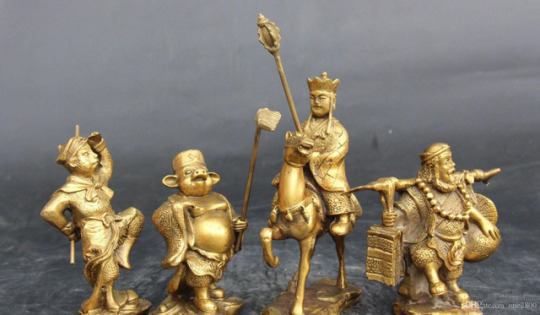
because almost immediately after freeing son wukong from the magic mountain of sityerassdown and putting a magic circlet on his head that causes him great pain when baldy says a prayer to keep him in line (yes this is where inuyasha gets the ‘sit’ necklace) they come across a SHAPESHIFTING PIG DEMON who turns out inst all that bad a guy its just that his new wife is very upset because she thought she was marrying a handsome bishounen despite admitting hes a dilligent worker and treats her well because hes seeking attonement for having eaten people after being kicked out of heaven (where he used to actually be a bishounen in the celestial army) for hitting on women. yet another case of DOES THIS SOUND FAMILIAR
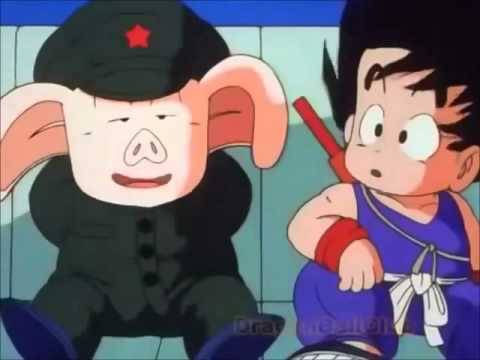
and i just now realize why he was wearing the chinese military officers uniform
or at least would sound familiar to people who watched the original ‘dragonball’ and not just DBZ where oolong and the 50 other characters who were all established to be quite powerful when used cleverly were all relegated soely to be sideline cheer squad and ‘hey, remember these guys, from back when this wasnt the kiss goku’s butt show’- which is the point here
following the original journey to the west story you started with the magical monkey shenanigans (check) then he learns from hermit (check) how to fly (check) and shapeshift (i guess they thought he was powerful enough without it despite it being one of his major go-to solutions in the story but i get that they already established thats a power someone else had so i understand leaving it out narratively) battling demons, gods, and pissing off the kings of hell and the emperor of heaven (check) and then gets humiliated by Buddha (absent, again i understand leaving this out for narrative tone and to avoid being overly religious in a kids cartoon despite actively leaving king Yema in the story) teams up with the bald monk who they initially clash but becomes his friend over time (check) who then becomes the main protagonist (major not-check) magical monkey jerk is repeatedly scolded for wantonly killing people and given a magical crown of headaches ( fail) teams up with shapeshifting pig who also becomes close ally with useful powers but has deep character flaws (check) and then team up with a dragon who ate their horse who then apologizes by transforming into a horse and then everyone forgets its a dragon (wait, what) and then team up with a river god named sandy (by this time the dragonball plot has already passed mars and is orbiting Jupiter because i think this is when frankenstein appeared and then king piccolo with his sons drum, tamborine, piano, and cymbal, i think goku kills one eats another and asked a samurai if he could eat the third but this is before they retcon piccolo to be a namek {eg- from the planet ‘slug’} instead of a demon because they keep waffling if demons are real) and is then followed by a long list of falling into traps laid by demons because the monk is naive, the pig is cowardly, the monkey is foolhardy, the dragon is too busy staying in his ponysona, and the river deity is carrying the bags
narratively this is confusing for several reasons but i could literally teach a college level class on what DBZ does that no writer should ever, EVER, do and every friday to prevent unkind amounts of homework point at how original dragonball at least had narrative cohesion of purpose when it went off in left field but that's part of the journey- in original dragonball everything is a journey of the human spirit for self improvement, in original journey to the west everything is a journey of the human spirit for a shot at redemption, but in DBZ everything is goku is awesome and nobody else is worth his time unless they go ‘ha-ha, i am the most powerful fight punch guy in universe, we must fight’ because fuck anyone who isnt the most powerful being in the universe and even fuck them because they almost never have a reason for being the most powerful and its irritating how shit they are like some of them are mentally five years old who gave you the power to be this dangerous.
whats odd is they specifically set it up several times that goku is supposed to narratively step aside and his son(s) step up to carry on the legacy in a return to the earlier more sensable formula, even presenting them as being less powerful as him as an attempt to move away form the absurd escalation issues the series had where goku can destroy a planet by farting yet every thursday they mysteriously find someone five times stronger then the last strongest person in the universe as that wasnt the point in either original dragonball or journey to the west where being clever was always far more important then being powerful, especially as son wukong was mostly more powerful then goku anyways but still got in monster of the week shenannegans not solvable by impulsive brutality.
they knew this was a problem, they understood that the endless escalation had gone to the realm where the audience had lost any investment and nobody other then goku could be useful to the story to the point that they even had a WHOLE SERIES where to try and counteract the power creep they had some weird explanation goku is actually time traveled or cursed or some shit so hes only a kid and roughly as strong as he was in later episodes of the original dragonball..... close, so close to actually addressing the problem but also keeping so many other problems
krillin moving into being the protagonist would have alleviated the majority of the problems DBZ had- the power escalation bullshittery and the complete lack of stakes as you know goku is going to punch the thing untill it explodes after six episodes of yelling and anything without ‘planet gonna go boom’ no longer seems like a problem worth caring about. goku being downgraded to being the impulsive muscle on a team that included others that were less overtly powerful but still narratively useful to the adventure would have also alleviated almost all the ‘everybody who isnt goku is a fragile useless porcelain figurine of a child’ problems that are very counter-intuitive and kind of insulting: in original dragonball, for example, master roshi was the only known human capable of doing the kamehameha which took 50 years to learn (goku learns it by watching it once and that should have been the cap for him being overpowered{a rival teacher had a more powerful version that nobody else learns}), climbed the sacred tower which took 7 years (it took goku about a week, which is well within the realm of where escalation should be), and blew up the fucking moon but in dbz his ‘power level’ is lower then his pet turtle..... despite all of that and being the one who trained goku and krillin allowing them to be absurdly strong in the first place so they apparently forgot their own history. so taking the actual good story points they aready had and throwing them in the trash is a running problem

they even had the setup for krillin being in peril continually, all the ‘krillin dies’ memes are about on par with how often every demon on the road (which they pass like gas stations) are kidnapping and trying to eat Tripitaka, whcih is framed as despite Tripitaka being powerful he isnt as powerful as his allies but never framed as useless, especially as even goku has to seek help frequently, often from non-martial sources instead of the ‘kung fu solves everything’ mindset
im unsure if anyone will want to start a fight about my statements regarding daballz but im okay with an intelectual argument about its writing
.... how do i tag this? i forgot replies dont let me do that but i need to learn how to tag my rants one of theese days in hopes they actually get feedback
12 notes
·
View notes
Text
Fandom Newsletter #3
Today is Friday, October 12th of 2018 and welcome back to another Fandom Newsletter, you’re provider for all things fandom!
Writers: Atlas, Blackpurrl, Fyne, YoursTruly
Editors: Fyne & YoursTruly
“One person’s craziness is another person’s reality.”
-Tim Burton
Let’s get started-
First to YoursTruly with the: Hannibal, Horror, Tim Burton, Animation, Marvel, Movie fandoms-
Hannibal: The Fannibals are getting excited for the new book by Thomas Harris, even if it won’t include everyone’s favorite cannibal. It’s been released that the book will be a thriller like Harris’s previous novels. The title and cover are still yet to be released.
Horror: Horror fans everywhere are starting to get psyched for the new Halloween movie, which will be released next Friday, the 19th. Many fans are nervous about the movie due to the trailer. The trailer would make it seem that the beloved murderer Michael Myers will be killed in this film. Guess all we can do is wait and see.
Tim Burton: Burtonists are petitioning for The Nightmare Before Christmas to get a Broadway adaptation. The movie is already a musical, but fans want to see it on Broadway.
Animation: Fans if the animated web series Camp Camp from Rooster Teeth are thrilled to see Daniel return for the Halloween special. The beloved cult leader was 'killed off' in season 2, but he has somehow come back from the dead just to seek revenge.
Marvel: Marvel fans are welcoming the Venom movie with open arms! After many of them saw the movie last weekend, many of them can’t stop talking about how incredible it is! One fan even stating, “Going to see Venom is like going to the theater to see The Dark Knight, but seeing Thor:Ragnarok instead.”
Next to Blackpurrl with the Percy Jackson and Harry Potter fandoms and World News-
Harry Potter: COUNTDOWN: 36 days until the new Fantastic Beasts!
Percy Jackson: Rick Riordan has started a new series based on Hindu mythology! It’s called Aru Sha and the End of Time.
World News: Viktoria Marinova: man arrested in Germany over Bulgarian journalist murder.
Now to Fyne with the Supernatural, Sherlock, YouTube, and Sooptober fandoms, as well as your weekly dose of good news-
Supernatural - Before bringing Supernatural to television, creator Eric Kripke had been developing the series for nearly ten years. Having been fascinated with urban legends since he was a child, Kripke got inspiration from some of his favorite urban legends which can be shown by many of the episodes in the first season (the woman in white, wendigo, Bloody Mary, etc.) and when the show expanded from just urban legends to religions and gods outside of not only the norm, but our time period, Kripke became even more excited about the show (even if he did want to end it after the fifth season).
Sherlock - China's ban on the show hasn't stopped it becoming a huge hit on the internet. Despite not appearing on the Chinese Central Television (CCT) network or other major channels, 69 million viewers from China have still seen it on video websites. Initially makers didn't expect it to be quite the hit it has been in the UK, either. Steven Moffat thought it would bring in somewhere in the region of 4 million viewers. It's average is more than double that. Even more than triple that.
YouTube - Fans of YouTube and Halloween have united in a show of many horror games and skits spanning across the youtube platform. Multitudes of youtubers have been playing horror games, participating in inktober, writing horrifying skits and scripts, and overall just getting into the Halloween spirit. As of now there isn’t very much drama going on in the YouTube world (minus that fact that IISuperwomanII just released a diss track on all the men of YouTube and their channels) and it seems that YouTubers have found ways to work around the ad-pocolypse, therefore easing the many worries and anxieties fans had of losing touch with their favorite youtubers.
Spooptober - Did you know that Halloween is more Irish than St. Patrick's Day? Halloween's origins come from a Celtic festival for the dead called Samhain. Celts believed the ghosts of the dead roamed Earth on this holiday, so people would dress in costumes and leave ‘treats’ out on their front doors to appease the roaming spirits. It has since been adapted to our loved and cherished holiday of today.
Positive News - Americans under the age of 45 have found a novel way to rebel against their elders: They’re staying married. New data show younger couples are approaching relationships very differently from baby boomers, who married young, divorced, remarried and so on. Generation X and especially millennials are being pickier about who they marry, tying the knot at older ages when education, careers and finances are on track. The result is a U.S. divorce rate that dropped 18 percent from 2008 to 2016, according to an analysis by University of Maryland sociology professor Philip Cohen. Millennials are causing the US divorce rate to plummet, and it’s not a bad thing.
Lastly to Atlas with the Voltron, British, Musicals, and Bands fandoms-
British: I’m still trying to figure out why Death in Paradise star Sara Martins left the show…*tear*
Musicals: Imagine if Hamilton was modernized…
Voltron: Voltron Season 8 confirmed for DECEMBER 14TH! Fans be sCrEaMiNg. Also, it’s rumored that the Altean that crash landed was sent by Haggar.
Bands: Band All Time Low covered a Harry Styles song… Ha. Ha. hA. Yeah….. what else could go wrong?
Now back to Blackpurrl with the weekly trivia fact and quiz-
Trivia: Uranium is the heaviest element on Earth.
Quiz: What candy are you?
1. Pick your flavor
A. Sweet
B. Salty
C. Fruity
D. Sour
2. Consistency?
A. Solid, but meltable
B. Sticky
C. Solid
D. Chewy
3. How would you be packaged?
A. One per package
B. Wrapped alone in waxy paper
C. Wrapped in decorated paper
D. Packaged in groups
4. Any color?
A. No, plain is fine.
B. A few different light colors would be nice.
C. ALL THE COLORS. RAINBOW SOMETIMES TOO.
D. Like five different colors is fine.
5. Shape?
A. A bar
B. A cube-ish shape. Idk, it’s kind of a blob.
C. All the shapes!
D. Humannnn......
Mostly A’s: Chocolate bars!
Mostly B’s: Saltwater Taffy!
Mostly C’s: Lollipops!
Mostly D’s: Sour Patch Kids!
And now to Fyne with the weekly book review-
Book Review - Serafina and the Black Cloak written by Robert Beatty is a dark thriller that takes place in 1899 North Carolina. Children at the wealthy Biltmore estate are being abducted during the night, and nobody knows what is causing it. The adults are terrified yet clueless and only 12-year-old Serafina, who lives secretly in the basement with her mechanic father, knows that a mysterious man in a black cloak is taking them. She teams up with the owner of the estate’s son, Braeden, to try and solve the mystery and get the children back home. This scary story is not for the faint of heart; the abduction scenes are graphic as children scream out in terror and seemingly vanish into the foul-smelling cloak. Serafina and Braeden are often under attack from the man in the cloak and other supernatural beings, but for those looking for a scare and a book that will grip them from start to finish with many plot twists along the way this book is perfect. Overall for kids a 8/10 and for adults a 6/10 would read.
Lastly, back to Atlas with the weekly movie review-
Movie Review: Truth or Dare is a movie rated PG -13 And was released some time last year. Starring Lucy Hale, this movie centers around a group of teens’ trip to Mexico. During that trip, they get caught in a game of Truth Or Dare. When they learn that the game is cursed, it’s a matter of life and death. Don’t tell the Truth, you die. Don’t do the Dare, you die. So, what would you choose? Truth or Dare?
The comic included at the bottom is once again drawn by our very talented Blackpurrl! YoursTruly’s birthday is coming up on Sunday so wish her a good one! That’s all for this week, we’ll see you next week with another Fandom Newsletter!
Signing off,
Atlas, Blackpurrl, Fyne, and YoursTruly
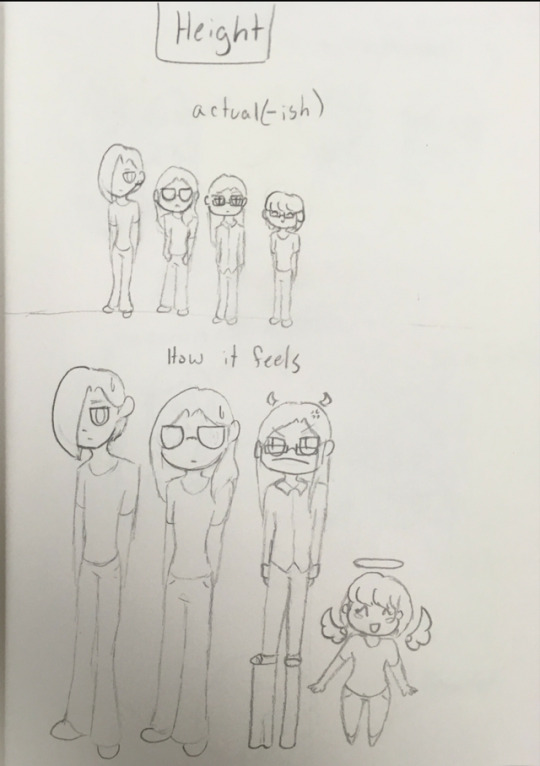
#hannibal#horror#tim burton#animation#marvel#harry potter#percy jackson#world news#supernatural#sherlock#halloween#youtube#good news#positive news#british#musicals#voltron#bands#trivia#trivia facts#quizzes#personality quizzes#book review#movie review#fandom newsletter#fandoms#fyne#yourstruly#blackpurrl#atlas
3 notes
·
View notes
Text
5. Naomi Kawanishi Reis & Alex Paik
Naomi Reis and Alex Paik discuss childhood survival mechanisms manifesting in their work, in-between-ness, their labor-intensive practices, and Naomi’s recent body of work which was shown at Transmitter (Brooklyn, NY).

Alex Paik (AP):
You’ve been thinking about camouflage in an ongoing series of your work, and it strikes me that this idea of hiding and/or being invisible is central to your work. Now that I think of it, even your work in grad school, which was about these sort of hybrid utopic (or dystopic) architectures had this silence in them. There were no figures and no real record of anyone having lived or living in those imagined spaces, like they were erased or hidden. When you started talking about camouflage in recent years it really was an a-ha moment for me in understanding your work. I’d love to hear your thoughts more on the invisibility of Asians in general in the art world and the ways in which that feeling might be a part of your work.
Naomi Kawanishi Reis (NR):
Camouflage was something I started using about eight years ago, in a series called Borrowed Landscape. The series was based on photographs I took in the tropical biomes of conservatory gardens, a take on landscape painting where the “nature” being depicted was a highly curated by-product of Western colonialism. Plants that were highly useful/exploitable/profitable/exotic and beautiful, collected in a place that existed outside of time, secreted away from the effects of weather and death. I translated those photographs onto printed wallpaper, upon which was placed a framed mixed-media painting that replicated a portion of the wallpaper behind it.

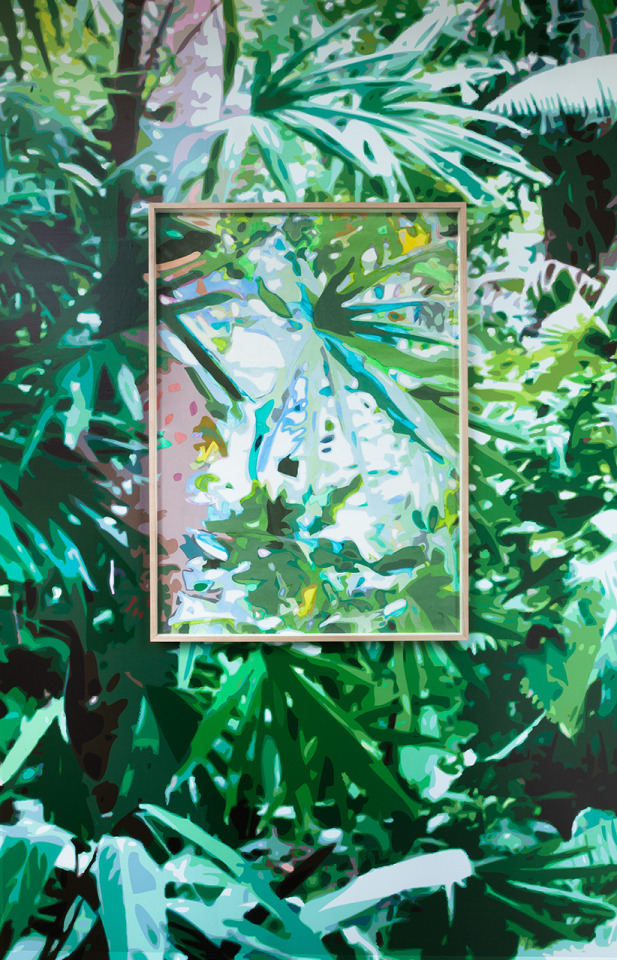
Naomi Reis, Borrowed Landscape II (Tropics of Africa, Asia and the Amazon via Brooklyn), 2013. Digital print on vinyl and handcut washi and mylar cutouts in maple frame, 13.5 x 14 feet. Installation view at Susan Inglett Gallery, New York, NY in “American Beauty,” curated by William Villalongo. Photograph by Jason Mandella.
NR:
I was thinking about how landscape has been used in image-making throughout history to depict idealized places—like Pure Land paradise in Buddhist mandalas, the Taoist spiritualism of Chinese or Japanese landscape paintings, and the glorification of nature found in Romantic landscape paintings.
The title “Borrowed Landscape” comes from a 7th-century Chinese garden design concept (shakkei=借景, a technique of “borrowing” the view of a distant scenic element, like a mountain or lake, into the design of the garden), which felt like a fitting title for where we find ourselves today in relation to landscape. Living on borrowed time, on stolen land: ignoring the reality of our responsibilities to the land, the indigenous people it was stolen from, and the debt owed to stolen Black bodies and labor in service of white supremacy. The handmade framed painting, I suppose, is a stand-in for us as immigrant settlers on this land here in America; we’ve camouflaged ourselves into our surroundings to fit in, to survive. The land we are attempting to fit into, is itself “borrowed” (aka stolen).
These choices weren’t made consciously when I started the series; it’s only now eight years in that I’m beginning to understand the why, and finding the words to explain it. As a diasporic, racialized person both in America as well as in Japan, I’ve needed to navigate complex social and racial situations. My father’s side of the family is white and doesn’t speak Japanese, so as a kid I knew that in order to survive and be “liked” by that side, or maybe even just to be understood, I needed to downplay my otherness and be as “normal,” aka white English-speaking, to them as possible. Conversely, my mom’s side of the family is Japanese and doesn’t speak English, so to them I needed to be as Japanese as possible. Of course as a kid you get a pass to a degree and are loved anyways, but I do remember this feeling of anxiousness, that my survival and ability to be loved and cared for depended on this ability to code-switch.
Being the oldest in a family of three siblings, and because my experience was so different from my parents’ monocultural upbringing (Japanese in rural Japan for my mom, white American in suburban NJ for my dad), code-switching was an essential survival tool. Kids instinctively figure out how to protect themselves at a very young age, even before they learn how to express themselves verbally. Immigrants adapt similar survival tactics, the art of blending in. Though “blending in” is a way to survive, it also is an act of self erasure. How to survive, while not annihilating yourself in the process? You camouflage.
The reason for the absence of figures in my work probably comes from feeling absent from my own narrative, feeling a bit unmoored from belonging to any one culture. I didn't see myself being reflected in the context of mainstream Japan or in America or anywhere except for maybe sci-fi or fantasy. Growing up I often felt like a ghost, like I didn’t exist in the real world. While I had learned how to integrate enough to survive, as I was getting up to speed with my fluency and literacy in English and Japanese while going back and forth between the U.S. and Japan, I often felt I was on the sidelines watching other people live their lives and not feeling comfortable enough to fully participate. When my family moved from Ithaca, NY to Kyoto in the ’80s when I was 9 for my dad’s teaching job at a Japanese university, I was often called 外人=outside person by strangers on the street. As a sensitive kid, I internalized that othering a lot.
The architectural work I was making in grad school was a kind of perverse take on modernist architecture, multiplying and ornamenting the hell out of the piloti and flat roofs of the International Style, a style that aimed to strip all ornamentation and color to become a “pure” architecture. The absence of figures became like the blank-slate of a dollhouse, a place I could imagine roaming around in.

Naomi Reis, Vertical Garden (weeds), 2007. Hand-cut ink and acrylic drawings on mylar, 53 x 45 inches. Photograph by Etienne Frossard.
AP:
I can relate so much to this, being the first-born child of immigrants. It is interesting to think about these survival mechanisms in relationship to our work. I have been reflecting recently on my site-responsive installations, how they adapt and change depending on the size, time, and location of the piece, and how this is a metaphor for how one can rearrange the parts of the self depending on the social context. Code-switching would be one aspect of this. One of the feelings I remember most from childhood, perhaps because of moving a lot as a kid, perhaps because of being Korean-American and not quite feeling Korean or American, is that of constantly feeling like I need to assess the room and adapt to it. So while you are drawn to the idea of hiding/camouflage in your work, I am drawn to the idea of constantly adapting and rearranging the different components of the self. Two sides of the same coin I guess.
NR:
Ah that’s interesting. Your strategy is to go on defense, which maybe is connected to your training in martial arts, and your attraction to building communities like TSA, whereas mine is an introvert’s tendency to self-isolate, to find a way to take up space while remaining hidden—yang vs yin.
To return to your question about why work made by Asian artists seems hidden behind some kind of invisibility cloak: that’s a reflection of where we’re at culturally in America generally. Asian stories remain largely unknown; they are insufficiently featured in mainstream media and curricula, so Asians have largely remained the consummate “other” whose experience is hidden and therefore not relatable to many Americans on a heart, gut level. White America tends to project an expectation of whiteness onto others, so when your actions or motives aren't matched in a way that’s relatable to a white audience, you confuse expectations and can be seen as an unknowable other that’s doing things wrong or badly. When you are seen as an other, it makes you vulnerable to either being too too visible—a target that needs to be taken down for taking up space that we don’t deserve, as we’ve seen play out recently in the attacks against Asians in America—or not relatable/relevant and therefore invisible, an easy target for cultural appropriation or the butt of a joke.
American culture likes extremes. Black or white, good or bad, democrat or republican, man or woman. Personally I feel most comfortable in the in-between, where everything is still in the process of forming, and reforming. Queer spaces. Because they encompass, in theory, all shades of ambiguity. Going back to the idea of binary space, people tend to be attracted to things that either remind them of themselves, or on the opposite extreme, that provide a projected escape into the exotic “other.” In movies you often see Asian-ness as an alienating backdrop to heighten tension for the central white characters you are meant to identify with: Asian bodies as embodiment of a dystopian future (both Bladerunner movies, Artificial Intelligence, Minority Report); as nonsensical foreigners in their own country (Lost in Translation); as hapless natives who need saving (Last Samurai).
AP:
What aspects of your work do you see as talking about the in-between?
NR:
My work is maybe less aiming to talk “about” the in-between, and more just wanting to “be” in the in-between. The process of making “it,” whatever “it” ends up being—is itself what creates the space and time to occupy an in-between—a wordless space that exists for the interval while engaged in the act of making. The 間 space: a Japanese word that refers to the in-between, both spatially and temporally. This is the space in which all artists work, falling into that pocket of space-time where things are in flux.
It’s a way to give yourself permission to inhabit space—”to be” without having to translate that state of being into a binary (English/not-English; American/not American; male/female; young/old). Even now, writing this out, and to you, Alex, I am inhabiting my English-speaking self who is translating the self into a form that is legible to an English-speaker. Talking to my mom, I am inhabiting my Japanese-speaking self and all the historical cultural gendered background that goes into being that particular self. Talking to my siblings or bilingual friends, fluidly switching between English and Japanese, is a way to occupy the in-between for that interval of time, then returning to the binary world of everyday life. Didactically speaking, I suppose my work is “in-between'' in that it is kind of painting, kind of drawing, kind of collage, kind of abstract, kind of representational, kind of naive, kind of sophisticated. Kind of American? Kind of Japanese? Kind of good? Kind of bad? A physical thing that takes up space, and that space can encompass all the ambiguous in-between mushy-ness.
I didn’t feel able to pursue being an artist until I was in my mid-20s. I had a lot of shame about not being good enough, of not deserving to do it. Still do. I hadn’t gone to art school, and wasn’t encouraged to be a creative person by society or parentally. It was something I wasn’t open about, I drew and painted alone in the privacy of my room. So by the time I was in my mid-20s and realized working a normal job was killing me (I was a human resources representative at the NY office of a Japanese printing company), and that I really had to give artmaking a go, I didn’t know what I was doing.
At the time, I was fascinated by architecture. The idea that you could take a philosophy, a belief system, and turn it into a permanent structure that’s inhabitable, that can last for centuries. Maybe that fascination came from growing up in Kyoto around buildings that had been around for 1,200+ years. So when I started in the MFA program at Penn Design and was making architectural sketches in 3D-modeling programs, it came from a feeling of: if I can imagine an inhabitable place within which I can exist, I can open up a non-binary space to work within. Anytime I can overcome my inner demons or lack of talent or confidence or imposter syndrome, etc. long enough to crack open some space and just make the work, that’s a victory. Generally, in the year ahead I want to make work that comes from a place of joy. Worrying less about how my work fits in, and just focussing on creating the conditions within which I can feel more exuberant, and free. When you allow those conditions for yourself, I think you can do the same for others.
AP:
Another exciting thing about your work is how it is busting out of the rectangle more! Obviously I am all about that :) Can you talk more about how that happened and how you are thinking about it?
NR:
Ha! I think it comes from a desire to to be more joyful, bust out of the seams, take up more space. Allow for messiness, draw outside the lines. I want to make more space for weirdness. It must come from a desire to push against the narrowly-defined rules for acceptable female behavior that I grew up with in Japan, and the kind of bubbling rage I felt for the myriad of ways women and their bodies are policed, undermined, silenced, and funneled into serving a capitalist nationalist patriarchal system, where the myth of ethnic/racial purity is perpetuated through the education system. Harm and denial begets harm and denial, and I wanted to get out and find a different way.
AP:
I love the idea of the work taking up more space than it is given. It goes back to the idea you talked about earlier of becoming an artist to create a space that didn’t exist for you previously, and of pushing against/beyond essentialist and reductive readings of art based on identity.
NR:
How about you, Alex?
I’ve always sensed there’s a reticence in you to talk more directly about what your work is about, to not allow yourself that level of vulnerability. For example, sometimes you refer to your time in the studio as being boring repetitive labor, and I was wondering if there might be a connection there between the type of labor involved with the work your parent’s did as owners of a dry-cleaning business. Can aspects of your work be seen as a kind of penance, or perhaps tribute, to the kind of labor that was available to Asian immigrants when you were growing up? You are the artist, so you get to dictate the terms. Why limit yourself to a mode of making that you say is repetitive and boring? Maybe there’s something important there in that repetition and boredom that you are committed to, and I want to know what it is, and why. What do you want and dream about for your work?
AP:
I am becoming more comfortable with it recently. While I hesitate to draw a direct connection between the type of menial labor that my parents did and the type of work I am making, I do think that my upbringing shaped my personality and interests for sure. Seeing them work so hard and feeling the pressures of being the first-born (pressures stemming from my parents, from Korean culture, my own guilt in wanting to honor their work, my own internalized capitalism) definitely has instilled an appreciation for labor. I have always been drawn to things that require discipline and repetition—classical music, martial arts, cutting strips of paper over and over again.
I was thinking about my work through a very narrow lens for a long time, trying to keep it in the lane and lineage of the art history I was taught. Once I opened up my thinking about my work as an extension of the totality of my life experience and interests including but not limited to my Korean-American identity, it allowed me to see things in my work and myself that I hadn’t been willing to explore. That being said, I am hesitant to make my work only or primarily about my racial identity. I feel a lot of external and internal pressure that I am supposed to be making work about my racial identity.
Your work is also very labor intensive. Can you talk about how you think about that in your studio practice?
NR:
I think it goes back to the in-between space, to the relief I get when I release into the labor of work; there I am temporarily free from the anxiety of not-belonging. So the more labor intensive it is, the more I get to be free. In the past several years I also have been spending more time trying to heal: learning how to meditate, and in various forms of therapy like EMDR and somatic experiencing. A healer I’ve worked with who specializes in somatic experiencing mentioned that a lot of people who’ve experienced trauma engage in repetitive labor, that there is release and relief, a self-soothing, in that labor. It makes me nervous to think that the labor-intensive nature of my work can be explained away as a form of self-medication, but on some level the creative impulse always comes from some kind of unnameable necessity.
AP:
It’s such a gift to been friends with you for over 15 years and also to have seen your work grow for that long. It’s exciting to see a lot of these ideas coming together in your most recent body of work that you showed at Transmitter. Can you tell me more about this recent series?
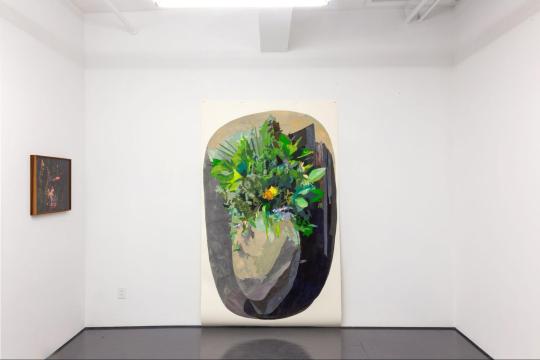
Naomi Reis, 71229 (9:17), 2021. Acrylic on washi paper and mylar cutouts, 93H x 55W inches. Photograph by Carl Gunhouse
NR:
In my most recent work, I worked off of photographs my mom has been sharing of her flower arrangements on our family group chat, which is the primary way we all keep in touch (my mom, brother, and his family are in Japan, and me and my sister and her family are in NY). My siblings post photos of their young kids, I post photos of my work, and my mom posts photos of her cooking and flower arrangements. Photos of the domestic realm. This new series is an attempt to bridge the ruptures that distance can bring: geographical, generational, and cultural/philosophical. There’s definitely a lot of tension in our different ways of thinking about gender roles, so the thought was to translate those gaps of expectation into a form that heals and transforms, through the labor and care that goes into the process of making. Maybe this work is my version of a quilt or weaving piece—a labor-intensive process that is meditative, with all the analogies and histories of weaving, knitting together, mending—embedded within.

Naomi Reis, 111119 (90˚W), 2021. Acrylic on washi paper and mylar cutouts, 48H x 37W inches. Photograph by Paul Takeuchi

Born in Shiga, Japan, Naomi Kawanishi Reis makes mixed-media paintings and wall pieces that focus on idealized spaces such as utopian architecture, conservatory gardens, and still life. She has had solo exhibitions at Youkobo Art Space, (Tokyo) and Mixed Greens, NY; she has also exhibited at Brooklyn Academy of Music and Wave Hill. In 2018 she received a Joan Mitchell Foundation Painters & Sculptors Grant, and in 2015 was a NYFA Finalist in Painting. Residencies that have supported her work include Yaddo and Robert Blackburn Printmaking Workshop. Reis also is a Japanese to English translator; recent publications include the chef's monograph “monk: Light and Shadow along the Philosopher’s Path” (Phaidon Press, 2021). She received an MFA from the University of Pennsylvania, and a BA in Transcultural Identity from Hamilton College.
www.naomireis.com
@naomikawanishireis
Alex Paik is an artist living and working in Los Angeles. His modular, paper-based wall installations explore perception, interdependence, and improvisation within structure while engaging with the complexities of social dynamics. He has exhibited in the U.S. and internationally, with notable solo projects at Praxis New York, Art on Paper 2016, and Gallery Joe. His work has also been featured in group exhibitions at BravinLee Projects, Lesley Heller Workspace, and MONO Practice, among others.
Paik is Founder and Director of Tiger Strikes Asteroid, a non-profit network of artist-run spaces and serves on the Advisory Board at Trestle Gallery, where he formerly worked as Gallery Director.
www.alexpaik.com
@alexpaik
0 notes
Text
Statues of Limitations
Winston Churchill and the quest to find the right standard for public memorialization
On June 7, during a Black Lives Matter protest, a statue of Winston Churchill in central London was vandalized. Rather than properly contextualize the incident as part of a global movement for black rights, many news sources conjured images of unruly gangs of teenagers randomly tagging beloved national monuments (and on D-Day anniversary weekend, no less).
How could anyone, argued Twitter patriots with a Union Jack in their usernames, defile the memory of the man who defeated the Nazis and is widely considered to be the Greatest Briton Of All Time?
What the question forgets, and what history confirms, is that destroying statues is a perfectly legitimate form of political protest. Few complained about the destruction of Joseph Stalin’s statue in Budapest in 1956, or the removal of Saddam Hussein’s statue in Baghdad in 2003, among many others. Whatever problems people have with statues being torn down are more context-dependent than they like to admit.
Some pointed out that no one defaced the statue of Karl Marx that day, presumably in an attempt to paint anyone interested in promoting racial justice as a communist. The “statue” of Karl Marx is actually his tomb, and it was nowhere near any of the protest sites.
There was less harrumphing when a statue of Edward Colston, a slave trader with the Royal African Company, was toppled in central Bristol and thrown into Bristol Harbour on June 7. Ironically, professional restorers intend to preserve the graffiti, as it is now an important part of the history of the statue.
In Ireland, we know how to deal with the stone and metal monuments to our erstwhile colonial occupiers. Statues to William of Orange, King George II, and Viscount Gough had already been destroyed before 1966, when dissident IRA members blew up a statue of Lord Nelson in the middle of the main street of our capital city. The government spokesmen did a good job of acting horrified, but the general reaction was more sanguine.
On June 15, as part of an official statement in response to the defacement of the Churchill statue, Boris Johnson, the English prime minister and author of The Churchill Factor: How One Man Made History, asked: “Where will it end? Are we supposed to haul down Cromwell who killed so many thousands of people in Ireland?”
In England, Oliver Cromwell is widely regarded as a hero and a pioneer of what would eventually and gradually turn into representative democracy. His position in the national consciousness is cemented by a statue outside the House of Commons.
In Ireland, his name is synonymous with brutality and xenophobia. J. Michael Straczynski, the showrunner for season eight of Murder She Wrote, tells the story of how the mere mention of the name Cromwell to an Irish hotel receptionist was enough to cause a cancellation of a wrap party of one of the episodes set in Ireland.
What about a statue’s pedagogical function? Of course a monument could play an educational role, but then again, that’s not the contribution a statue tends to make. Statues of war criminals, perhaps prime candidates for enlightening the citizenry, often fail to convey even a minimal understanding of the figure’s checkered past. Cromwell’s statue has been outside Westminster since 1899, yet Johnson’s comments about his murders will be the first many British people have heard about his ruthless violence against the Irish people.
British colonial crimes are often news to English people. However, once they make the effort to do some research, they often not only realize their mistake, but conclude that, in the words of former cabinet minister and Johnson’s fellow-Conservative, Michael Portillo, the “ignorance of Ireland among the British is rather shocking.”
Their Finest Hour
Despite the air of mystery surrounding initial reports, Black Lives Matter protesters did not work very hard to hide their opinions about Winston Churchill. After all, they did not merely deface the statue, but they painted the specific accusation “was a racist” under his name. This appears to be unambiguously true.
In 1920, Churchill established and deployed the Royal Irish Constabulary Special Reserve to Ireland. This group, known in Ireland as the Black and Tans, was notorious for its human rights abuses and war crimes.
In 1943, Churchill had thousands of tons of rice shipped out of India for use in the war effort, while a famine hit millions of Indians, whom he regarded as “a beastly people with a beastly religion.” Churchill was reluctant to send relief on the basis that Indians “breed like rabbits.” (Ireland had a similar problem from 1845–1849, when exploitative English government policies caused a famine while massive shipments of grain were simultaneously being exported.)
In 1902, he called China a “barbaric nation” and in 1954 said he didn’t “like the look of [Chinese people] or the smell of them.”
In 1922, as Colonial Secretary, he financed the Wahhabis in Saudi Arabia despite stating that they were “intolerant, well-armed, and bloodthirsty.”
In 1937, when discussing the future of the Arabs in Palestine, he said that the Arabs could hardly complain that “a stronger race, a higher-grade race … has come in and taken their place,” as this was, in his view, the natural order.
Moreover, the warm feelings Brits in the 1940s had for Churchill’s defeat of the Nazis did not translate to blind worship of the man. He was decisively voted out of office in 1945 in favor of Labour’s Clement Atlee, albeit for reasons entirely unconnected with his racism.
This litany of shame is not to besmirch the memory of Churchill in particular. The point is that statues don’t educate anyone unfamiliar with the subject. If you don’t know anything about Winston Churchill, then a statue erected to him without any context could be reasonably interpreted as a celebration of his achievements, whatever they might be.
The statue depicts the well-documented Hitler defeater, but doesn’t tell us much about the brutal racist. That’s not appreciating, or even acknowledging, history. That’s not education of any kind. That’s propaganda.
In a long Twitter thread, the same Boris Johnson tweeted that “we cannot pretend to have a different history” and that the abuse of statues is “to lie about our history.” However, there is a legitimate argument that many of these statues were erected specifically to pretend to have a different history in the first place.
It’s understandable to erect thoughtless memorials to people who were heroes given the standards of the time. It’s less understandable when you find out that huge chunks of British history have been intentionally “censored and airbrushed,” including the “mass destruction of documents,” the kind of thing we correctly mock Stalin for, and which forms the basis of Winston Smith’s job in Nineteen Eighty-Four.
Nor is this old news. More recently, the Home Office destroyed evidence of the right to citizenship of thousands of Windrush immigrants. In 2013, the Conservative Party deleted an archive of their speeches from their public website, in a move which demonstrates the extent of their commitment to transparency and preserving the historical record more than tweeting about a statue.
The Germans, natürlich, have a word to describe the entire ideology behind dealing with all the awkwardness of a murky past, the glorious rollercoaster of Vergangenheitsbewältigung. There is no German who is not aware of the Third Reich, and they manage to achieve that awareness without putting up statues to war criminals. They accept their history, but they are very careful to avoid anything which could be confused with a celebration of it.
In the same way that German targets of the Holocaust could reasonably feel angry if there were a statue of a Nazi outside the Rathaus, is it not reasonable for English black people to feel angry when there is a statue of a slave trader in the middle of town?
Reading History
Conservatives love the idea that the destruction of statues is somehow editing history because they subscribe to the idea that history is a collection of immutable names and dates and unquestionable facts.
History as a discipline, however, can be better understood as a series of competing narratives, and the project of historians is to identify, evaluate, and eventually assemble for themselves those narratives. To historians, names and dates are the mere raw material of facts. Facts have no inherent meaning, because meaning is something we do. It is an action, not a property.
Historians learn to fear any person or organization who claims ownership over the collective memories of the past.
Students of history will be constantly aware of the need to keep an open mind, to adapt their approach to different types of information, to understand that the prevailing theory is just that, the prevailing theory, and that phrases like “we only use the facts” and “this is an objective account” are fairly reliable indicators that something is about to go badly wrong.
Arc Digital, 20 August 2020
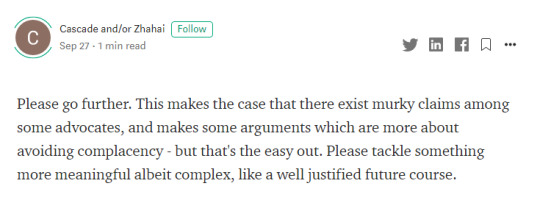
0 notes
Text
The Top 25 Films of 2019

25: Shadow (dir. Zhang Yimou)
"Without the real, there can be no shadow. A principle no one's understood."
After a string of terrible films trying to play to Hollywood audiences, Zhang Yimou manages to successfully return to the goldmine he stuck in the early 2000s and craft another absolutely gorgeous wuxia. Here he swaps out the poetic, colorful beauty in favor of monochromatic, surprisingly violent tone poem about deceit. It ultimately works against it, as by the seventh or eighth double cross you kind of just give up trying to figure out who's on what side, but the main action setpiece is so wonderful it deserves a spot for that alone. Hopefully a good sign for Yimou's future, as long as we don't have another nationalist war epic that somehow inexplicably also has a white savior narrative too.

24: Climax (dir. Gaspar Noé)
"...something's kicking in..."
Noe takes us for another plunge into the dark, twisted, vomit-inducing, neon-lit hellscape that is his mind and at least has the common courtesy to put the pleasant parts upfront this time. While it will eventually devolve into the same type of chaos that we all love/hate from him, the first act is kind of a wonderful departure from him. He basically accidently makes a musical for a while, with wonderful and deeply intricate dance choreography as well as a fantastic extended sequence where every character jumps in and out of frame and gets a chance to strut their stuff. That movie would have been a strong top five contender, but alas, the man has his particular quirks that he must abide by. But at least he also strung together probably the best soundtrack and sound design of the year, with the fantastic EDM bangers rumbling through the walls throughout the entirety of the film.

23: Long Shot (dir. Jonathon Levine)
"Oohhh boooy!"
Charlize Theron and Seth Rogen doing a political comedy that manages to be both smart and extremely funny seems like a long shot indeed, but Johnathon Levine finally strikes gold again after a number of disappointing duds. He manages to make a pretty good story about how navigating the political minefield destroys what little hope and dreams high level politicians still manage to have, but then he also happens to make it all absolutely hilarious too. Theron demonstrates a surprisingly strong comic game too, easily matching all the other talent and cracking jokes along with them. It ends up being a charming romance where the woman takes charge in a very pleasant change of pace. And if nothing else, the way Seth Rogen yells "oh boy" in that video is always going to make me laugh no matter what.

22: 6 Underground (dir. Michael Bay)
"Ghosts have one power above all others: to haunt the living. Haunt them... for what they've done."
Theoretical question: what say Netflix gave Michael Bay a blank check and no restrictions, and he turned in the most overblown, dialed to eleven, nonsensical spectacle that he ever crafted and was allowed to put it into almost every American home for free? Now what if I told you that it was actually kind of awesome? Sure, it's basically a child playing with his $150 million dollar GI Joe set, smashing his toys together and making pew-pew sounds, but it's also probably the best testament to the power of conventional effects work over the increasing insistence on CGI for big setpieces. Let's face it: explosions are pretty cool, every one likes exotic locales and bright sports cars, and there's at least someone here to appeal to you (least surprisingly for me, it was Melanie Laurent with bangs wearing a suit). It almost reaches a late Michael Mann kind of abstraction, as both are respectively breaking apart the action movie into stranger combinations. Bay gives plot only because he contractually has to, and even then doesn't seem as committed to characterization as he is showcasing surprisingly brutal ways for the gang to dispatch their enemies. It's nonsense, but the damn best nonsense of the year.
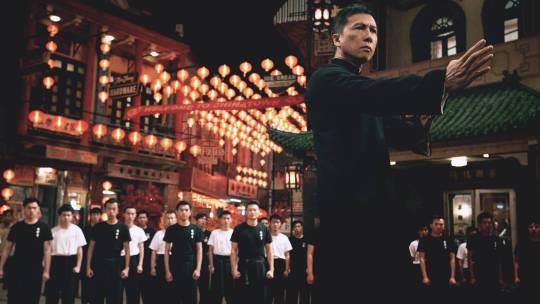
21: Ip Man 4: The Finale (dir. Wilson Yip)
"Is that it?! Is this your Chinese Kung Fu?!"
The finale in the decade-long quadrilogy of supremely silly and borderline racist worship of China finally attempts to tackle America to delightfully amusing results. Scott Adkins doing his best evil R. Lee Ermey impression while slipping in modern neo-con punchlines, neverending Bruce Lee worship, and more nationalism and bad fake American accents than you could ever believe. Yet also a more bizarrely honest portrayal of racism in 1960s America than most movies would ever have the courage to acknowledge. It’s almost fascinating considering how a lot of the non-Asian racism basically serves as set dressing, but they still put more effort there than pretty much every Hollywood movie set in the 60s that isn’t directly about civil rights. But ultimately they're selling you a bill of goods saying "watch Ip Man beat the crap out of racist meatheads" and you better believe they're going to give you what you want.
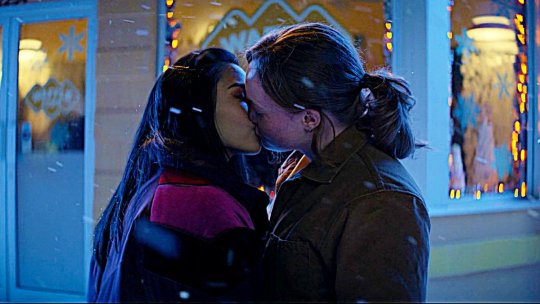
20: Let It Snow (dir. Luke Snellin)
"Have you ever been with someone, and you stay up until like 4AM just talking about everything, and you're just like, I can't believe I get to exist at the same time as you?"
Okay, so let me explain myself on this one:
So yeah, it certainly is a generic teen romcom where everyone plays into basic teenage stereotypes, half the cast is clearly nowhere near eighteen, and all of the romance is oddly chaste. But there truly is something to be said about representation in a romcom, and after a thousand boring cis, straight, hetero couples falling in love for decades, this movie actually managed to hit a lot of notes that are at best rarely explored in the genre and also manages to probably sneak in some genuine firsts. While both the "tomboy/softboy" and "Latina struggling with her family" storylines have been done before, these are some nice, cute little iterations on those befitting a teen-friendly movie. But the Dorrie/Kerry story is not only legitimately groundbreaking, but also an absolutely perfect encapsulation of the types of problems that queer teenagers struggle with during that time of their lives. It's a queer romance, played by two actually not-straight people, with one of them being a nonbinary actor too. And it's not cordoned off into some bargain bin DIY indie that fell out the back of the truck on the way to an indie film festival; no, this is in a major holiday release, with well-known actors, and as one of the central storylines! Plus, it perfectly captures the woes of modern teen coming out, knowing that everything will probably still be cool, but the fear haunting you as all you can do is look jealously at someone who is out and proud. And it does it without being real shitty and horribly traumatic too. Eat your fucking heart out, Love, Simon!

19. John Wick: Chapter 3 -- Parabellum (dir. Chad Stahelski)
"Si vis pacem, para bellum!"
Another year, another John Wick movie. There's more plot; you don't care, and let's be honest, neither do I. Stahelski is here to serve up more badass characters and incredible action, and no one in Hollywood does it quite like him. It's got familiar action favorites demonstrating why they still remain supreme, with Yayan Ruhian, Cecep Arif Rahman, Tiger Chen, and the ever underrated Mark Dascascos. It's got surprising action showcases for Halle Berry, Lance Reddick, and somehow Boban Marjanović. It's got great character actors doing their thing, from the returning McShane and Fishburne to newcomers Saïd Taghmaoui and Anjelica Huston. It's got Asia Kate Dillon as an awesome nonbinary shadow organization asshole. It has a bewildering Jason Mantzoukas cameo. And above all else, it has Keanu Reeves, still demonstrating not only his incredible physical skill, but also how to perfectly utilize his particular acting style to create an iconic character.
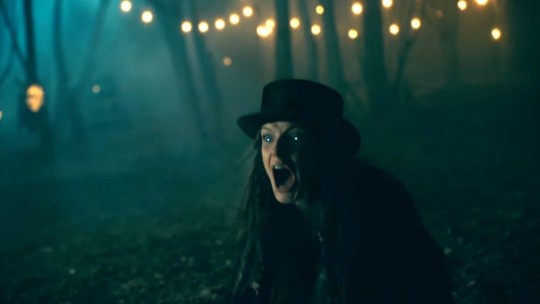
18. Doctor Sleep (dir. Mike Flanagan)
"Man takes a drink. A drink takes the drink. And then the drink takes a man."
While not the most accurate adaption, it might be the only Stephen King adaptation that comes to mind that actually successfully channels what makes him such an appealing author. King's stories have an inherent corniness to them and for as much as you unsuccessfully try to cover that up (look to this year's The Outsider for a good example), it's where the true charm of his work shines. It's what makes this so fun, because as much as an epic, eldritch terror is exciting, it still doesn't have the goofy fun of a bunch of vampiric bohemian drifters led by a Stevie Knicks knockoff in a top hat breathing up souls. Plus, the epic three hour runtime actually allows Flanagan to at least try to cover all the more subtle serious characterizations of Danny Torrance, from his recurring alcoholism to him seeking closure with regards to his parents. It manages to actually make the final act's nostalgia play kind of work, or at the very least get the terrible memory of the Ready Player One version out of my head.
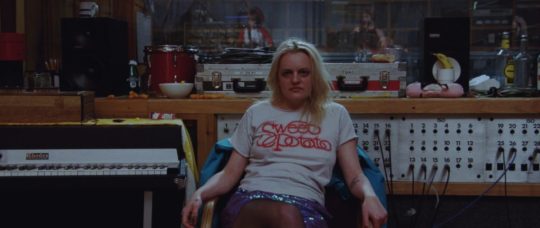
17. Her Smell (dir. Alex Ross Perry)
"I thought you were better than this, but deep down I knew you weren't."
Perry must have had some extra pent-up nastiness in him after having to restrain himself while writing Christopher Robin (by the way, that happened), because he really created one of the nastiest characters in cinema here. Her Smell is the equivalent of being locked in a room with the shittiest person you'll ever meet, as she constant lashes out at everyone and everything with the kind of delirium that the truly demented are cursed with. And credit to Elizabeth Moss where it's due: she really perfectly embodies such a horrible human being and proceeds beat you damn near to death with it during a majority of the runtime. Eventually it slows down and all of the problems become apparent once they script isn't flying by at a thousand words a minute. But Moss literally did her job so well that people fucking hate this movie because of her character, and if that isn't a testament to her acting talent than I don't know what is.

16. High Life (dir. Claire Denis)
"At 99% the speed of light, the entire sky converged before our eyes. This sensation, moving backwards even though we're moving forwards, getting further from what's getting nearer. Sometimes I just can't stand it."
Denis finally makes her English debut with what she does best: nauseatingly uncomfortable sexuality oozing from terrible people doing horrible things. In this case, she takes an innovative detour into sci-fi, setting up a decades-long story of human experimentation, murder, the horrors of space travel, and whatever unholy things are going on inside of the "Fuck Box". It has an appropriately dingy production design too; the clean retro-futurist spaceship design soon dissolves into a torn apart den of depravity, caked in a mixture of filth and dry blood. Pattinson once again manages to be likeable while also being extremely standoff-ish; only playing with his baby daughter do we seem to see him actually enjoy interacting with a human being. Kind of gets lost in the sauce near the end, but at least manages to land some surprising emotional notes considering the kind of horrors that they've shown up until then.
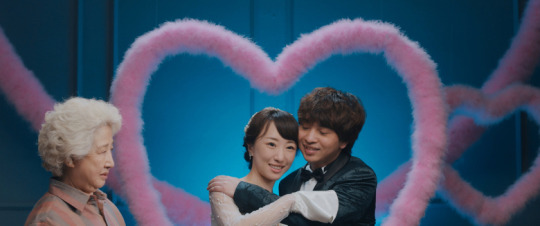
15. The Farewell (dir. Lulu Wang)
"Chinese people have saying: when people get cancer they die. It's not cancer that kills them, it's the fear."
Lulu Wang's followup to Posthumous is such a massive step up in talent it's not even funny. She manages to make such a wonderfully soulful and loving movie about impending death by utilizing near perfect comic timing to defuse a situation that threatens to stray too dark. Not to mention her point of view on modern China from a non state-sponsored eye actually captures a much more accurate shot of the country itself. It's almost as if an Edward Yang movie had set itself more modest expectations -- it's pleasant, goes down well, teaches you a couple of things about Chinese culture, and manages to do it all in only a hundred minutes. And Awkwafina manages to hold her own against far more experienced actors, even if you can tell her Mandarin is still a little spotty.

14. Uncut Gems (dir. Josh and Benny Safdie)
"I think you are the most annoying person I have ever met. I hate being with you, I hate looking at you... And if I had my way I would never see you again."
Adam Sandler's magnum opus performance -- there will never be another character that fully embraces every grating aspect of his style of acting and manages to weaponize them for two anxiety-inducing hours of hell. Sandler's Howard Ratner is an absolute sewer rat scumbag, an untrustworthy coward, and a perennial fuck-up of epic proportions. But he's still so charismatic and powerful on screen that you root for him every time he drives you further up the wall. And the Safdie brothers know how to keep him moving too, never letting the audience catch a breath of air for this movie-length panic attack as the odds stack further against Howard each minute. Whenever you see Sandler phoning in his comedies for fat checks, just remember this performance and how pretty much every awards committee completely ignored this film. No wonder he doesn't bother trying anymore.
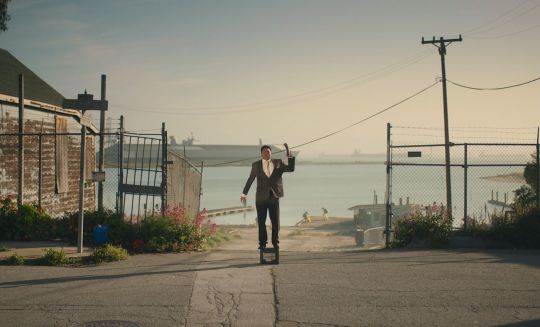
13. The Last Black Man In San Francisco (dir. Joe Talbot)
"You don't get to hate it unless you love it."
A wonderfully evocative love letter to a changing city that is so full of life in every way, from the vibrant movement of the camerawork to the bombastic and powerful soundtrack blasting throughout. But it actually plays more like a New Orleans' funeral march, a melancholic chronicle of the original denizens of San Francisco even as the city warps into the caricature that it's slowly becoming. There is a definite feeling that the aggressive gentrification is unavoidable and even the love of the original quirky denizens can only stave off the metaphorical steamroller that paves over the past. It makes for a wonderful counterpoint to the previous year's Blindspotting: both about young black men dealing with gentrification in the Bay Area, but Blindspotting starts as a very angry comic satire that eventually ends on a note of hope and a will to survive the changing tide, whereas this begins as a joyous celebration of the city and ends on a heartbreaking resignation in the face of everything. Both come from respectively very different sides of San Fran culture, but it's rather interesting seeing each have such different approaches to the same topic.
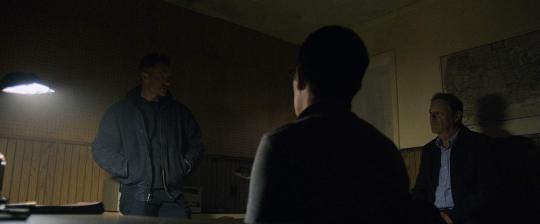
12. The Standoff at Sparrow Creek (dir. Henry Dunham)
"How do we know it's not you?"
A simple "pressure cooker" scenario done to perfection: one empty warehouse, a bunch of hardened standoff-ish militia men, a missing gun, a ticking clock, and a whole lot of suspicious side eyes and probing questions. It helps that the gruff suspects are a perfect who's who of roughened character actors, all previously well-versed in playing suspicious people, and all of them hiding the kind of unspoken rage that makes a man secretly join an armed militia. All of this told with a nerve-wracking minimalism and style as weirdly detached from reality as some of these men are. One hell of a debut for Henry Dunham and hopefully a sign of good things to come.

11. Booksmart (dir. Olivia Wilde)
"How about we play a *rousing* round of J'ACCUSE!"
Profoundly silly and yet also so disarmingly sweet, Olivia Wilde whips a wildly stylized portrait of Gen Z high-schoolers and the many ways that they vastly differ from their older peers. Certainly much more welcoming and accepting of the diversity of teenagers than pretty much any other teen movies from the past, although they still poke fun at some particular brands of modern "wokeness" too. Stuffed to the brim with wonderfully weird characters, between the lovable catty theatre duo of George and Alan, the cringe-inducing desperate rich kid Jared, the endearingly dumb thirstball Theo, the dorky and blissfully unaware queer-bait Ryan, the effortlessly cool and extremely "top energy" Hope, and the absolutely batshit wildness that is Gigi. But mainly it serves as a vehicle for Devers and Feldstein, with both bouncing perfectly back and forth off each other in moments of comedy and drama. Feldstein always pulls off huge laughs pretty much every line and Devers sells a perfect amount of baby-gay awkwardness in one of the sweetest (and heartbreaking) queer romance stories in film. But above all else, it's just so damn fun and aware of what teenagers are actually like than most movies ever have been.
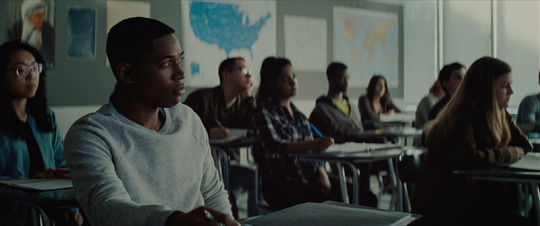
10. Luce (dir. Julius Onah)
*chuckles* "You really think I believe that stuff?"
One of the most wildly uncomfortable experiences in recent cinema history, but not due to any horrifyingly explicit graphic content being shoved in our faces. No, Onah and Lee created something much more discomforting: a constant challenging of all our biases and stereotypes, of us wanting to give chances and have faith in those that we trust. Kelvin Harrison Jr. delivers one of the best acting performances in recent memory because he's able to literally do everything; his Luce somehow manages to perfectly walk the tightrope required for a performance like his. With him behind it, Luce is such a charming, loving, likeable character but there's always just something that seems off about him. And even if Spencer's Wilson has a fixation on him that crosses all sorts of legal and moral boundaries, wouldn't we be cheering her on under different circumstances? In a way, she herself is trying to communicate a lesson about perception too, one that also mires in deep, troubling waters. Even if the film still feels very stage-y due to it's source material, the cold clinical aesthetic only further helps it make us squirm in our seats.
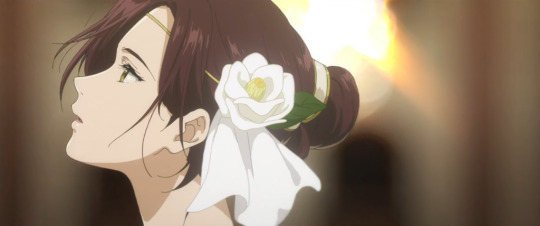
9. Violet Evergarden: Eternity and the Auto Memory Doll (dir. Haruka Fujita)
"Nobody wants a letter that cannot be delivered."
An absolutely magical experience that artistically excels over the original TV series it's based off of. The production is still as impressive as any other KyoAni work, but the composition and lighting in particular are outstanding, selling the social isolation of the first half and the childlike wonder of the second half. Beginning with a sublime Victorian romance in the first half, the story eventually morphs into a tribute to the workers of the world, the cogs in the machine. But in the context of the studio's recent history and the horrific arson attack that claimed 36 members of the studio, this instead comes off as a battlecry against the opposition against them. It's a story valuing those who are overlooked in the process of creation, a story about strong determined women, a story of a young girl defining her own future against society. KyoAni as a studio were most known for treating all their employees exceptionally as well as being a primarily female-led studio, both unfortunate exceptions in the industry as well as the target for a lot of unfair online hatred against them (and surely played some sort of role in why the arson attack happened to them specifically). To see the studio make their first post-attack work so proudly emblematic of what made them unique makes this so much more powerful than you would expect.
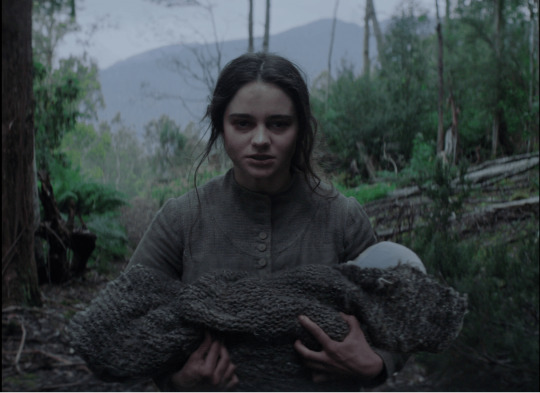
8. The Nightengale (dir. Jennifer Kent)
"You know what it's like to have a white fella take everything that you have, don't ya?"
The classic revenge fantasy narrative warped into a bleak, cynical portrait of racist cruelty in 1800s Tasmania. Jennifer Kent, improving leaps and bounds from the relatively straightforward Babadook, crafts a searing indictment of the foundations of colonialism and the misogynistic undercurrent of the barbarous society. It's a revenge movie where the vengeance is horrible and unsatisfying -- there's no crowd pleasing murderous money-shots, just brief moments of comeuppance in the face of everything in the world working against our two protagonists. Those who are squeamish should be aware that it is exceptionally graphic and grueling at times, although Kent does manage to keep up a very good pace for the two and a half hours of hell.

7. Transit (dir. Christian Petzold)
"They say that those who were left never forget. But it's not true. They have the sweet, sad songs. Pity is with them. Those who leave, no one is with them. They have no songs."
Hitchcock by way of Kafka -- a classic existential mystery told in a disorienting separate reality not quite like our own. It's a bold move to take a Holocaust set narrative and completely throw out the actual setting itself, but Petzold only enhances the weird themes of the story by taking it to a completely different but still very familiar time. This is a classic tale of becoming the person you say you are but really aren't -- then begging the question of what if you're not the only one also living a false identity. Buoyed by an excellent and very enigmatic lead performance from Franz Rogowski, who displays a tremendous skill for playing somebody so closed off but also very charismatic and watchable.

6. Once Upon a Time... in Hollywood (dir. Quentin Tarantino)
"When you come to the end of the line, with a buddy who is more than a brother and a little less than a wife, getting blind drunk together is really the only way to say farewell."
Tarantino trades in his B-movie worship and penchant for comical bloodbaths (well, for the most part) to make something I certainly didn't expect from him: a relaxed hangout movie about getting old and falling out of fashion. Exceptional production design whisks us away to the height of Hollywood and three different people all looking at their future careers in very different lights. Leo gets to stretch his wings in all sorts of silly fun ways and Brad Pitt finally lets go of the young superstar image and easily slips into his more natural "hot single dad" swagger, playing the most effortlessly cool character of his career. Tarantino sets aside time to look back on his own flaws as well and playfully reflects on his own particular ...quirks. Easily his best since his 90s prime and the first time in a long time I've felt the maturity that he showcased in Jackie Brown.
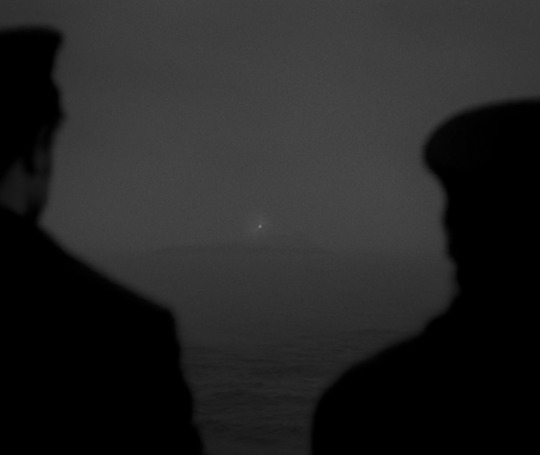
5. The Lighthouse (dir. Robert Eggers)
"Damn ye! Let Neptune strike ye dead Winslow! HAAARK!"
Hyper-masculine mania as told through a wonderful blend of dark comedy and cosmic horror and with some of the most lush black-and-white cinematography maybe ever in a film. Eggers' now trademark devotion to absolute accurate period detail in both visual design and dialogue greatly helps this reach transcendent heights. But it's truly the two performances of Dafoe and Pattinson that help it weave a perfect spiral of insanity that also manages to be so oddly fun. Never could there be any other paring of actors that would perfectly showcase these two dirty sea-dogs going stark raving mad at each other so well.
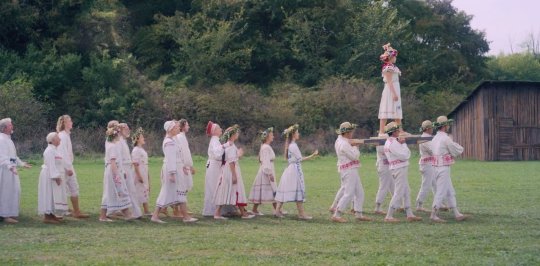
4. Midsommar (dir. Ari Aster)
"As Hårga takes, so Hårga also gives."
(Director's Cut)
Every generation deserves their own paranoia-fueled pagan horrorshow, but Aster strikes a much deeper vein in his epic take on the classic territory The Wicker Man had previously claimed. The brutal rituals of the Hårga are only set dressing most of the time, with much more focus poured into the vile toxicity plaguing the relationship between students Dani and Christian. Reynor's Christian is such a perfect portrayal of a terrible influence -- he's charming, fun, and likeable when he's on your side, but the second anybody goes against him his seedy manipulation begins to seep into everything he says. Pugh continues her winning streak too, delivering a broken person desperately trying to put a smile on while falling apart on the inside as she realizes she truly is all alone in the world. While some might be disappointed by the lack of actual "terror" for a good chunk of the movie, Aster has found something much more likely to scar us than these friendly Swedish cultists.
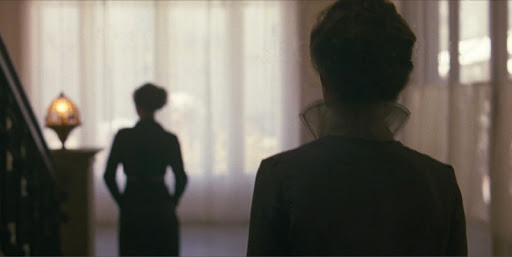
3. Sunset (dir. László Nemes)
"The horror of the world hides behind these infinitely pretty things."
After striking gold with Son of Saul, Laszlo Nemes takes a hard turn into a very different genre but manages to create a wonderfully unique spin on classic detective noir. His signature camerawork powers this yarn, successfully taking the claustrophobic eye of Saul and using it to give a truly immersive sense of place in the tumultuous world of 1913 Budapest, where danger is simmering under the surface and ready to boil over at any moment. After all, noir is always about the eye of the detective, so Nemes' style takes it to a literal degree where everything outside of Irisz' field of vision is incomprehensible. We catch the same shady sideways glances and hushed whispers at the same time she does too. The plotting, like all noir tales, gets a little too complex for its own good, although it's less because of double-crossing and deceit and more from the story slowly dropping its connection to reality to function on a far more allegorical level. But as far as immersive, experiential cinema goes, not even 1917 can stack up to this film's highs, as the enraged lower-class populace eventually comes for the heads of the bourgeoise and Irisz suddenly realizes she is in the very wrong place at the very wrong time.
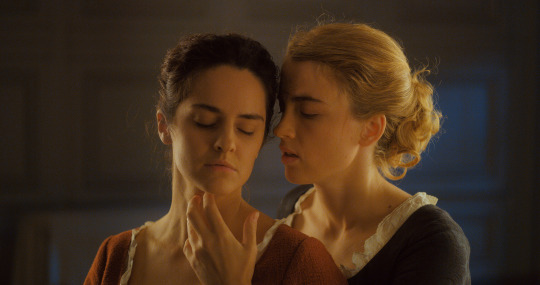
2. Portrait of a Lady on Fire (dir. Céline Sciamma)
"Do all lovers feel they're inventing something?"
An absolutely breathtaking portrait (hehe) of yearning and love, so astonishingly romantic and actually aware of what will make a woman swoon. Every technical aspect is perfect, from the gorgeous locale to the lovely windswept dresses to the soft, classical cinematography. But the true magic comes from Merlant and Haenel perfectly delivering every line of Sciamma's wonderous script. Those two have a sexual tension strong enough to burn down the theater, as their shy glances turn into deep longing stares and both their steely professional reserves give way to poorly suppressed joy at just being able to be with the other. Even their initial terse dialogue melts into pure romantic splendor, as they lovingly catalog all the little gestures the other does when flustered. Their connection during filming was powerful enough to fuel rumors around the two in the press and is currently providing the desire for every thirsty lesbian who finishes this to immediately pull up videos from the press tour and hunt for those same things between the actors themselves. And trust me, they are there.

1. Parasite (dir. Bong Joon-ho)
"Not 'rich but still nice.' Nice because she's rich, you know? Hell, if I had all this money, I'd be nice too!"
Very rarely does a film come along that actually warrants to be described as "perfect", as in one that literally generates no critiques in any way even if I was forced to pick something at gunpoint to complain about. But Parasite truly does every single thing right. Even Bong's tonal whiplash style, which does grate on me at times, somehow fits perfectly here as the schemes become increasingly madcap and the increasing sense that this will all come crashing down horribly mounts ever higher. Until then, it's an absolute joy to watch in every way, as Bong stacks the card deck higher and all the characters dive further into the sewer for their own benefit. The midpoint pivot works wonderfully too, as it goes to show that literally every person is getting played in the world of Parasite. It's massive success is only surprising to those who haven't seen it: it's the perfect movie for the era it came out in and may as well be the watershed moment for a new age of cinema where Hollywood finally admits that it's not the king of the world anymore.
#top 25#2019 in film#parasite#portrait of a lady on fire#sunset#midsommar#lighthouse#fuck capitalism
1 note
·
View note
Text
AFI Fest 2020 Features Some of the Year’s Best Films
https://ift.tt/2RPN4hK
This year, like just about every other film festival that managed to put on some kind of show in 2020, the 34th annual AFI Fest went nearly all-virtual. The yearly American Film Institute event, which usually combines major studio and independent releases, bypassed its usual eight-day blitz at the famous TCL Chinese Theatre complex in Hollywood for an online simulacrum that did not perhaps offer up the same glittering premieres and major studio contenders as in past years, but still managed to offer up a number of superb offerings.
“Attending” a film festival from one’s desk or couch can be a tricky proposition, so it remains to be seen how successful AFI Fest was overall with paying audiences (screenings were ticketed for the public). But as with other such events we’ve experienced this year, like Fantasia, the technical aspects were flawless and the ease of use and screening windows made the event largely stress-free. And we saw some truly extraordinary films, some premiering for the first time, and others coming from other festivals we missed. Check them all out below.
Anthony Hopkins and Riz Ahmed Lead Parade of Talent at AFI Fest
The Father
The best film we saw at AFI Fest was The Father, director and screenwriter Florian Zeller’s adaptation of his own stage play. Anthony Hopkins stars as Anthony, an elderly English man who is suffering from the onset of dementia. Olivia Colman is his daughter Anne, who is planning a move to Paris to live with her partner and is desperately trying to find a new caregiver for her father after he scared off the last one.
But as the film goes on, the viewer begins to wonder what is actually happening? People drift in and out of the narrative under different names, Anthony’s spacious apartment seems to change around him, and time itself seems to bend. Then we realize: we are seeing almost all the events from his point-of-view, which means that none of what we see can truly be trusted–making what could have been a conventional drama about illness and memory into something brilliant.
That realization, coupled with absolutely heartbreaking work from Hopkins and Colman, makes The Father a devastating look at a slow-motion nightmare from which there is no escape. Anthony (the character) is at once recognizable as a certain kind of man (and as such is both charming and mean-spirited), and the legendary actor (we swear we saw a flash of Hannibal Lecter in there at one point), makes his long, slow descent into an unmoored new reality even more profound. A nearly perfect film. (5 Stars)
Sound of Metal
Just as The Father brings us inside the world of someone in the grip of dementia, Sound of Metal gives us an up close look at what it feels like to suddenly go deaf. Riz Ahmed is excellent as Ruben, a recovering drug addict who drums in a heavy metal duo alongside his girlfriend, singer/guitarist Lou (Olivia Cooke). The two tour the indie rock circuit in a beat-up but cozy RV that also serves as their home. However, their gypsy lifestyle is upended when Ruben abruptly loses his hearing.
Director Darius Marder (who co-wrote the script with Abraham Marder) does not give into sentimentality, even as Ruben moves through grief, loss, denial, anger and self-pity, all the while clinging to the possibility that he may find a surgical way to restore his hearing. His journey also takes him to a home for deaf people in recovery (headed up by the marvelous Paul Raci, whose own life story involving deafness is remarkable), and eventually opens his heart and mind–at least a little–to the understanding that he can still live a fulfilling life. The excellent sound design is the final touch on a captivating and highly original story. (4 Stars)
Nine Days
Winston Duke (Black Panther), Zazie Beetz (Deadpool 2), and Benedict Wong (Doctor Strange) star in this striking directorial debut from Edson Oda, who also wrote the script. Duke, one of our favorite up-and-coming actors, plays Will, an enigmatic being who once lived on Earth as a human and now decides which souls get their chance to proceed to do the same. When a slot becomes available due to an unexpected death, Will and his colleague Kyo (Wong) welcome five new applicants to their way station, one of whom (Beetz) challenges Will’s method of selecting a new soul.
Based on the concept alone, Nine Days would make an interesting double feature with Pixar’s upcoming Soul. The film touches on a number of sophisticated ideas about what defines humanity and what it means to live, doing so in a compelling and deeply moving way. Duke, Wong and Beetz are all excellent, as are Tony Hale (Veep), Bill Skarsgard (It), and Erika Vasquez as fellow applicants. This is a surreal fantasy that strikes at some truths about how we live. (4 Stars)
New Order (Nuevo Orden)
The sixth film from Mexican writer-director Michel Franco is less than 90 minutes long but will leave you battered and devastated. As a wealthy “white” family celebrates the marriage of their daughter with other upper class guests at their posh estate, trouble is brewing in the streets of Mexico City. The “brown” workers, including people toiling away at the wedding itself, erupt into a furious revolution in which almost no one is spared. But the forces behind the seemingly spontaneous uprising may not be what they seem.
Franco spares no one in this harrowing and absolutely relevant descent into societal breakdown, as the screen fills with the screams of the tortured, the murder of women and children, and the flames of burning bodies. He may cut away at the last minute in key instances, but you are fully aware of what’s happening nonetheless. The film’s hard-nosed approach extends to the motivations behind the chaos, which are more opaque and not as straightforward as one might expect. New Order will leave you shaken and disturbed–as it should. This may not be science fiction. (4 Stars)
Belushi
The first major documentary on the life and career of late comedian and Saturday Night Live alumnus John Belushi touches as expected on all the personal history, creative development, and psychological complexity of a man who many consider one of the great comic geniuses of his time. With many of the interviews with key people done as audio only (for an oral history project), director R.J. Cutler fills in the visual blanks with animation, excerpts from private letters, and various film and video clips, creating a shaggy, kaleidoscopic vision of a too-brief and just as frenetic life.
Since Belushi’s career is well-documented (although it’s weird to realize he only starred in seven films), and the circumstances of his death sadly all too predictable, what stands out most about the film is the central relationship with his wife Judy, who provided an anchor even when Belushi self-destructively pushed her away. Belushi the movie doesn’t offer many surprises beyond that, but does make us wonder what he might have done had he stuck around. (3.5 Stars)
I’m Your Woman
Rachel Brosnahan (The Marvelous Mrs. Maisel) stars in this new melodrama from Fast Color helmer Julia Hart, who weaves themes of motherhood, loyalty, love, and family into a 1970s crime thriller with a decidedly feminist bent. Brosnahan plays Jean, whose sheltered life as the wife of professional thief Eddie (Bill Heck) is upended by his gifting her with a baby (not hers) and then disappearing shortly thereafter. Jean learns that Eddie has betrayed his boss and that she and the baby must go on the run, with help coming from a surprising source.
I’m Your Woman kicks off in bracing fashion, laying out the contours of Jean’s dreamlike, aimless life, then ripping it all out from under her in a gritty, fast-paced first half. But the movie nearly grinds to a halt in its second hour, with a lot of exposition and some confusing narrative strands slowly letting the air out of the proceedings. Brosnahan is great in as a woman who must finally fill in the blanks of her own life, with excellent work as well from Marsha Stephanie Blake and Arinzè Kene as unexpected allies, but the movie doesn’t achieve the triumphant moment it’s striving for. (3 Stars)
Apples
This Greek dystopian fable could serve in some ways as a more metaphorical companion piece to The Father. A product of Greece’s recent wave of “weird” filmmaking (led by Yorgos Lanthimos of Dogtooth and The Favourite fame), this debut from director and co-writer Christos Nikou is set in an Athens where a strange virus is causing people to experience abrupt and almost total memory loss. There’s no cure and no one recovers, and while some amnesiacs are claimed by their families, others become part of a program to give the afflicted a chance at starting a new life.
Read more
Movies
Toronto International Film Festival 2020 Movie Round-Up
By David Crow
Movies
New Horror and Sci-Fi Movies Break Out at Fantasia Fest
By Don Kaye
Two of those in the latter category are Aris (Aris Servetalis) and Anna (Sofia Georgovassili), who try to recall the past while attempting to build a new future. He’s as melancholy as she is cheerful, and their different approaches are indicative of the ways all of us might face having our entire existence rebooted. Apples takes turns being absurd, sweet, and poignant, and while it’s a bit too self-consciously strange, it’s a touching twist on classics like Eternal Sunshine of the Spotless Mind. (3.5 Stars)
Uncle Frank
Six Feet Under and True Blood creator Alan Ball has written and directed this intimate look at a New York University professor (Paul Bettany of WandaVision) who finally comes out to his semi-estranged South Carolina family when he returns home for the funeral of his father. Frank is aided in his efforts by his niece Beth (Sophia Lillis of It), who has always admired her worldly uncle, but didn’t even know his secret herself until attending NYU as well.
Bettany is fantastic, and supported by strong work from Lillis and Peter Macdissi as his longtime partner Walid. But there’s something that feels pre-programmed about the way the plot proceeds, and the film’s last half-hour goes off the rails in overwrought fashion. The engaging cast, led by Bettany’s dignity and humanity, steer it back however. (3.5 Stars)
One Night in Miami…
You can read a much more comprehensive review of Watchmen star Regina King’s directorial debut here, where movies section editor David Crow liked the movie a bit more than us. But after a slow start, there’s no denying that One Night in Miami… (adapted by Soul co-writer Kemp Powers from his play) builds to a powerful and inspiring finish.
Powers’ scenario envisions what happened on the night that Cassius Clay (El Goree), Malcolm X (Kingsley Ben-Adir), Sam Cooke (Leslie Odom Jr.), and football star Jim Brown (Aldis Hodge) all assembled in a motel room after Clay defeated Sonny Liston for the heavyweight championship. King can’t quite escape the movie’s origins as a play, but she projects confidence behind the camera and gets distinctive performances out of her four stars. Goree and Hodge are the strongest, but Ben-Adir’s doomed civil rights leader and Odom Jr.’s introverted singer are the heart of this timely story. (3.5 Stars)
The Intruder
A voiceover actress named Ines (Erica Rivas) has her vacation cut short by a tragic occurrence and comes home to find that the incident may have lasting supernatural repercussions in this low-energy chiller from Argentinian director Natalia Meta. The brooding atmosphere and sound studio setting seem almost like a deliberate nod to Peter Strickland’s eerie Berberian Sound Studio (2012), but Meta’s script can’t navigate the blurring lines between fantasy and reality as successfully.
The result is a movie that badly wants to be socially relevant enhanced horror but ends up being a sleepy letdown. Meta and the great Cecilia Roth as her mother both do their best, but there’s not enough substance to the story or Meta’s premise, and the scare tactics are predictable. (2 Stars)
Wander Darkly
We are mystified at the praise that this film has received since premiering at the Sundance Film Festival earlier this year, as we found it to be a confusing, pretentious mess. Sienna Miller and Diego Luna star as a young couple, with a house, a baby, not a lot of money, a growing distrust of each other, and all the pressure that brings to bear. Then their lives are changed in a horrific car accident from which Miller wakes up and begins a surreal journey through the couple’s past, with Luna as her guide.
Is Miller dead? Is she dreaming? The movie keeps the truth hidden but director/writer Tara Miele’s experimental non-linear narrative doesn’t pay off. The hopping through time and space is incoherent, even within its own rules (which are not clear either), and as a result the movie doesn’t build to anything emotionally true. The horror movie subplot and big “twist” at the end are also weak. Miller and Luna are both spellbinding, and have real chemistry, but they can’t save the film. (2 Stars)
The Boy Behind the Door
Two 12-year-old boys (Lonnie Chavis and Ezra Dewey) are kidnapped by a pair of what appear to be human sex traffickers in the tense opening moments of first-time directors David Charbonier and Justin Powell’s dark, dark thriller. Kevin (Dewey) is chained up inside the pair’s sinister house, which sits adjacent to an oil field; Bobby (Chavis) manages to escape from the trunk of their car, but valiantly enters the house to save his friend, knowing that at least one of their kidnappers is still inside.
After that gripping start, The Boy Behind the Door plunges further into inanity. The two boys are marvelous, but their characters are barely developed and the villains even less so. Stupid actions and implausible plot developments drain any believability out of what could have been a riveting tale, turning it into a subpar slasher movie that doesn’t even seem to know when it’s set: the boys don’t have mobile devices, yet Bobby treats an old rotary phone that he discovers like a find from an archaeological dig. Good cinematography and atmosphere can’t save this one from slamming shut on itself. (2 Stars)
cnx.cmd.push(function() { cnx({ playerId: "106e33c0-3911-473c-b599-b1426db57530", }).render("0270c398a82f44f49c23c16122516796"); });
The post AFI Fest 2020 Features Some of the Year’s Best Films appeared first on Den of Geek.
from Den of Geek https://ift.tt/3e3amuP
0 notes